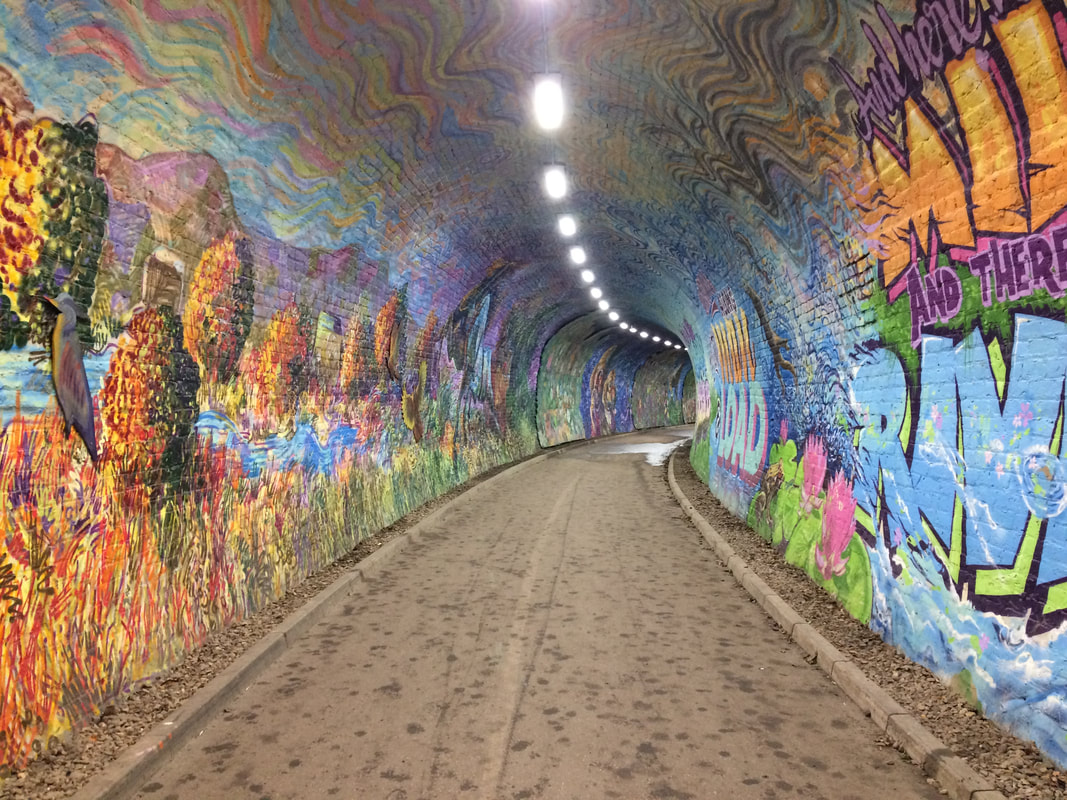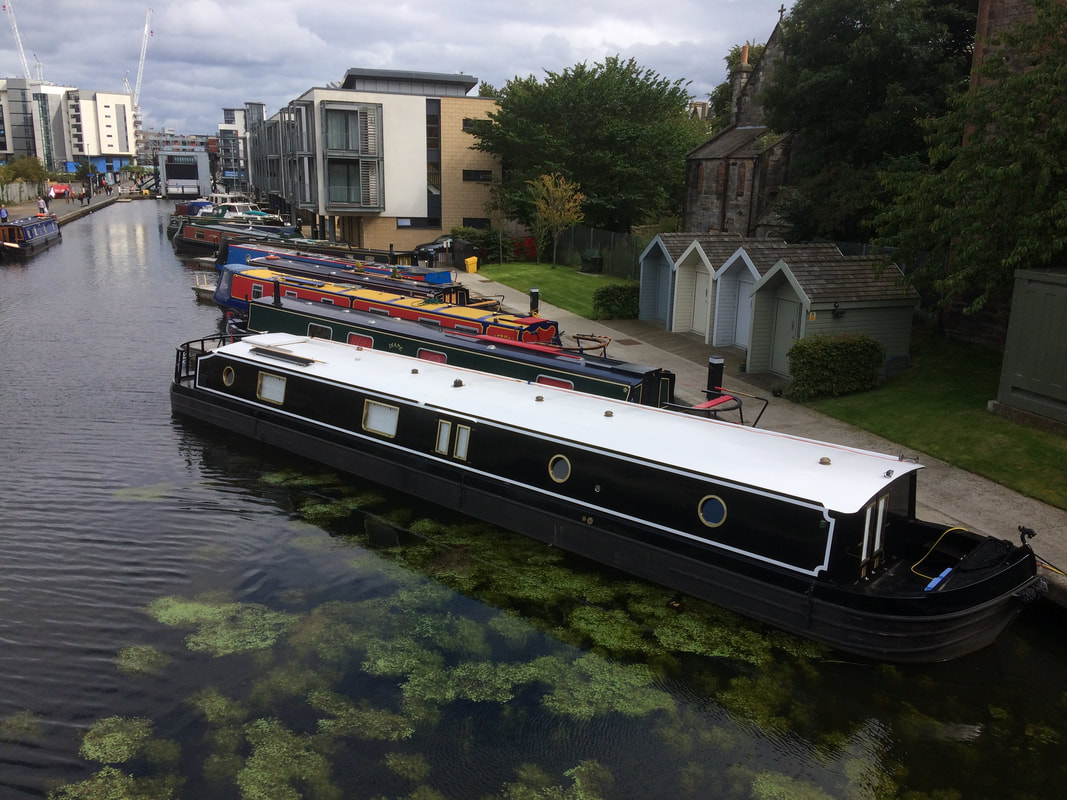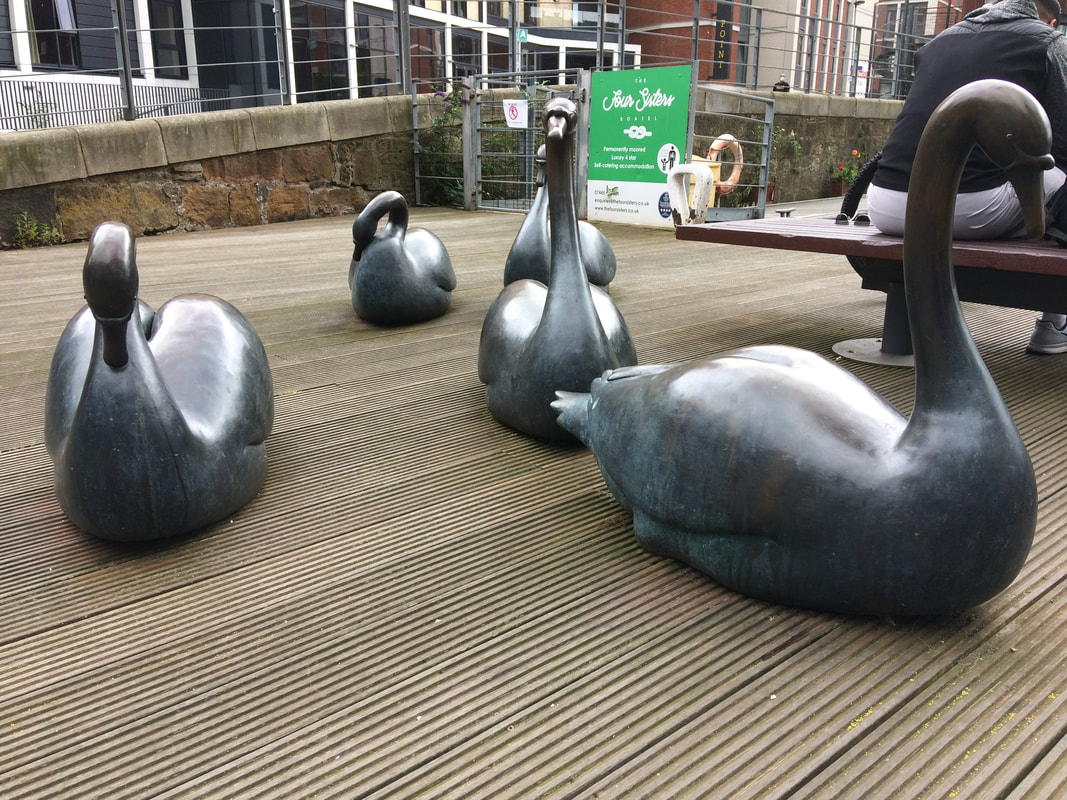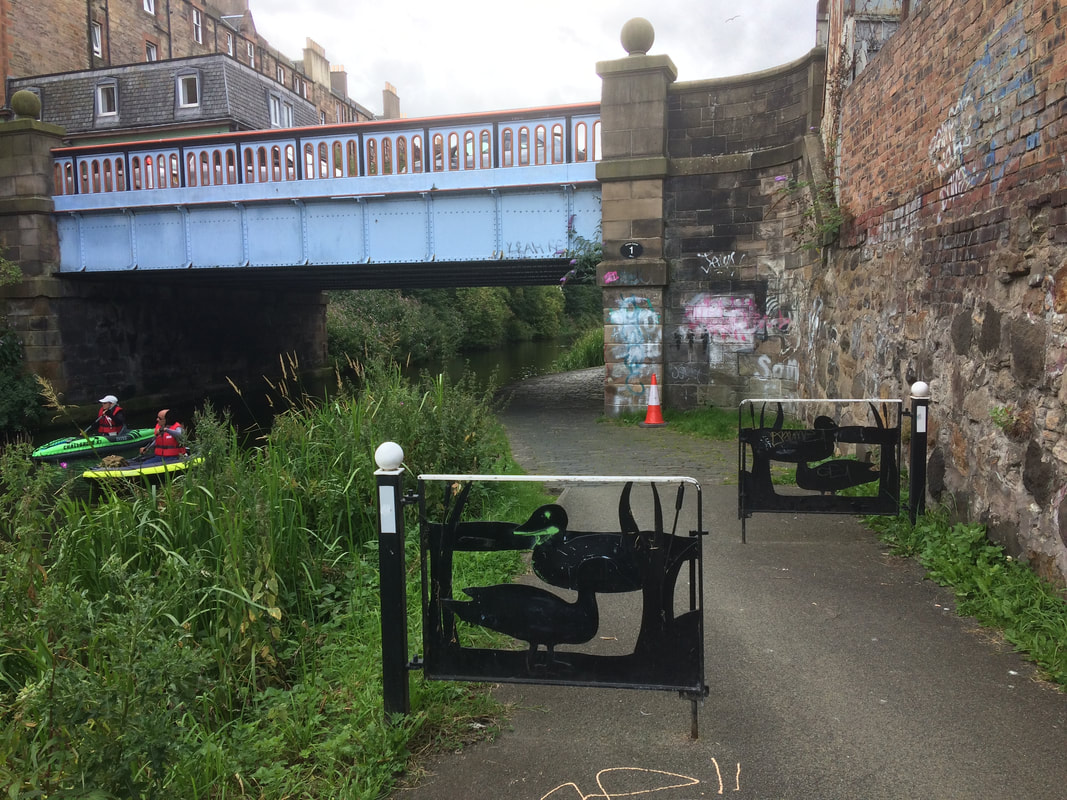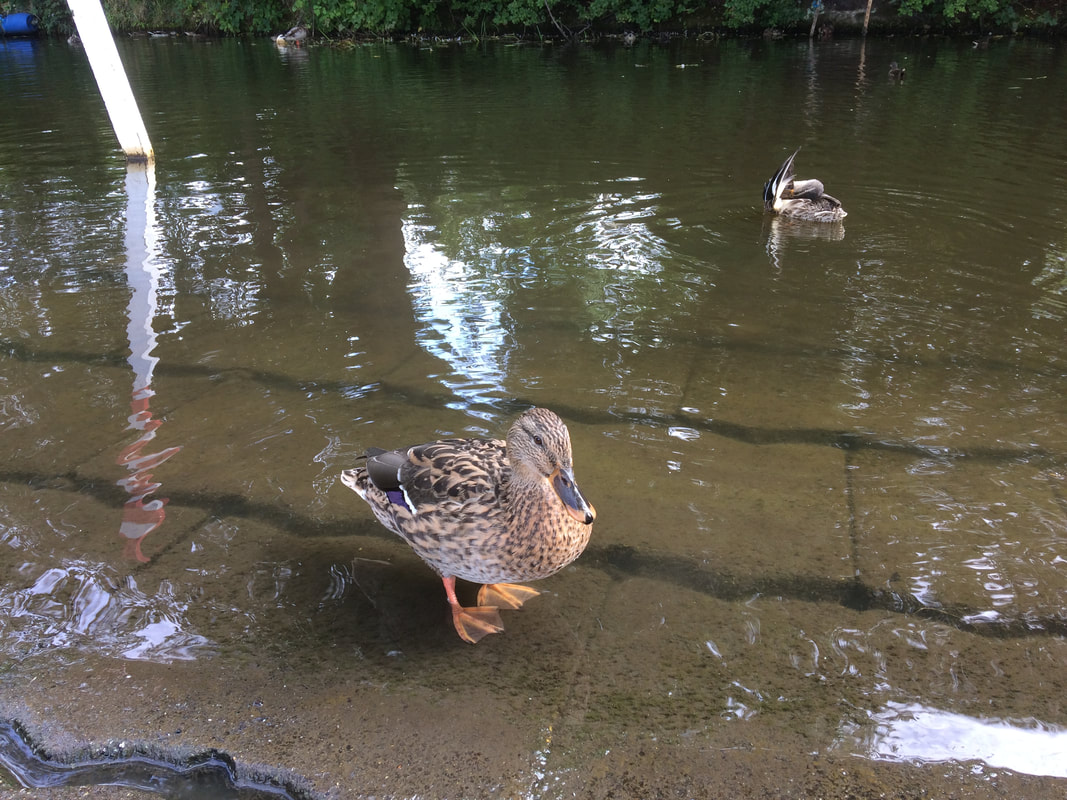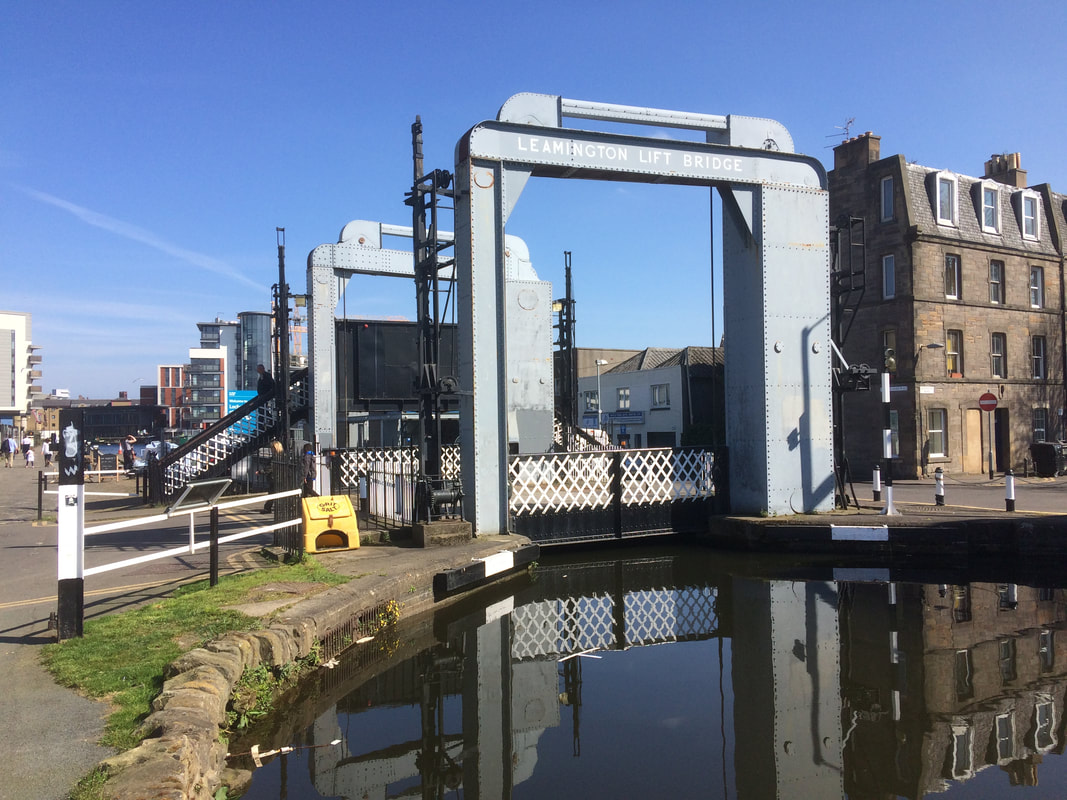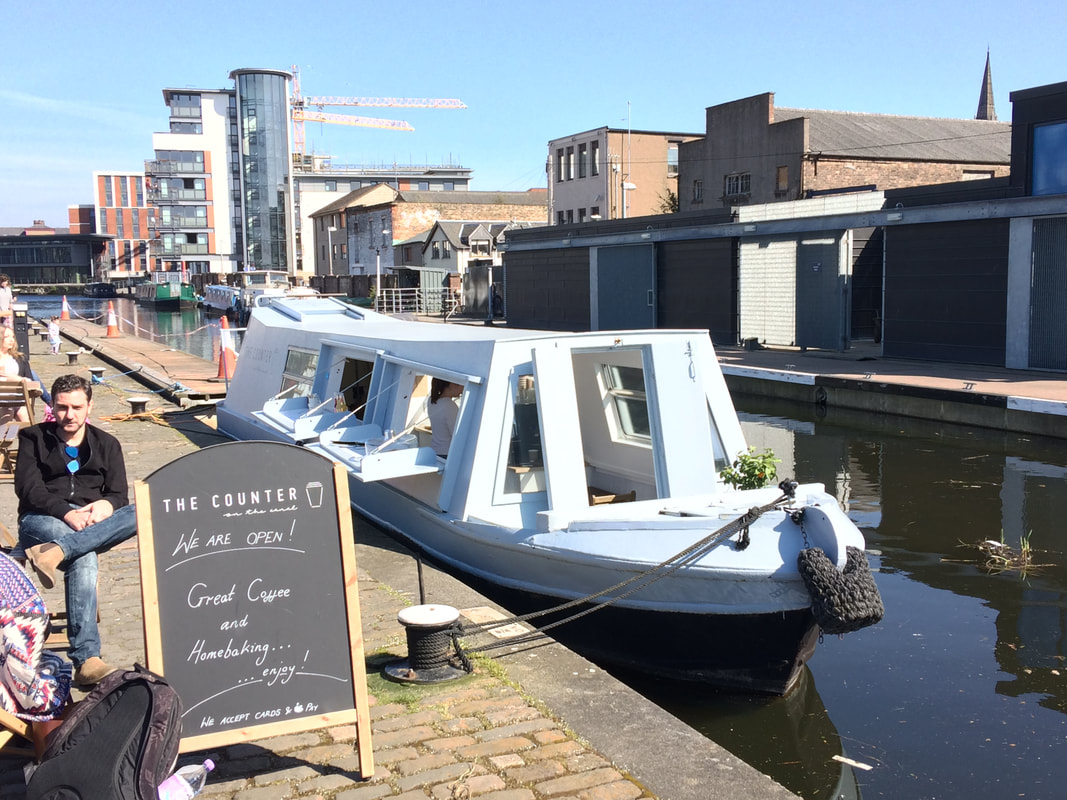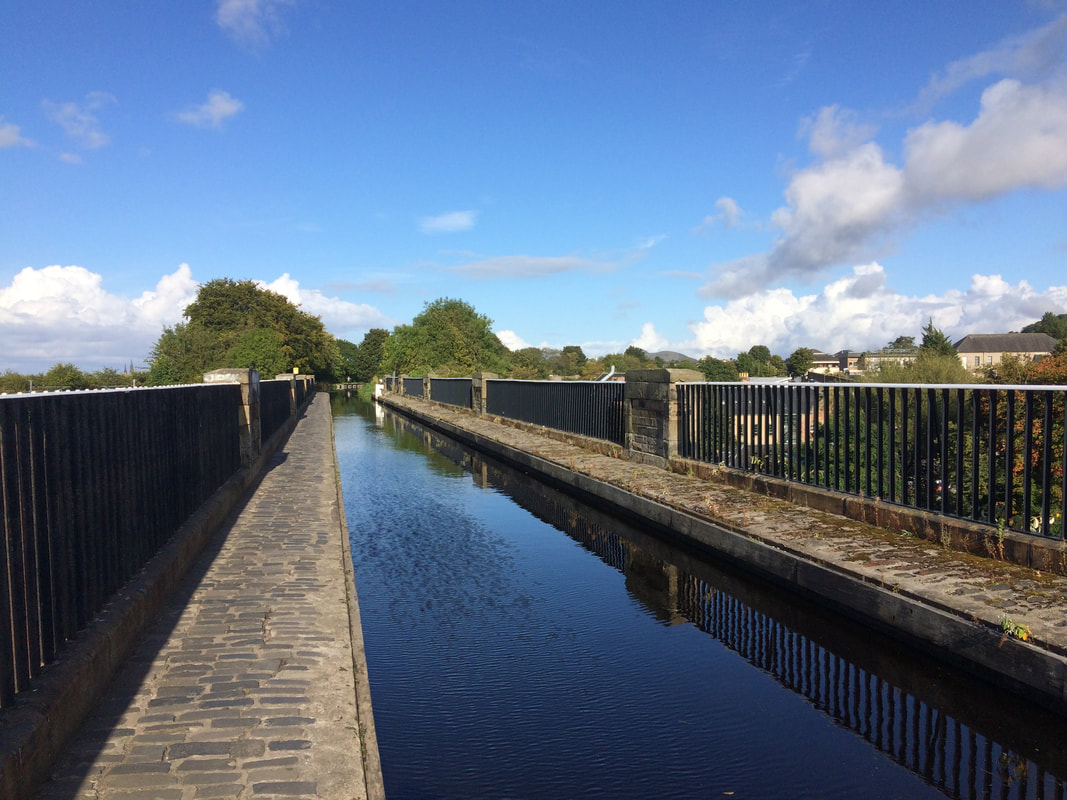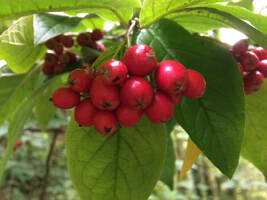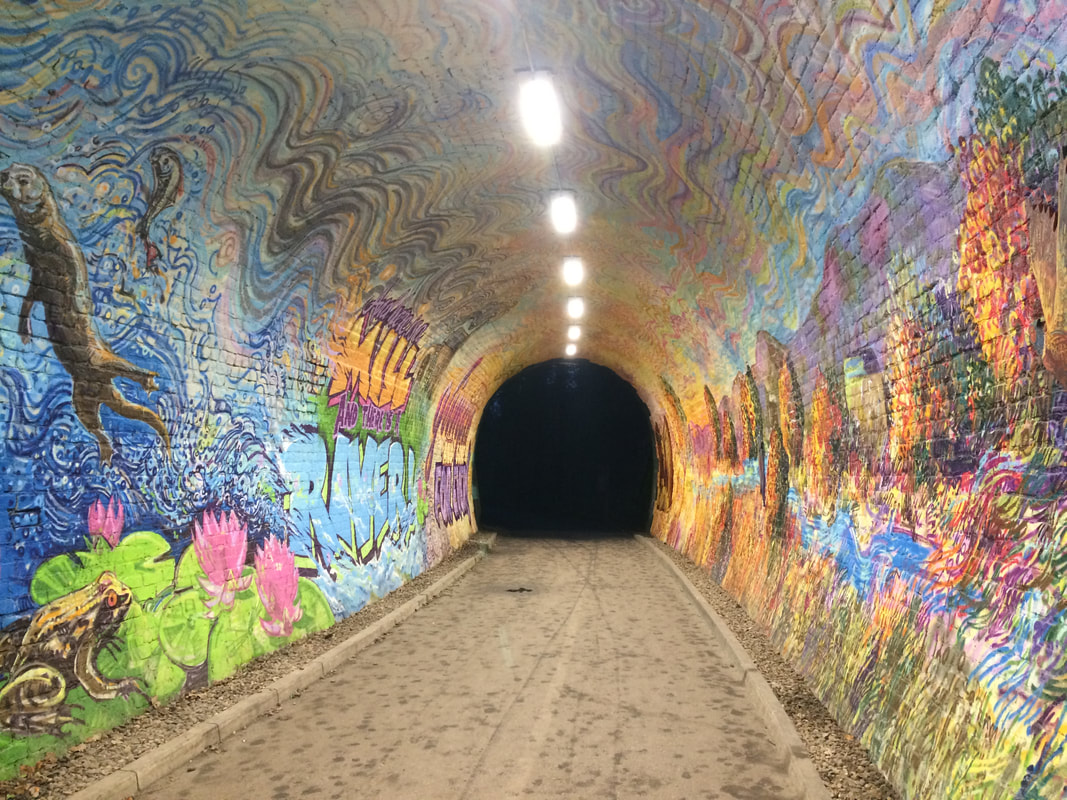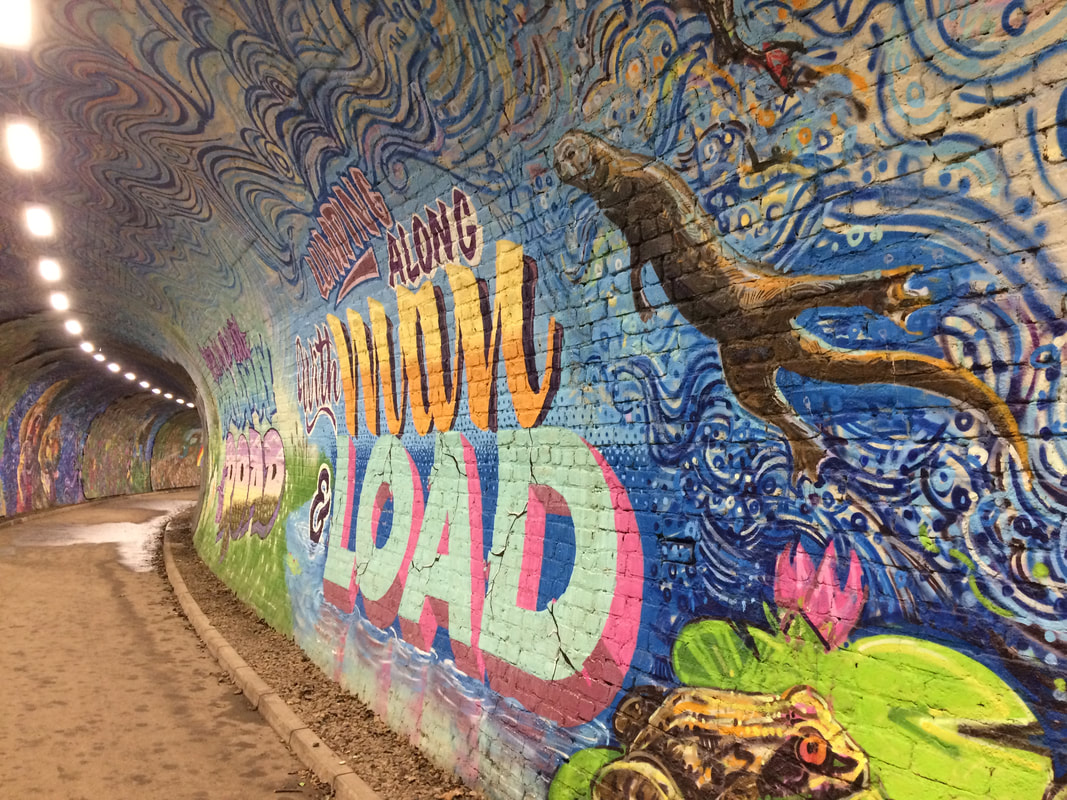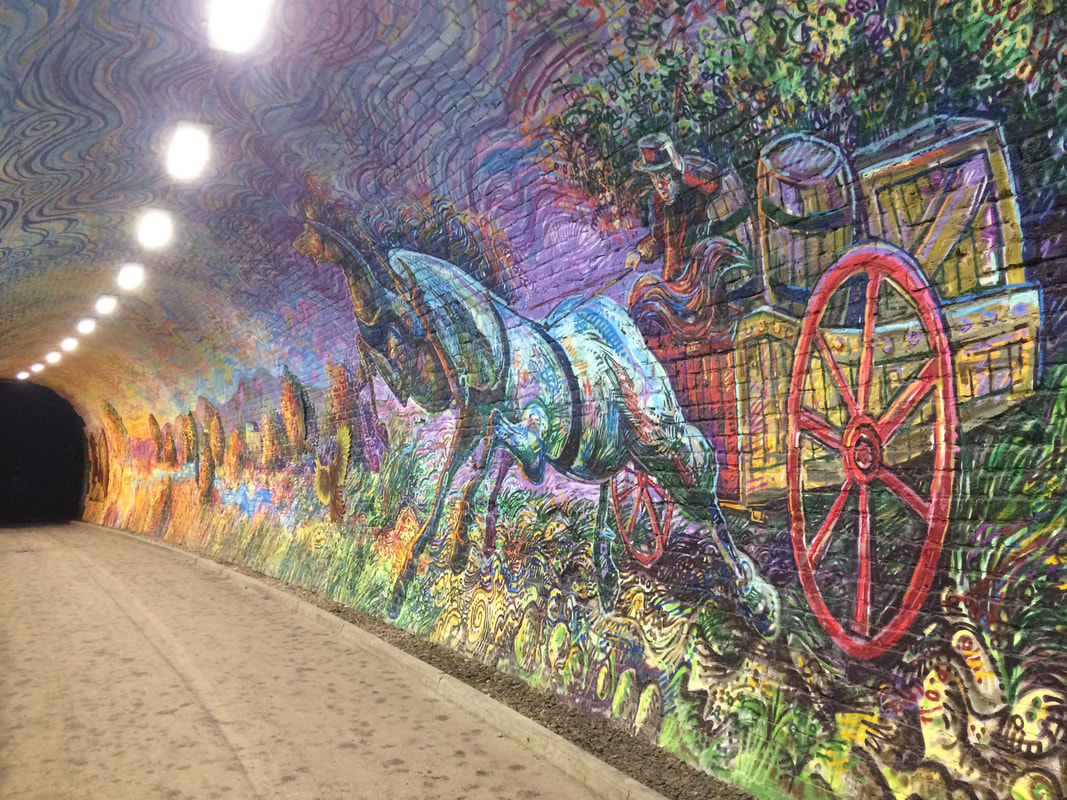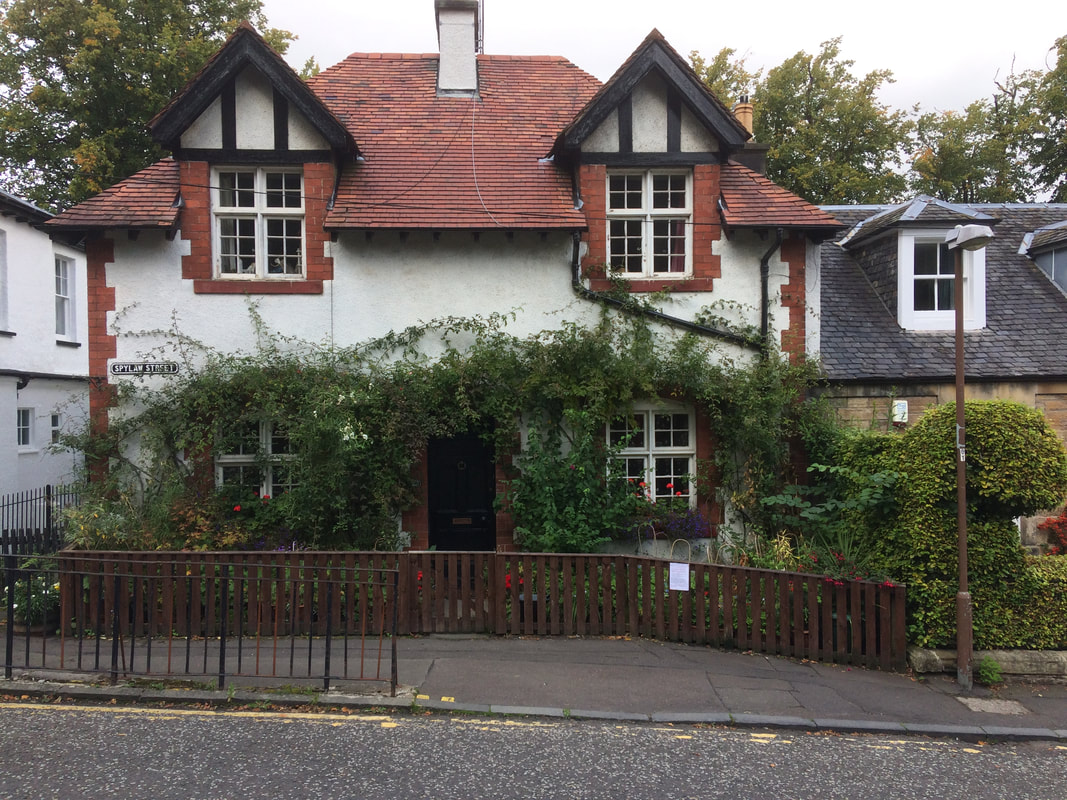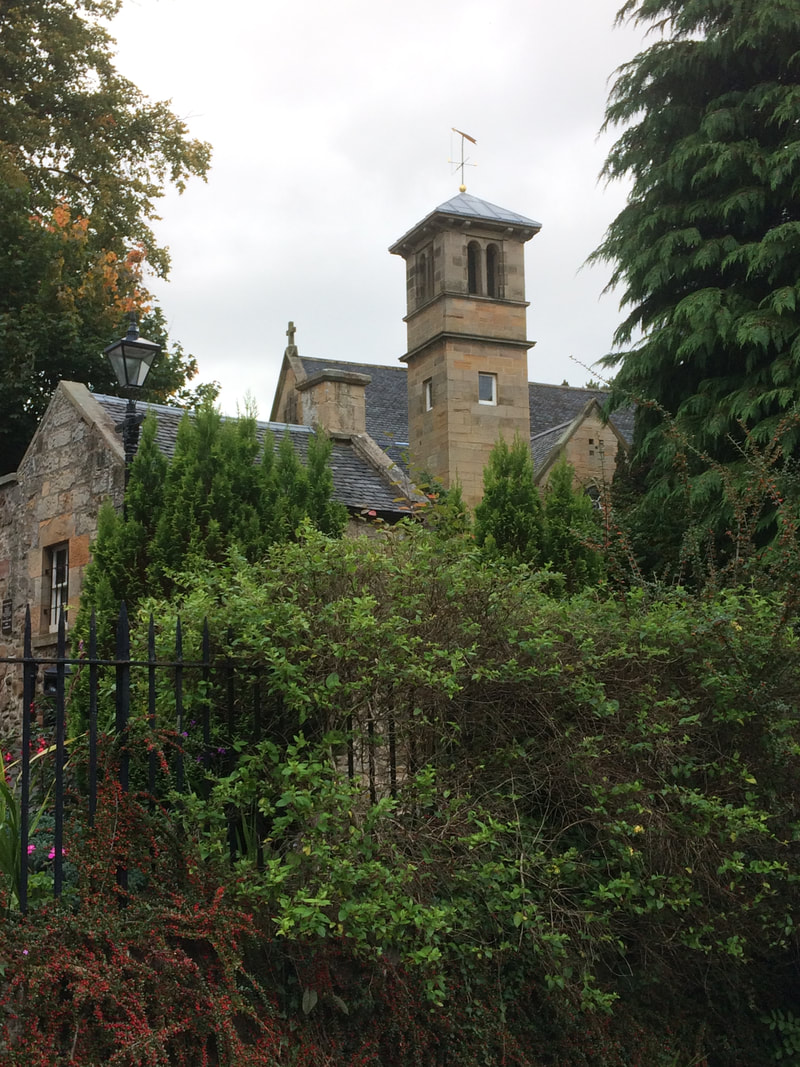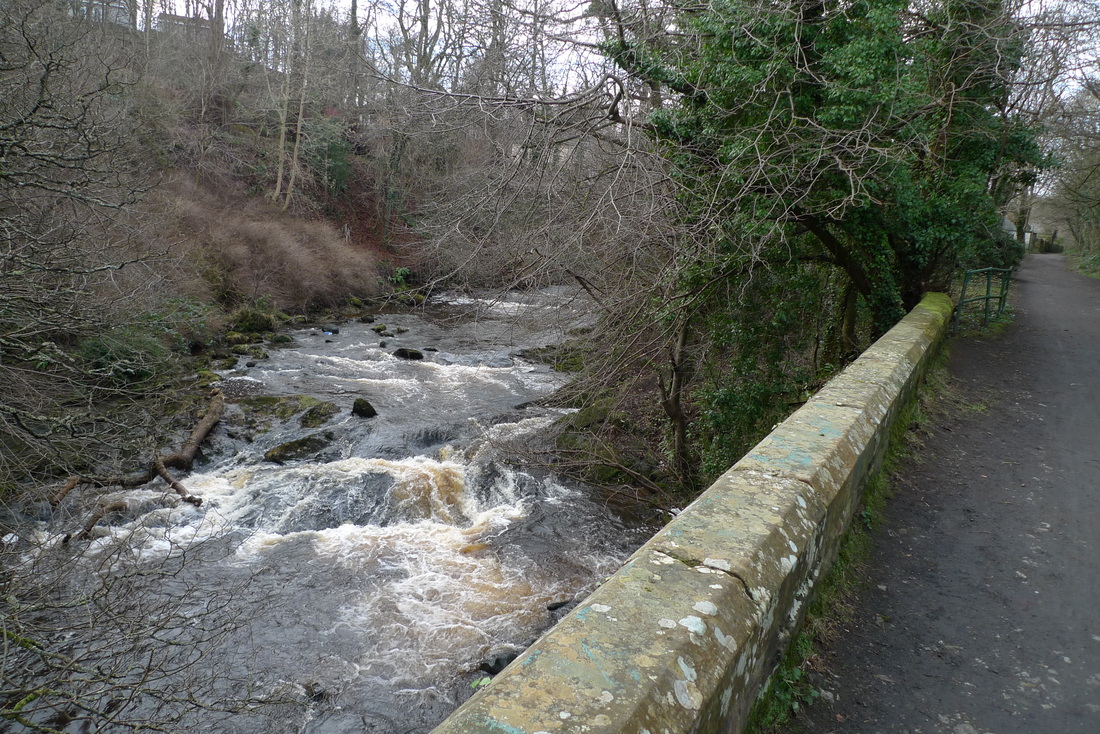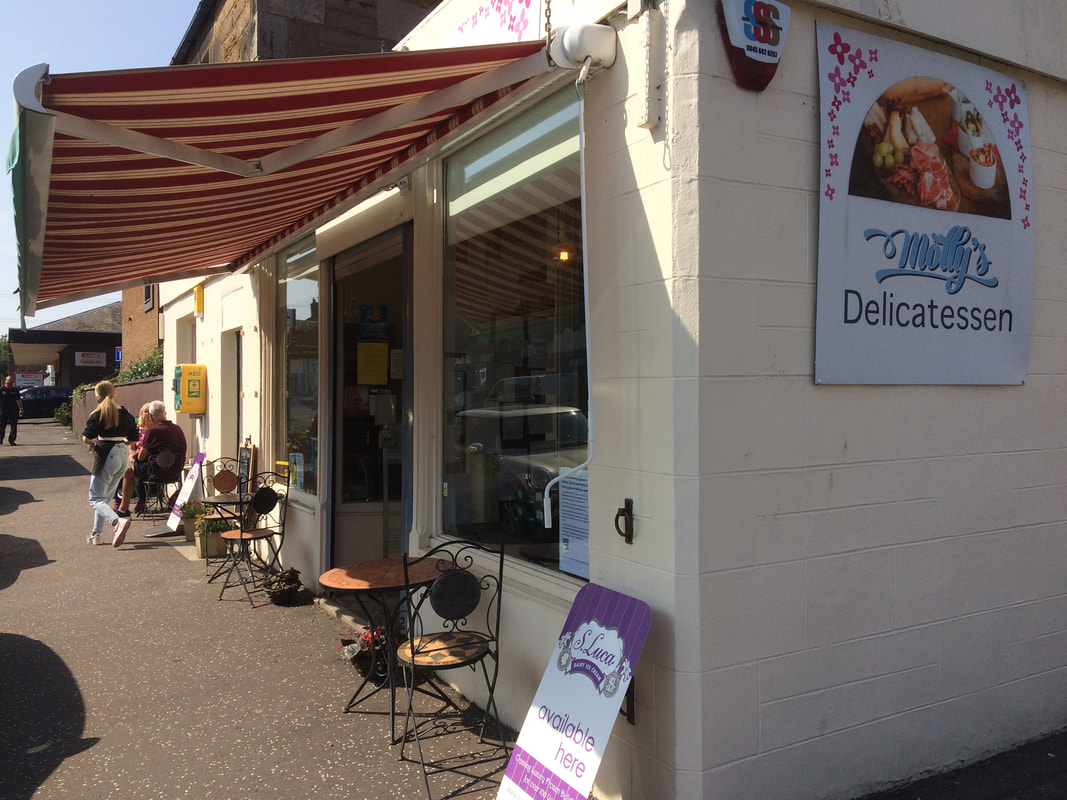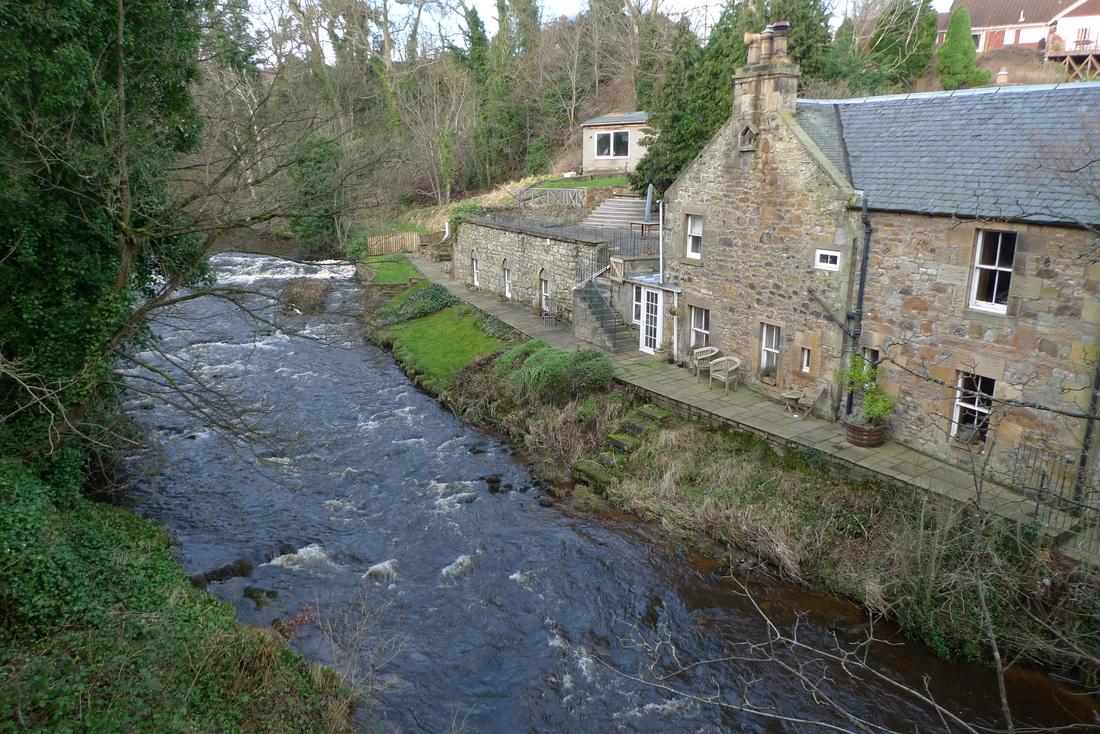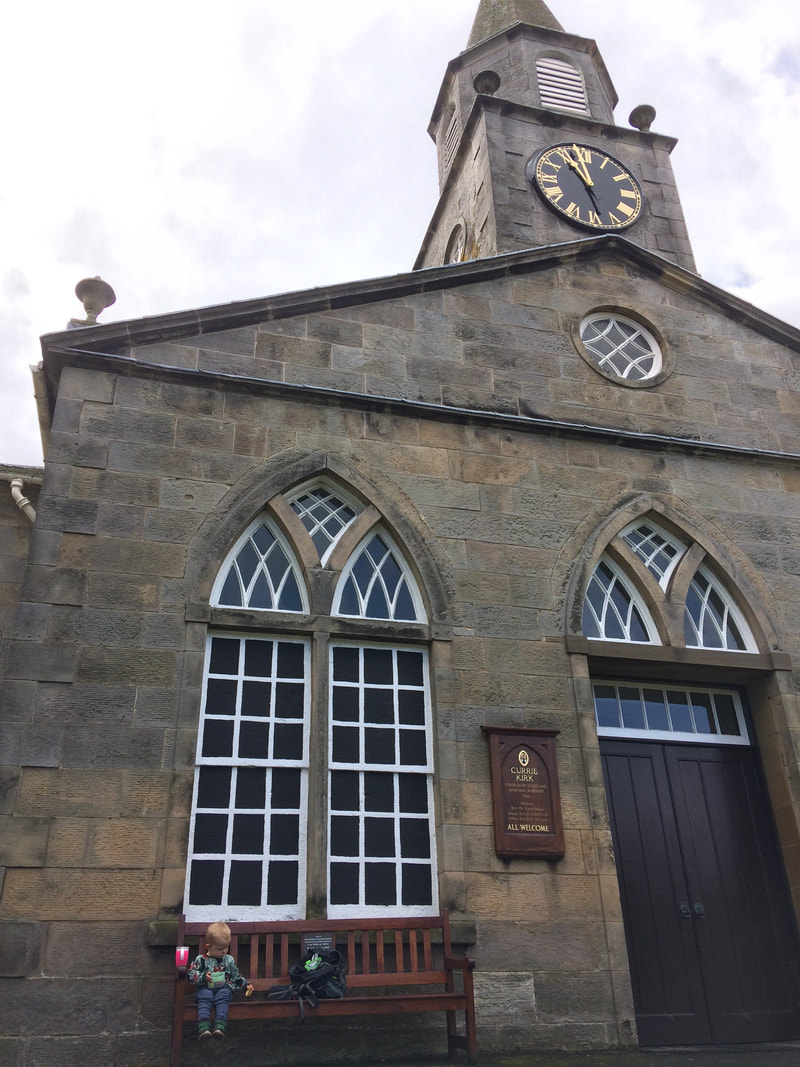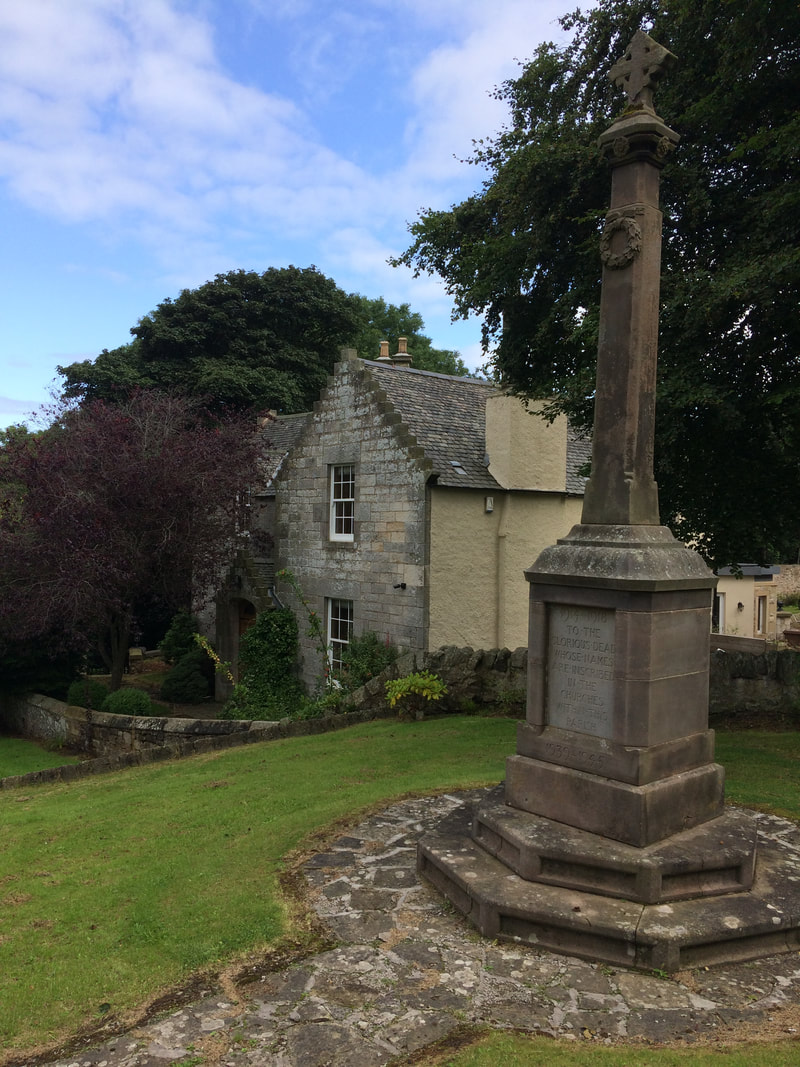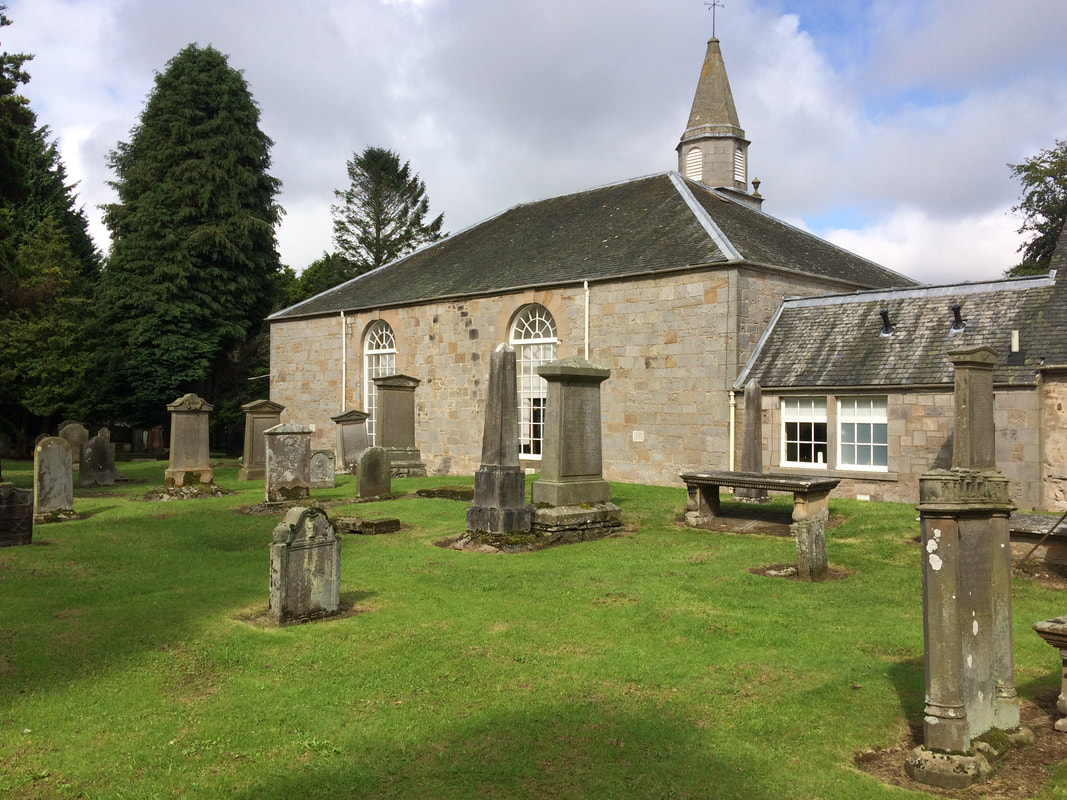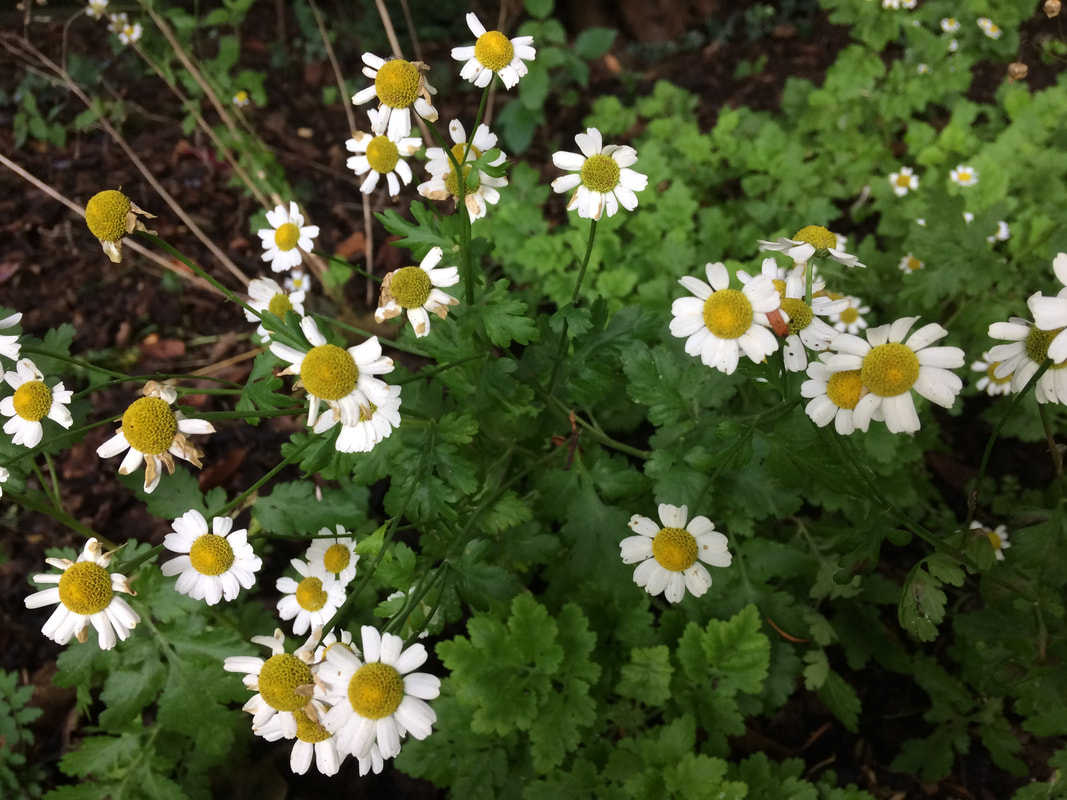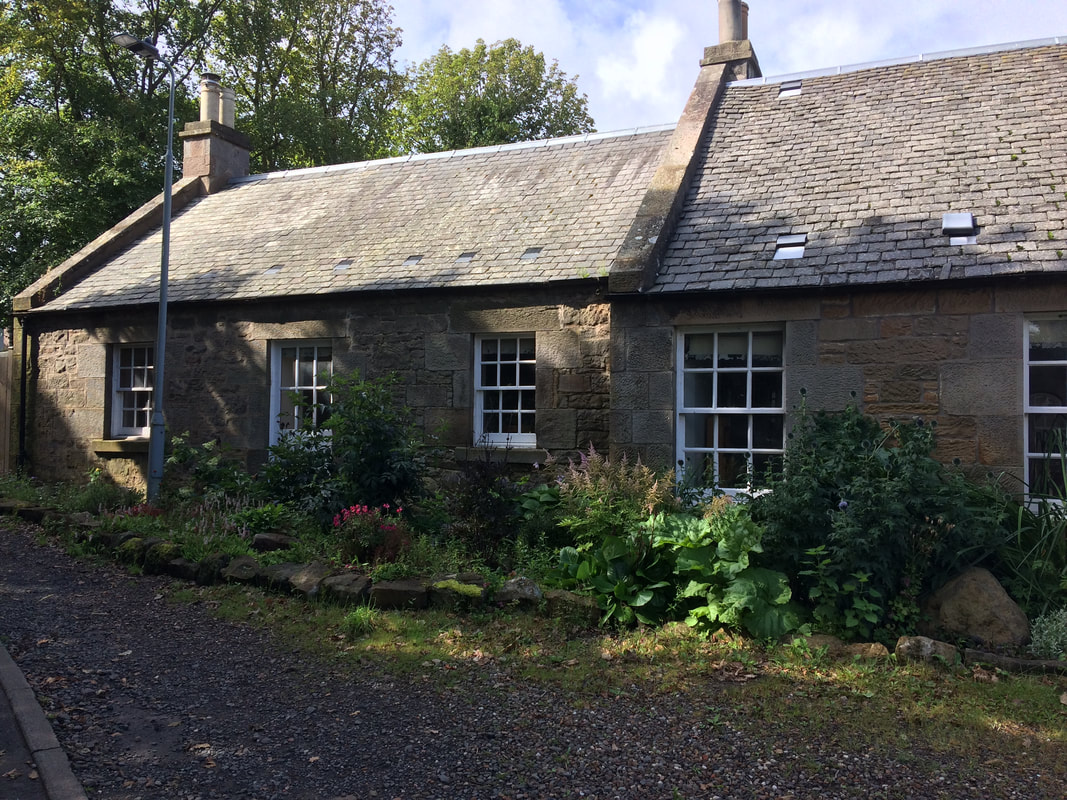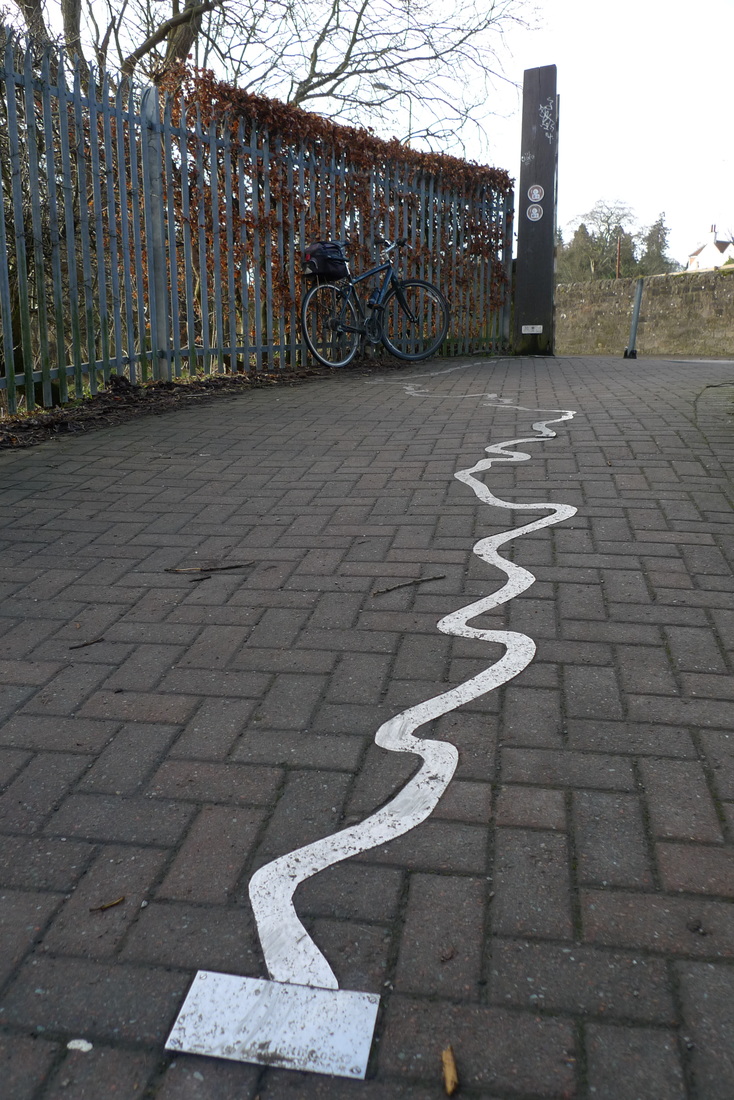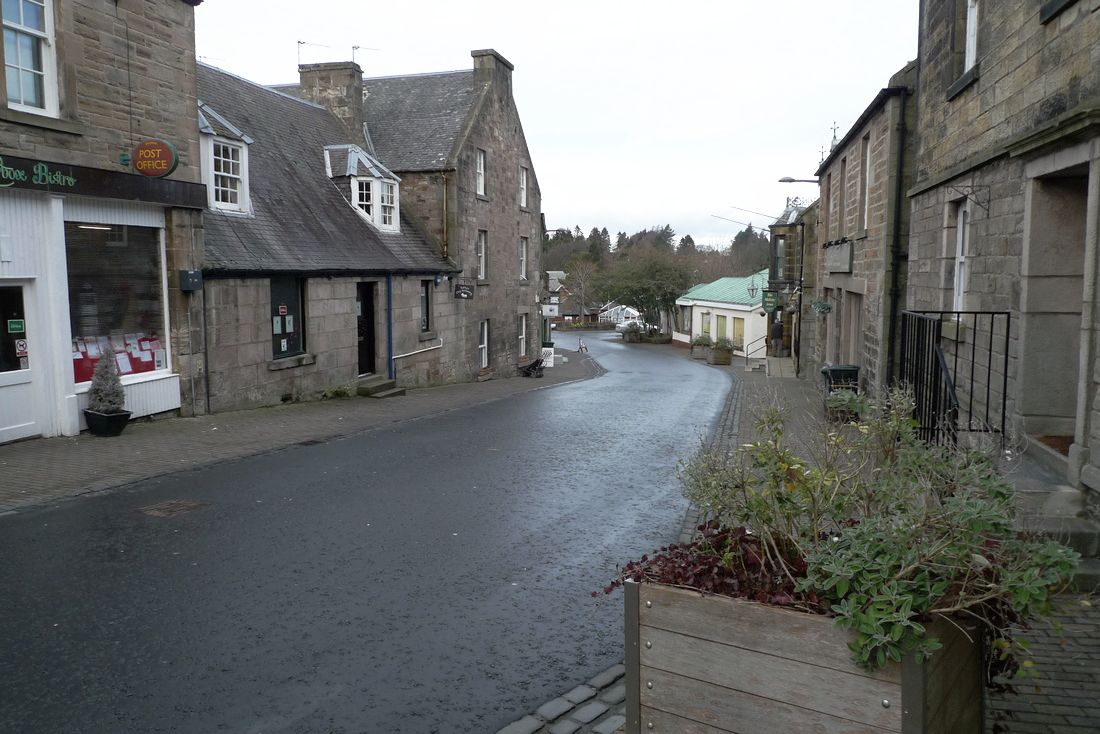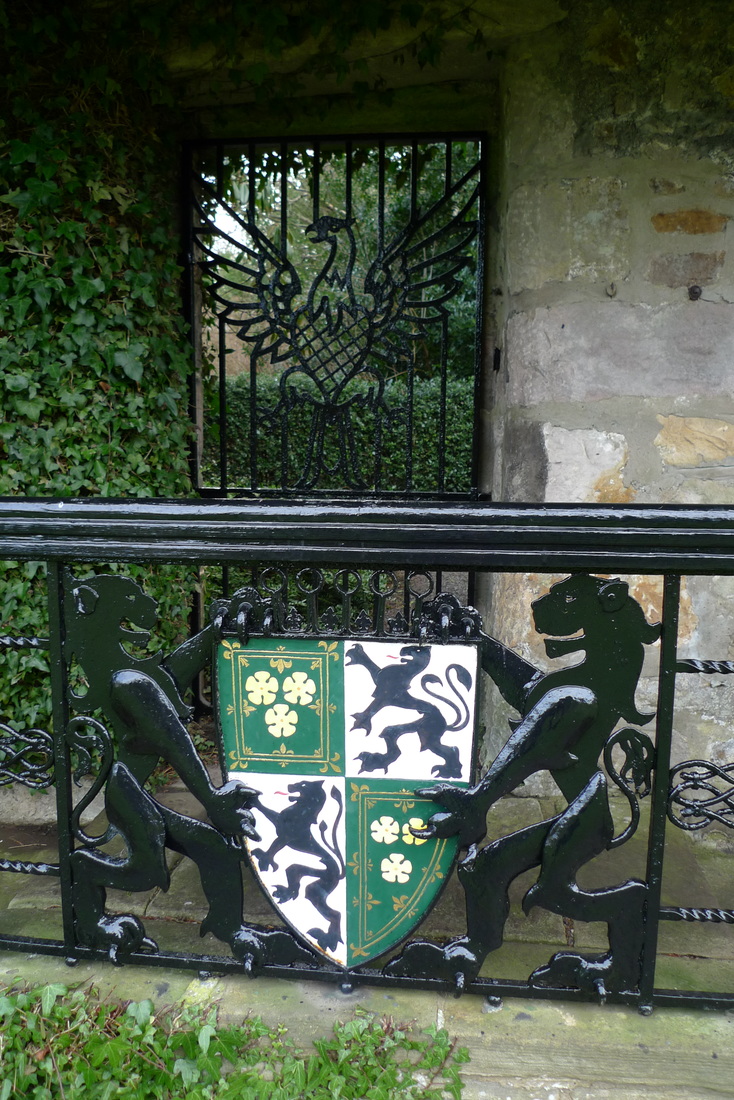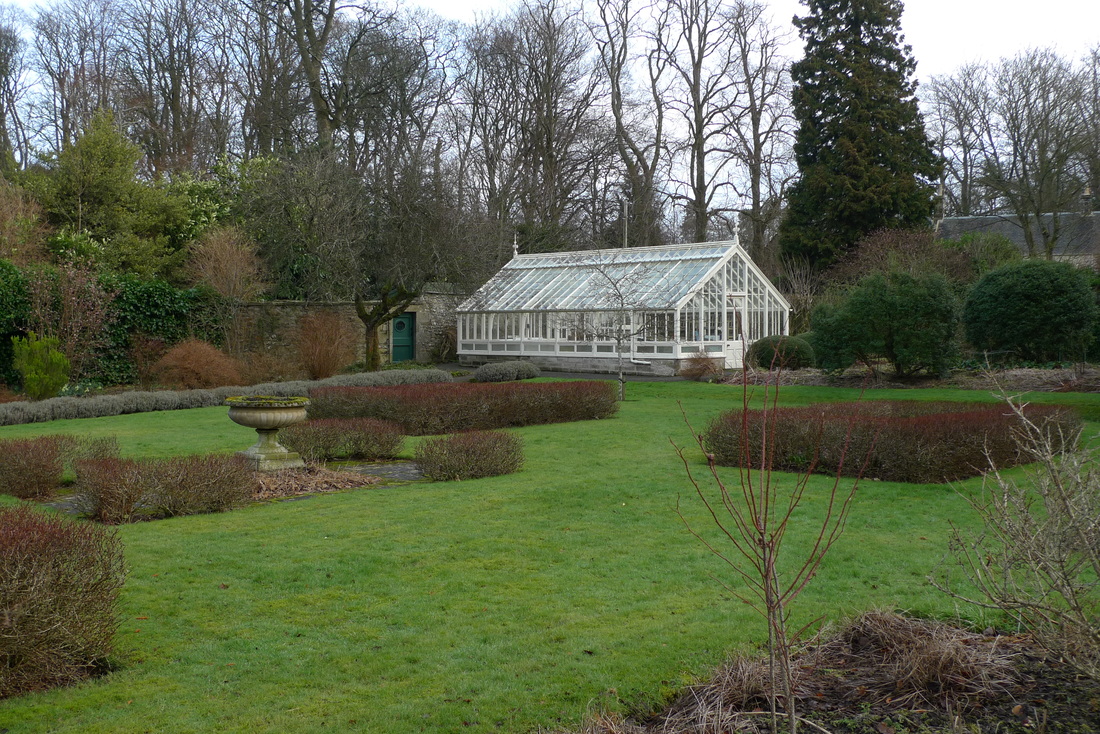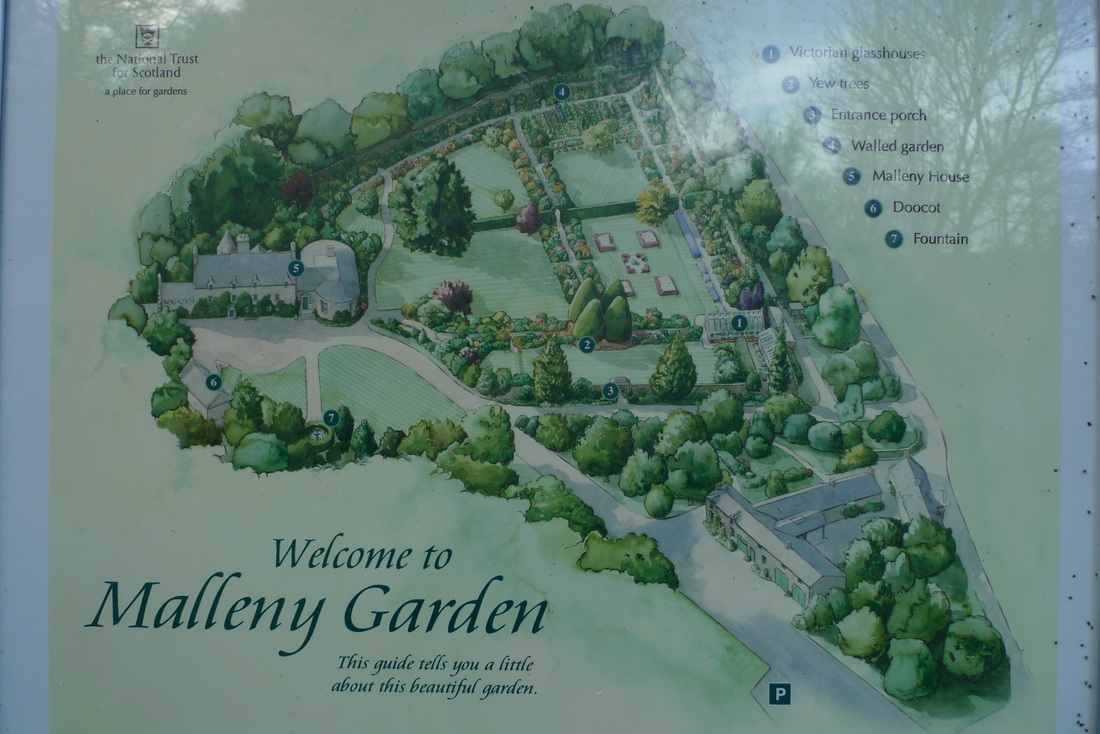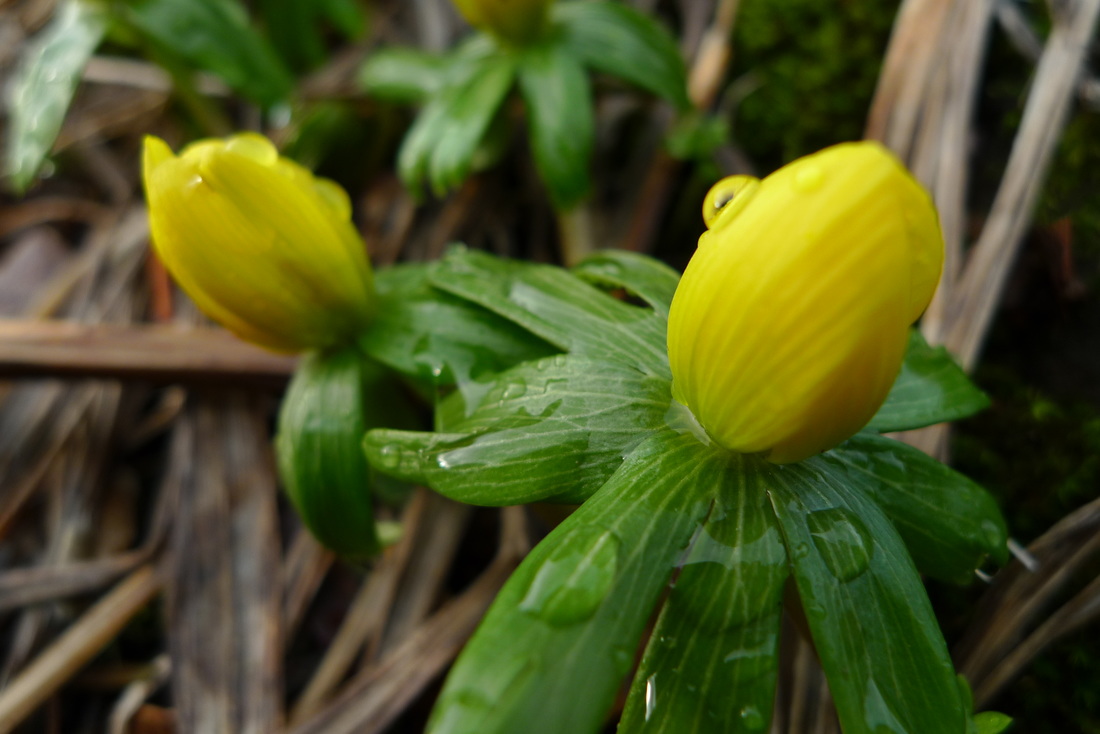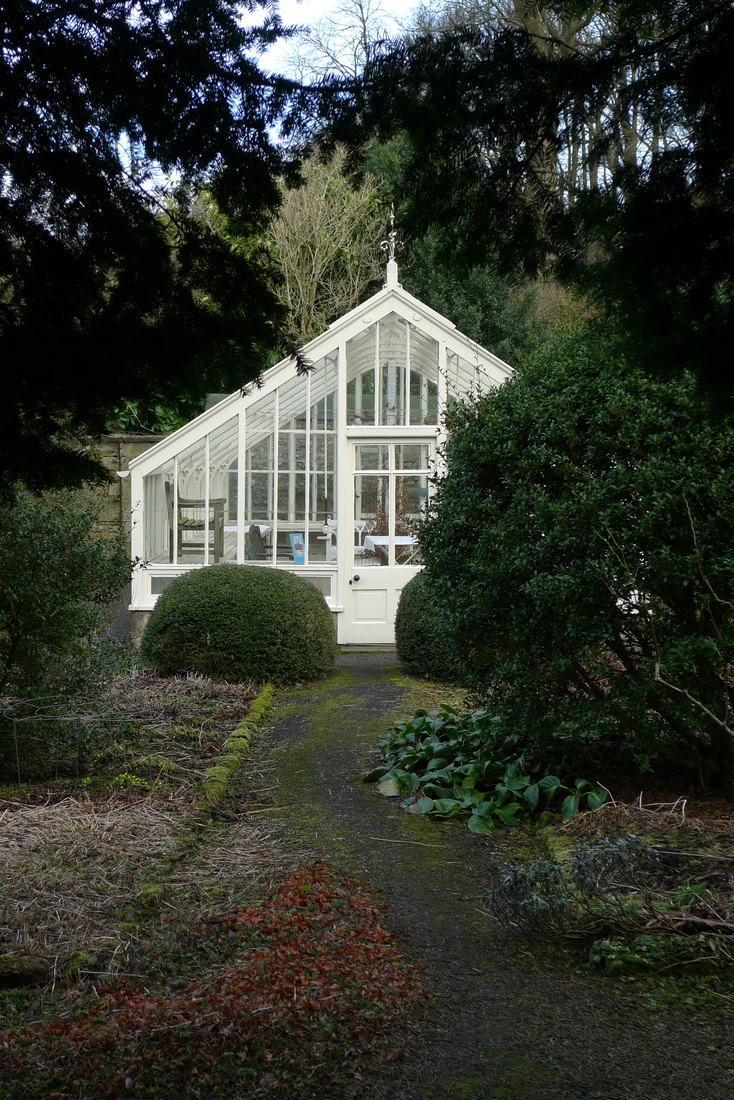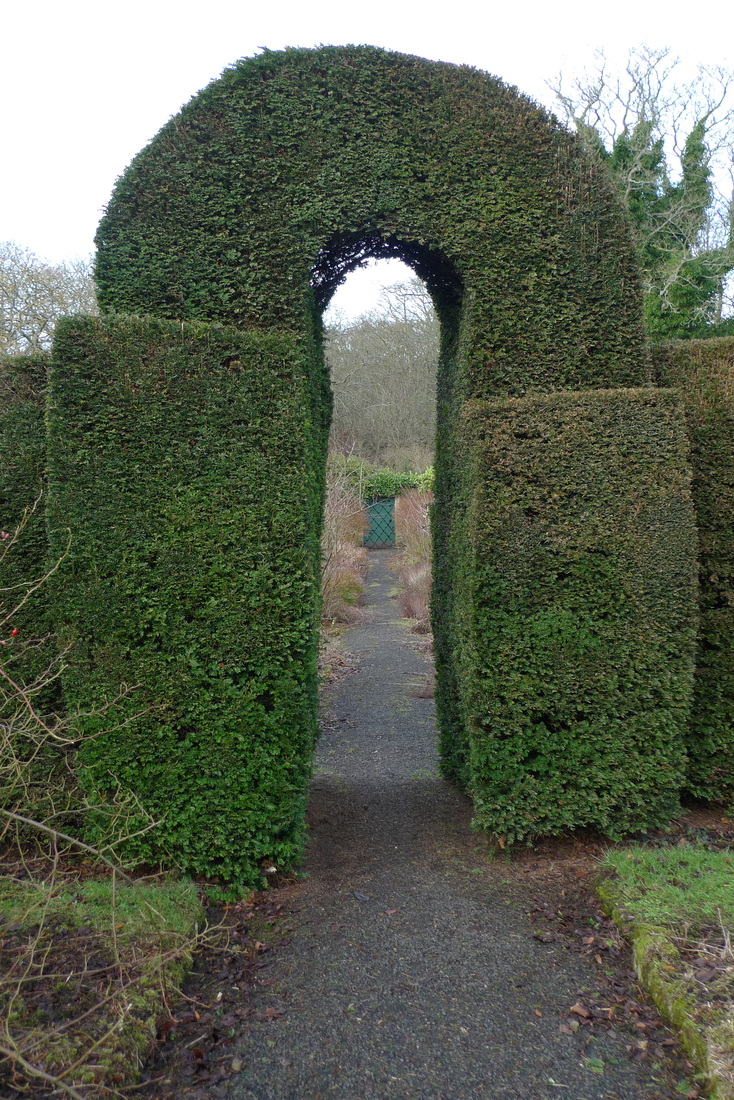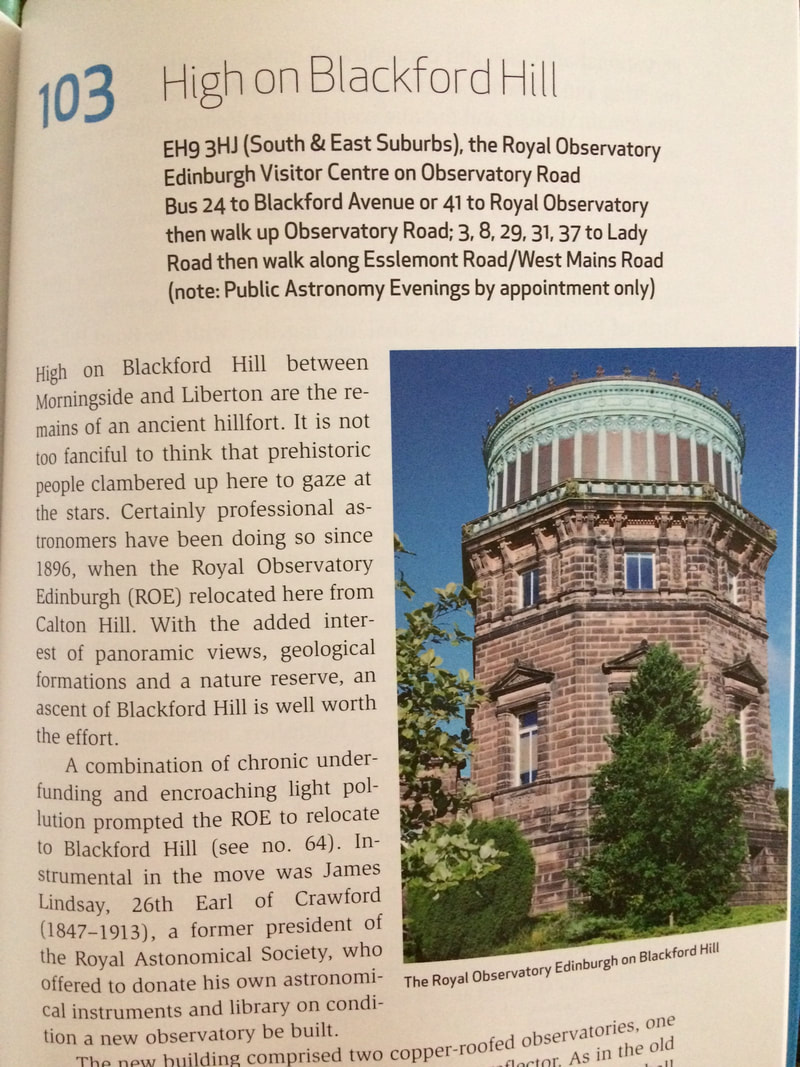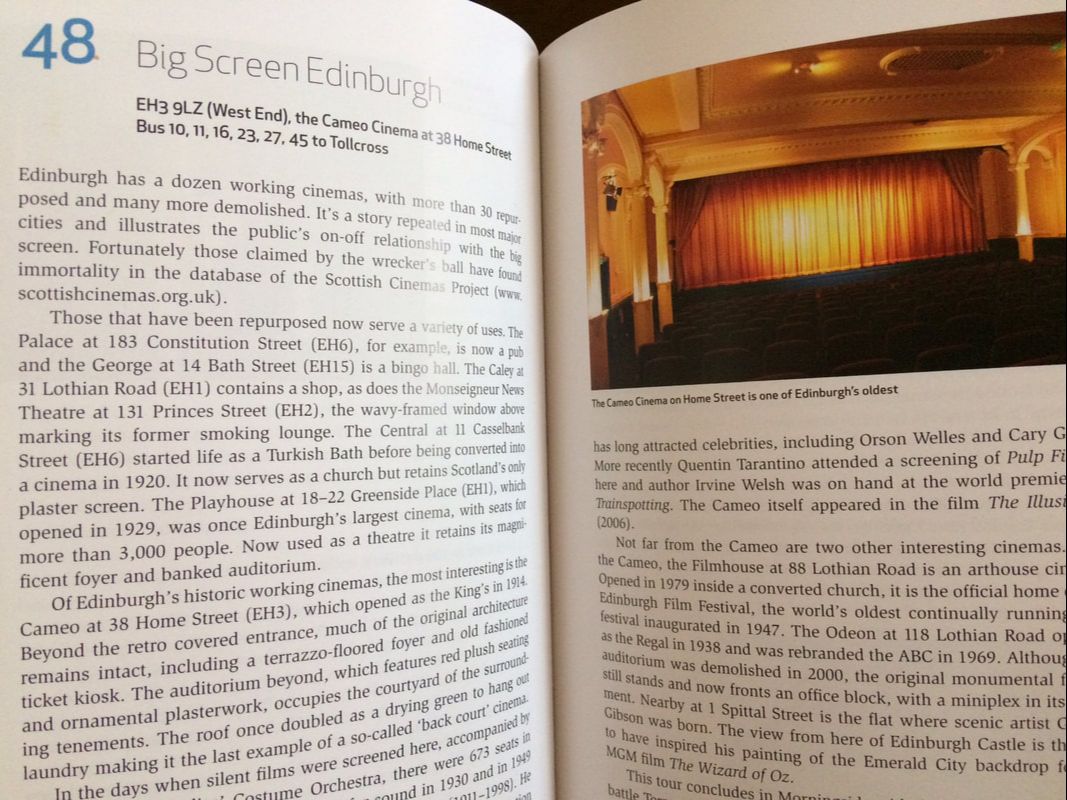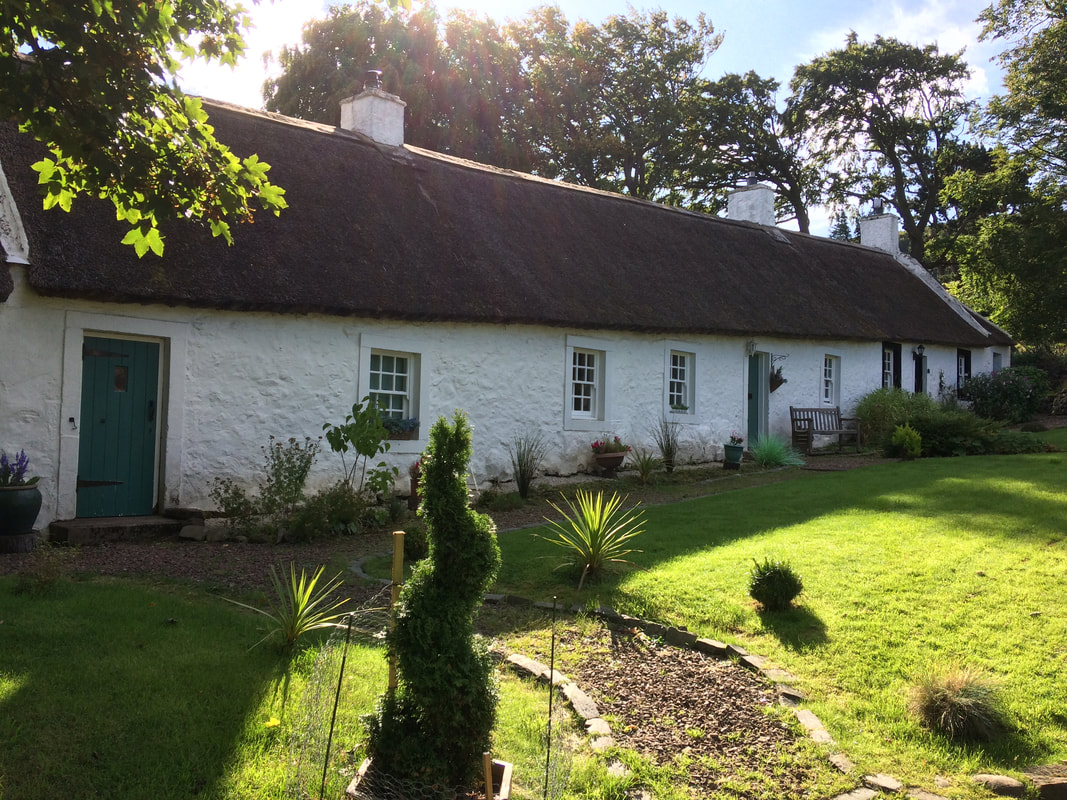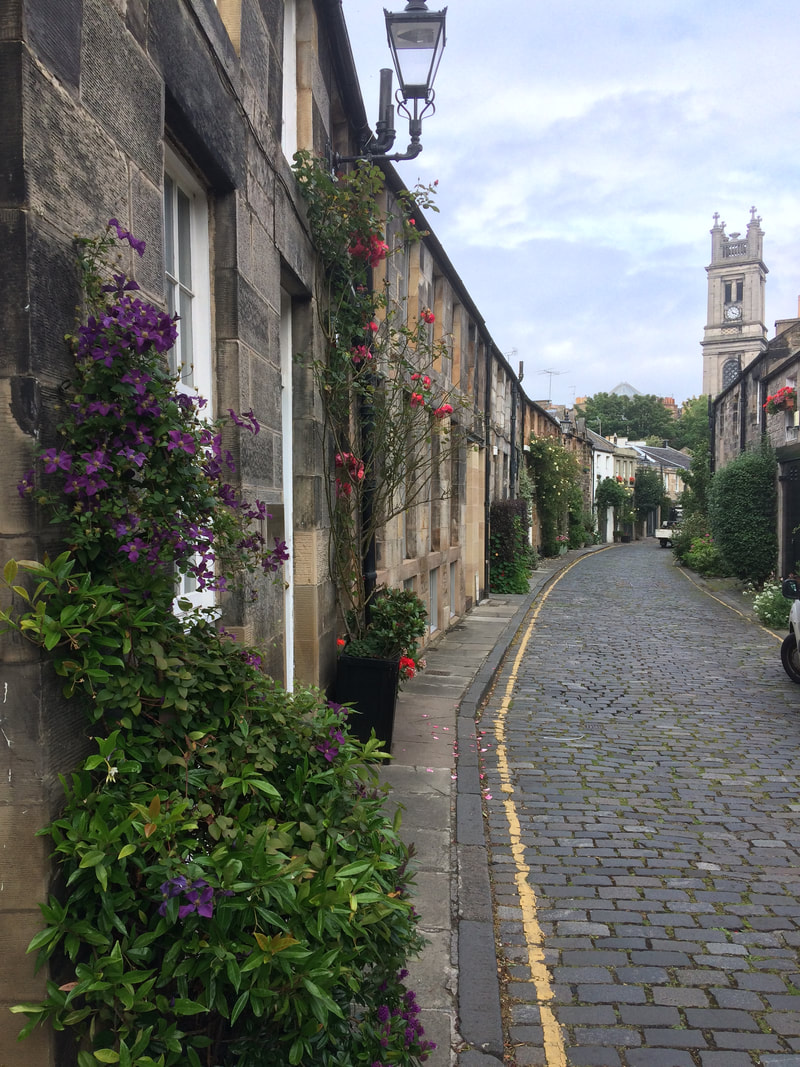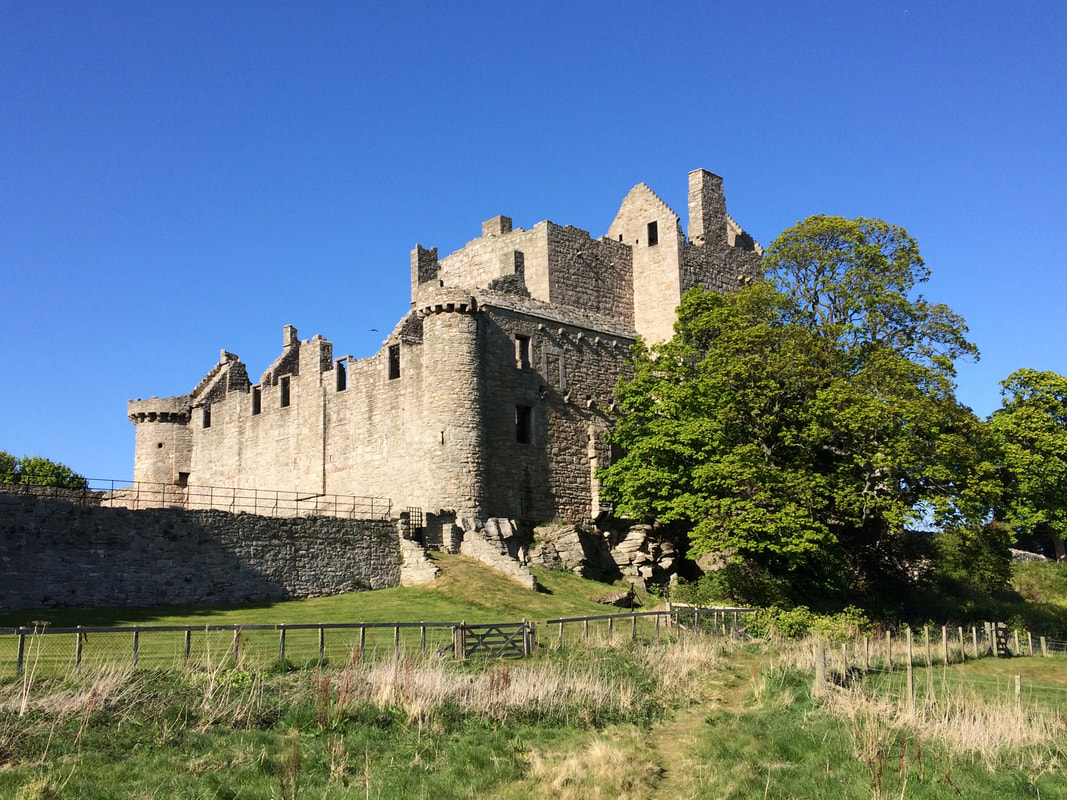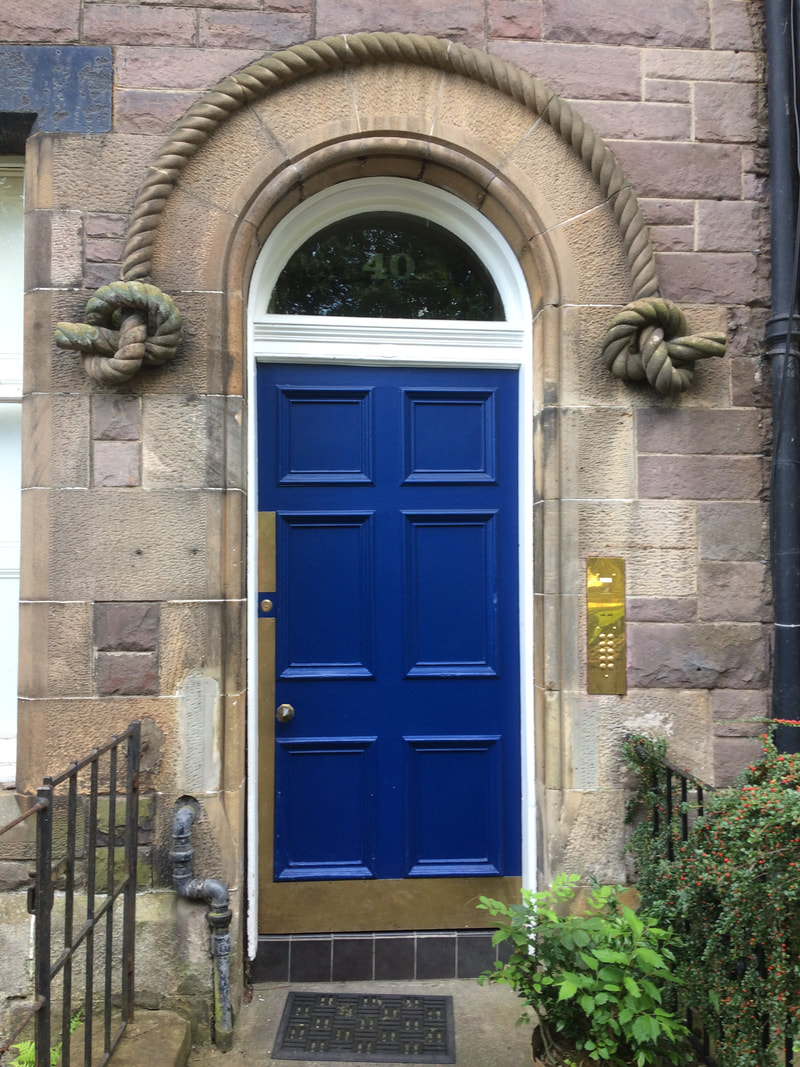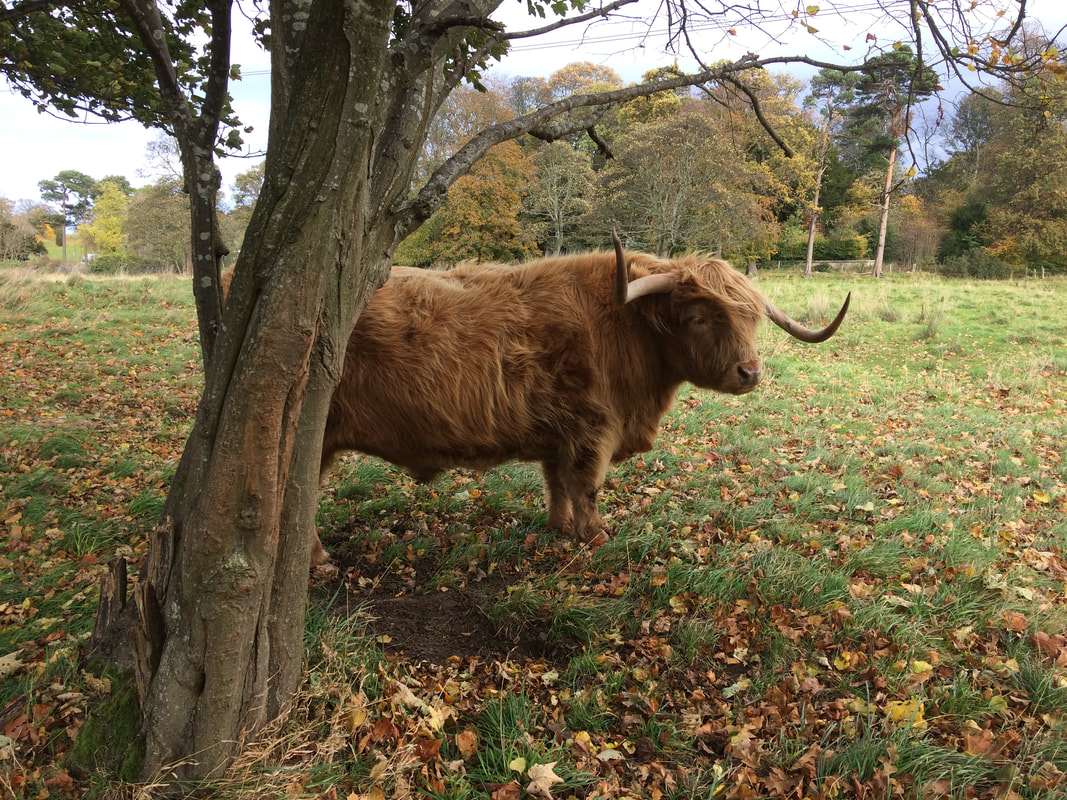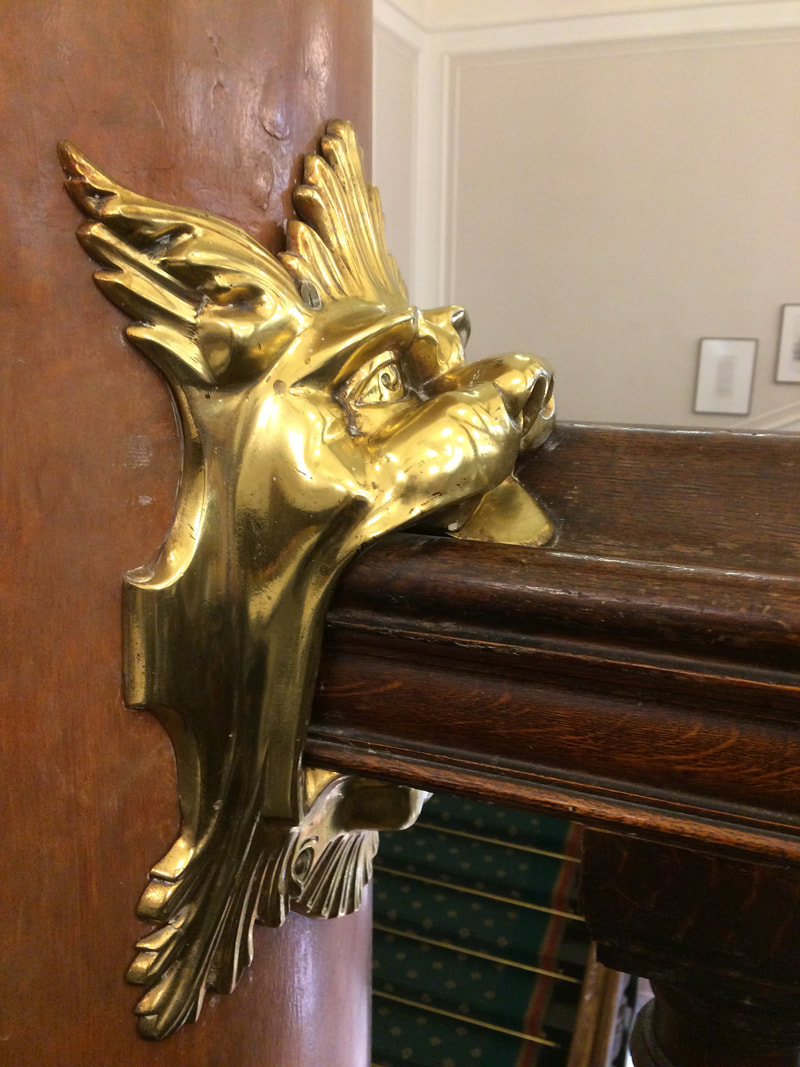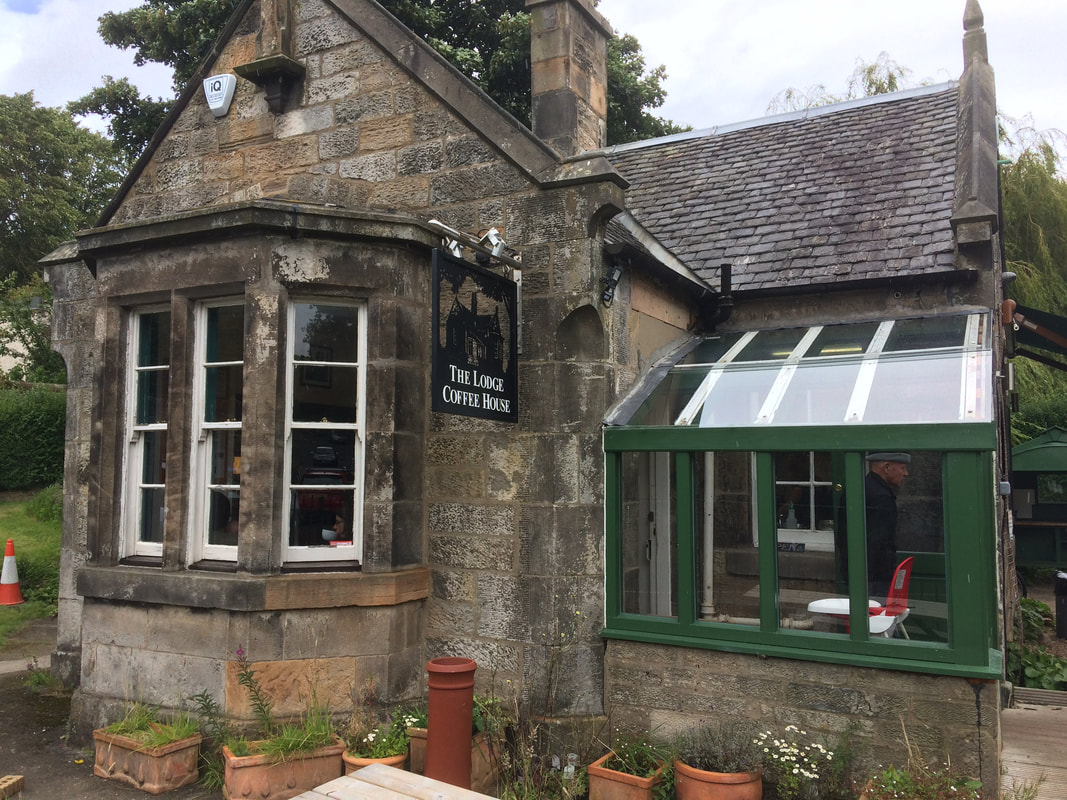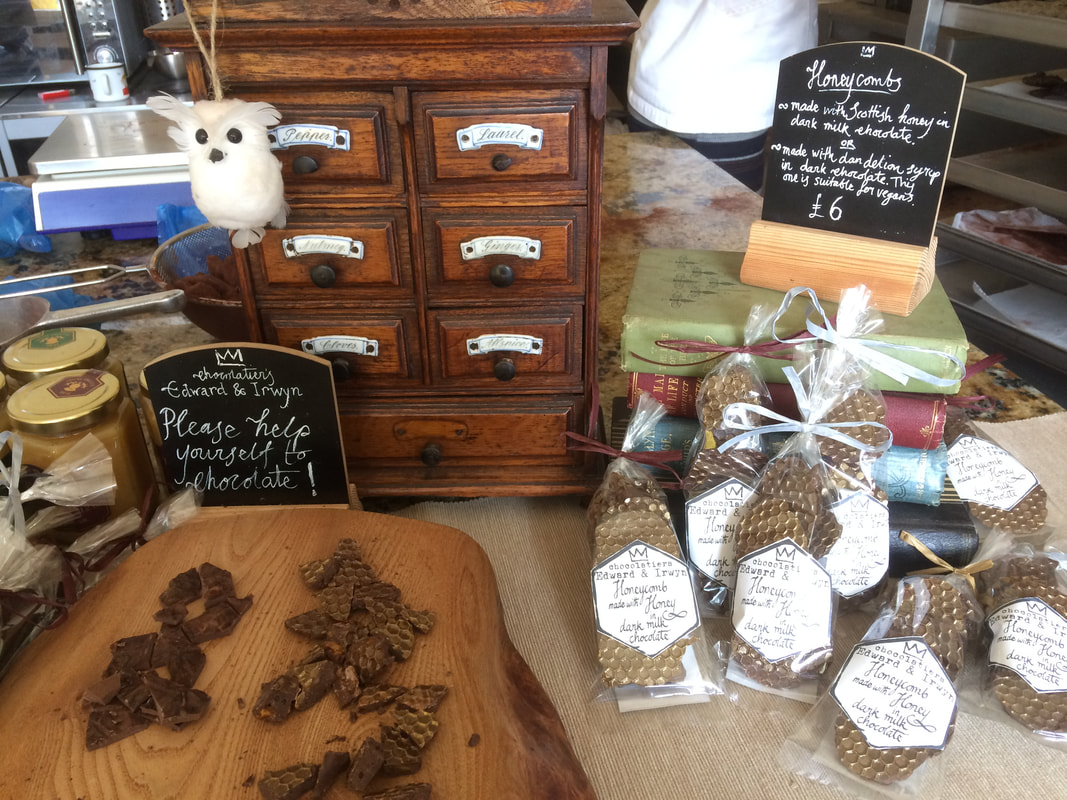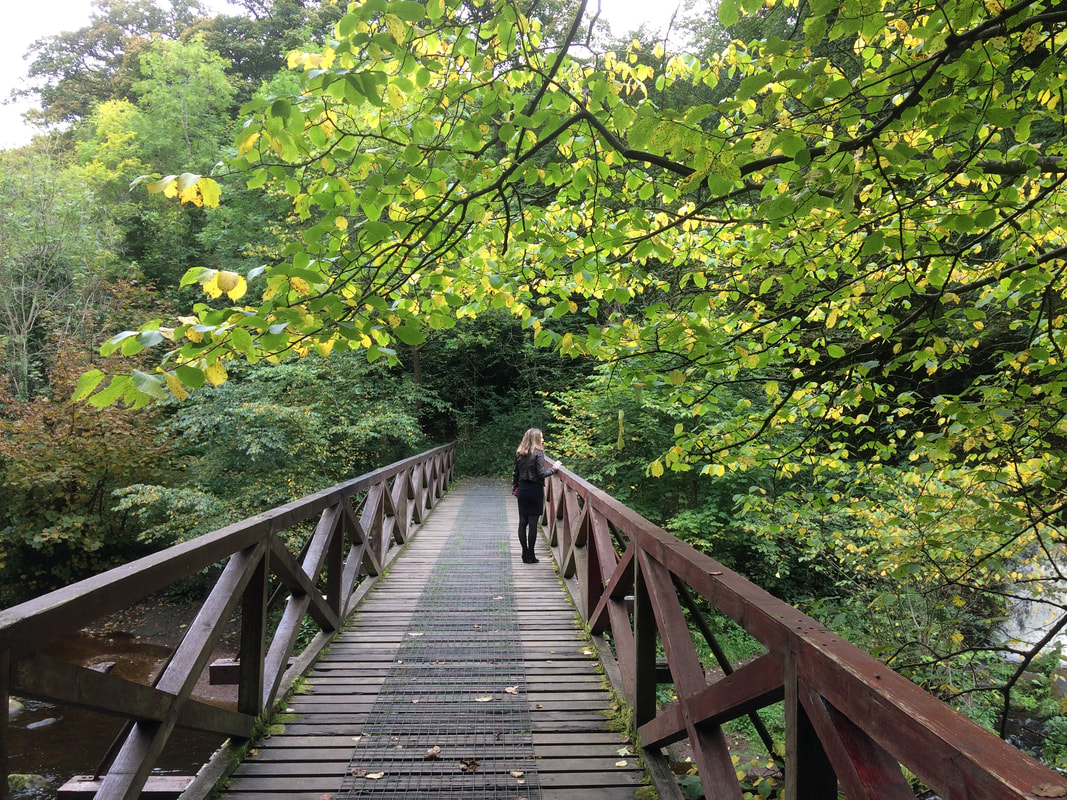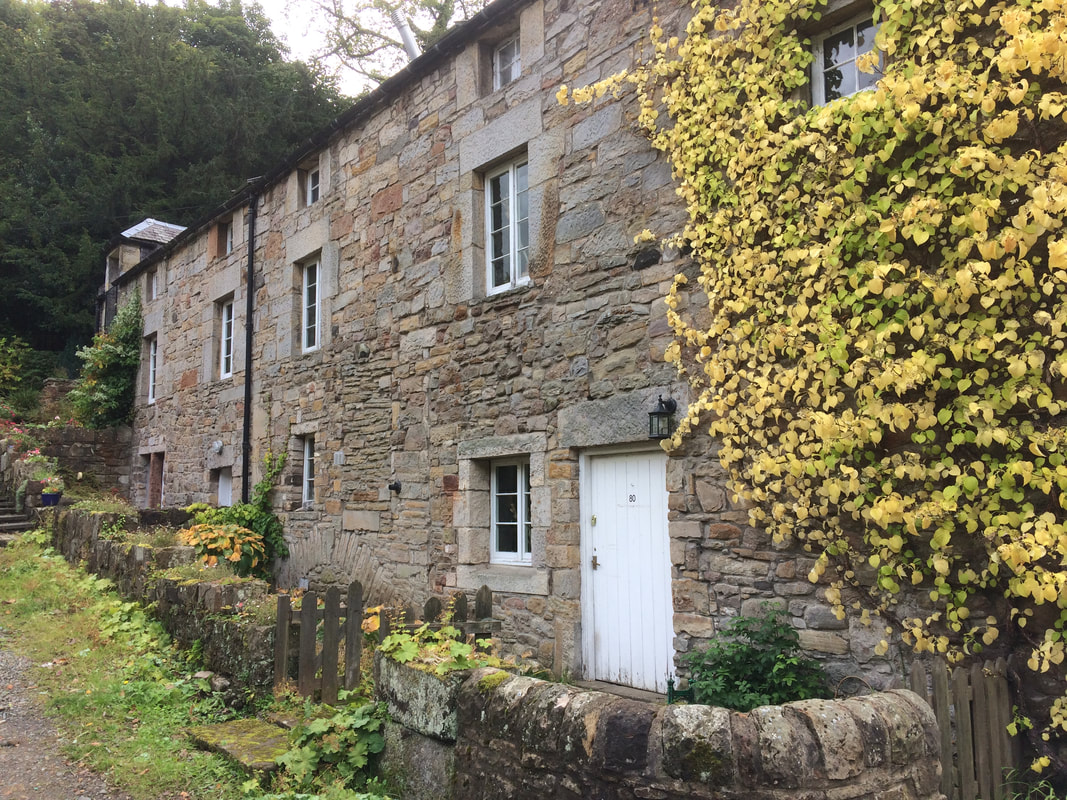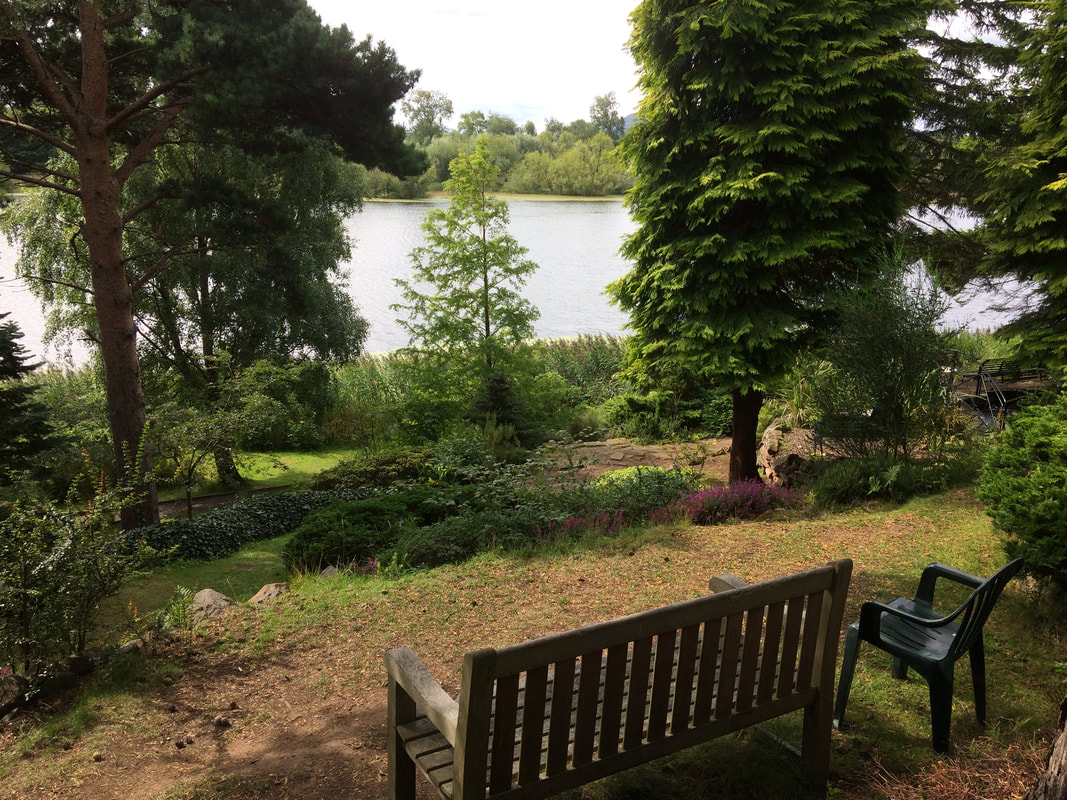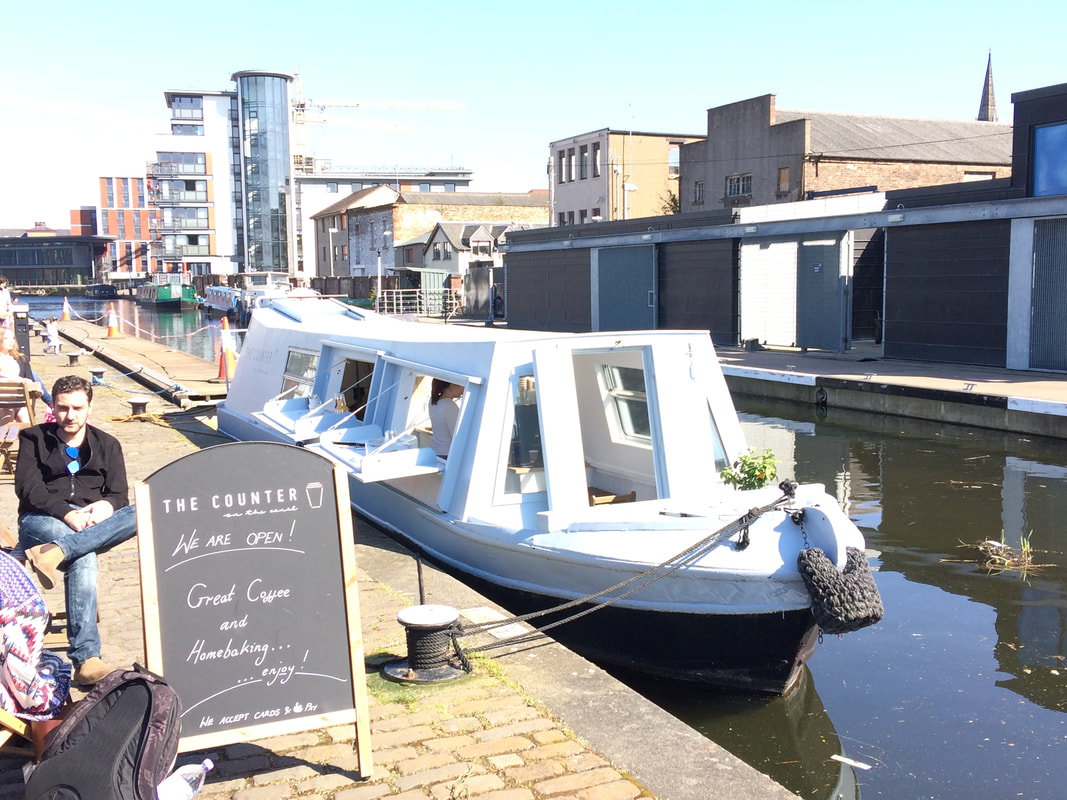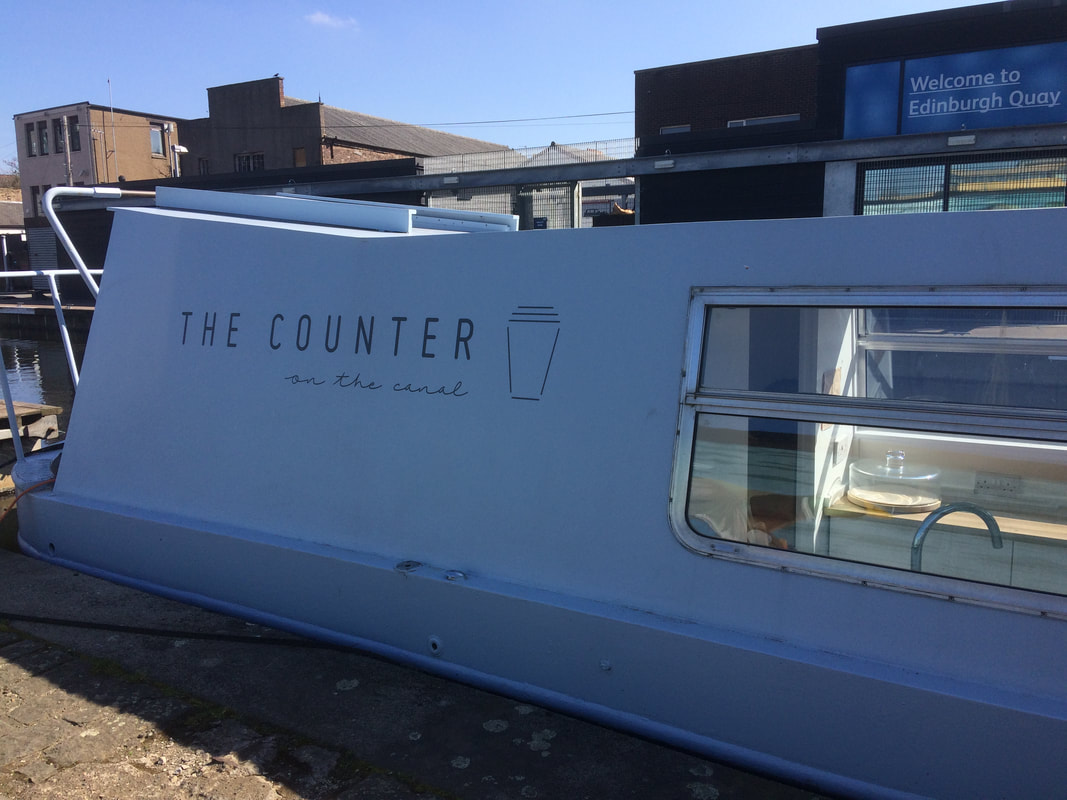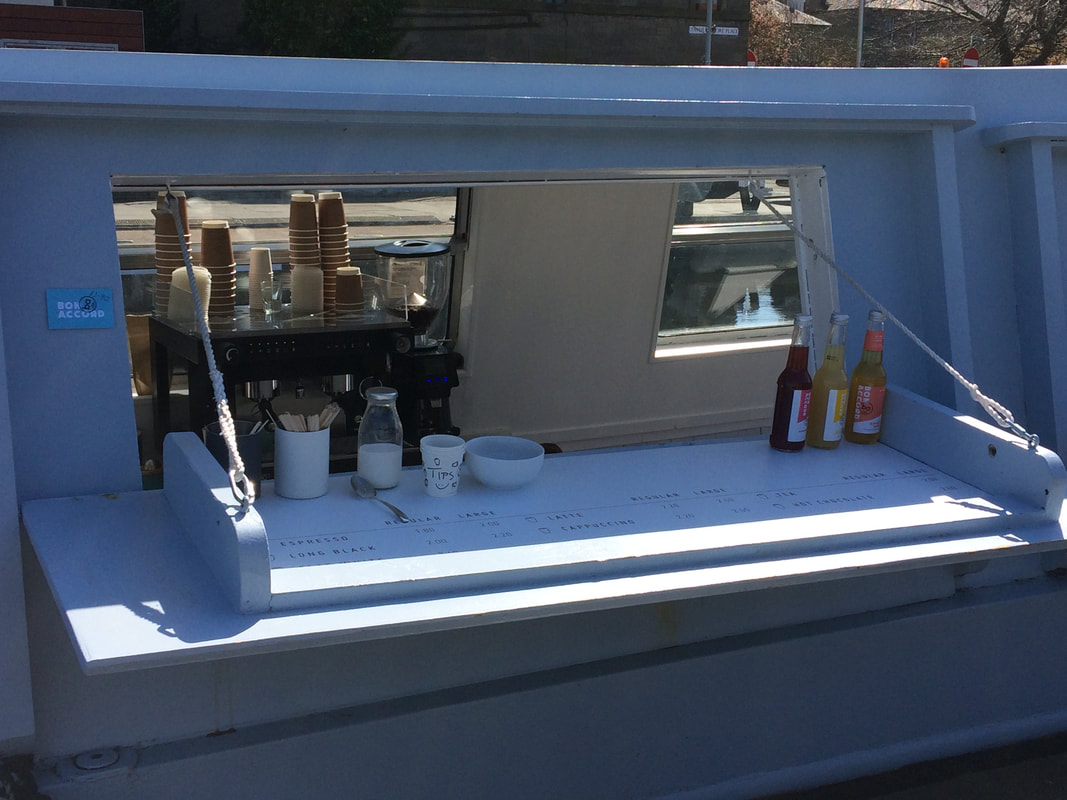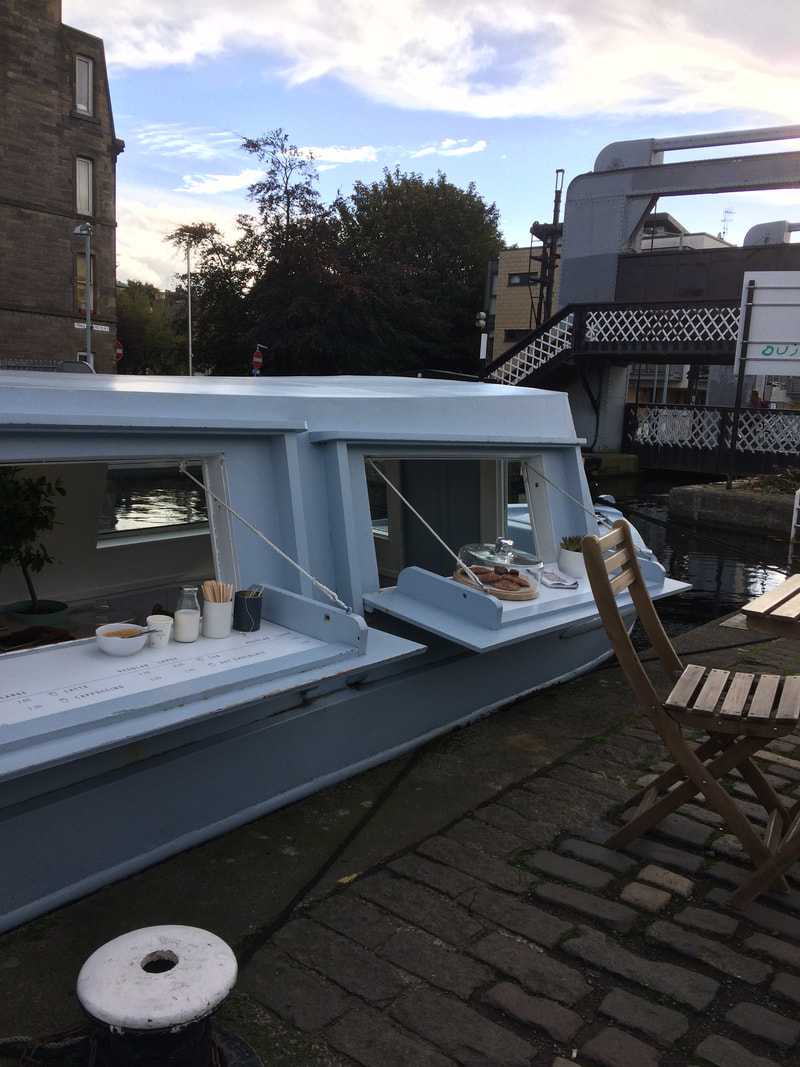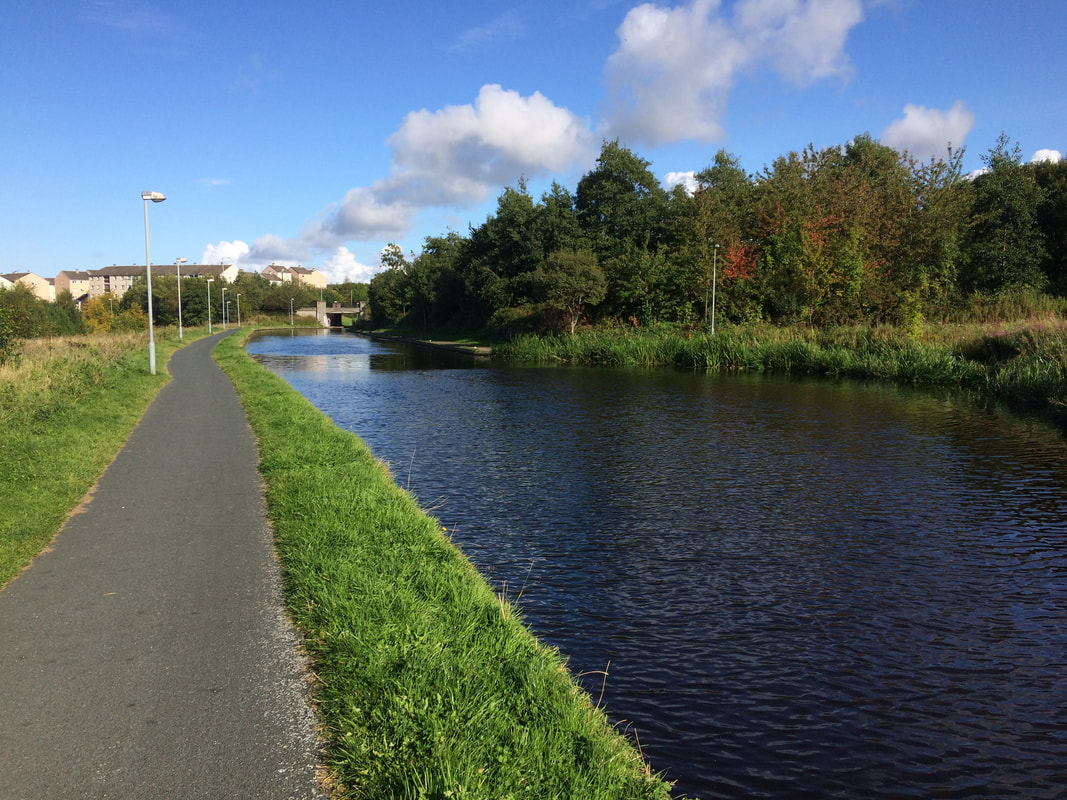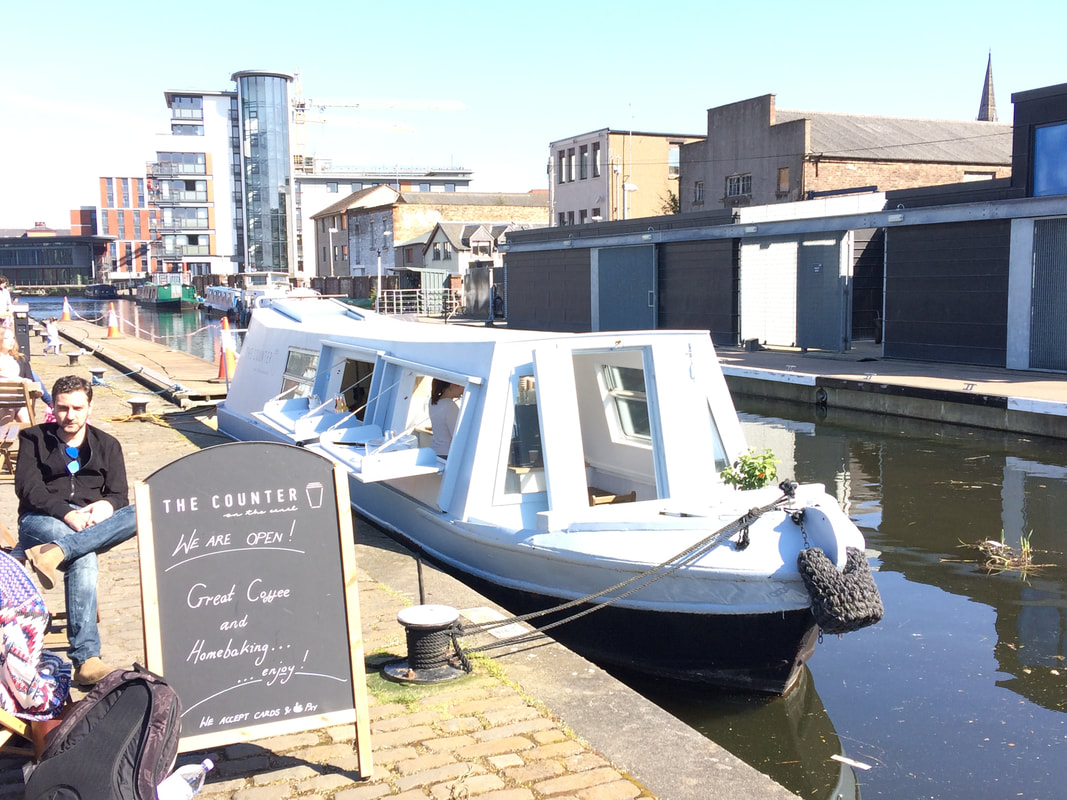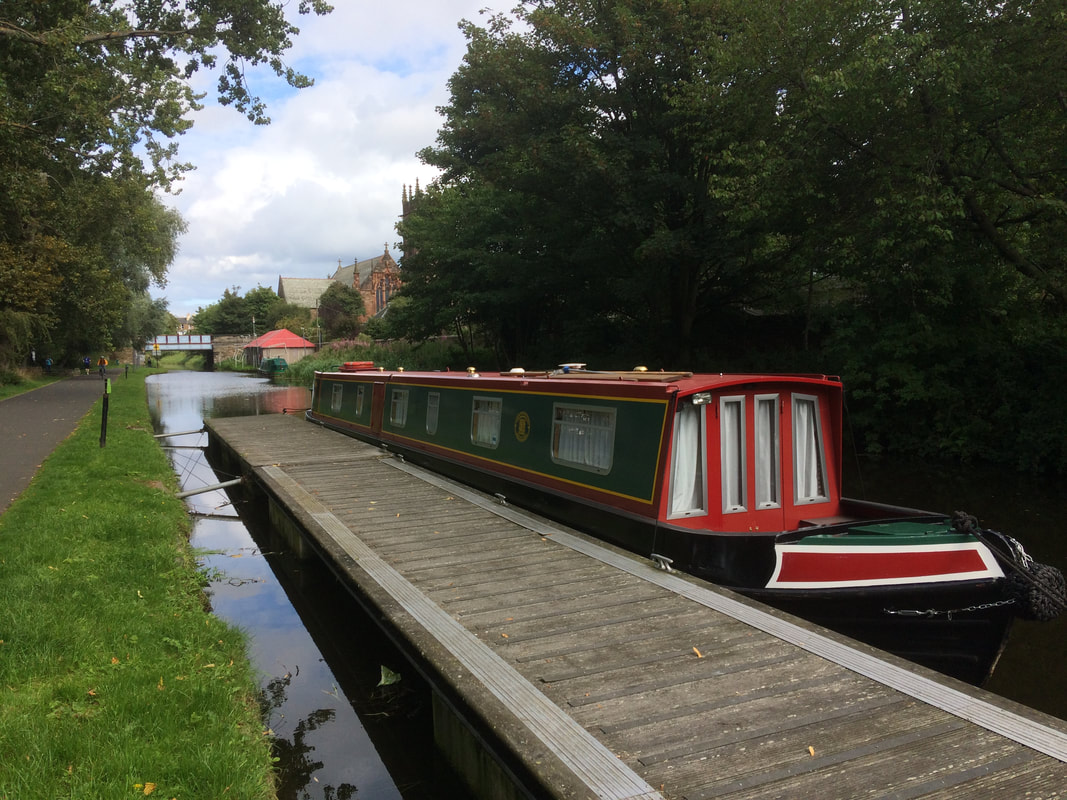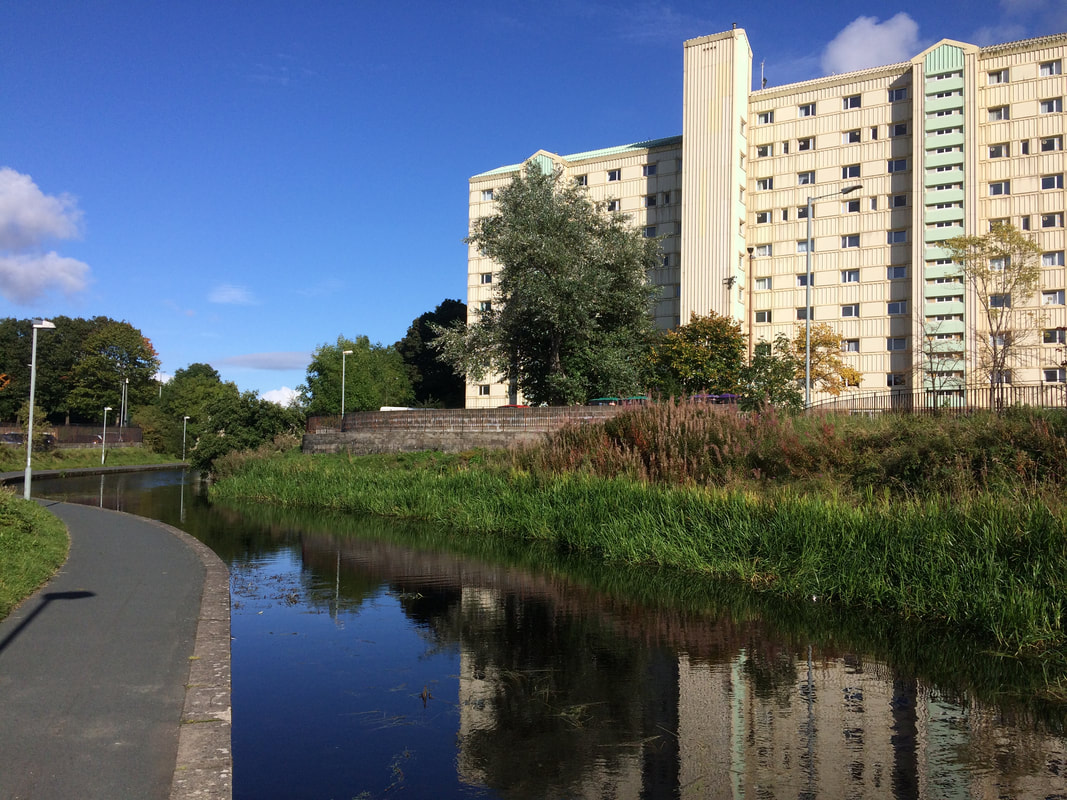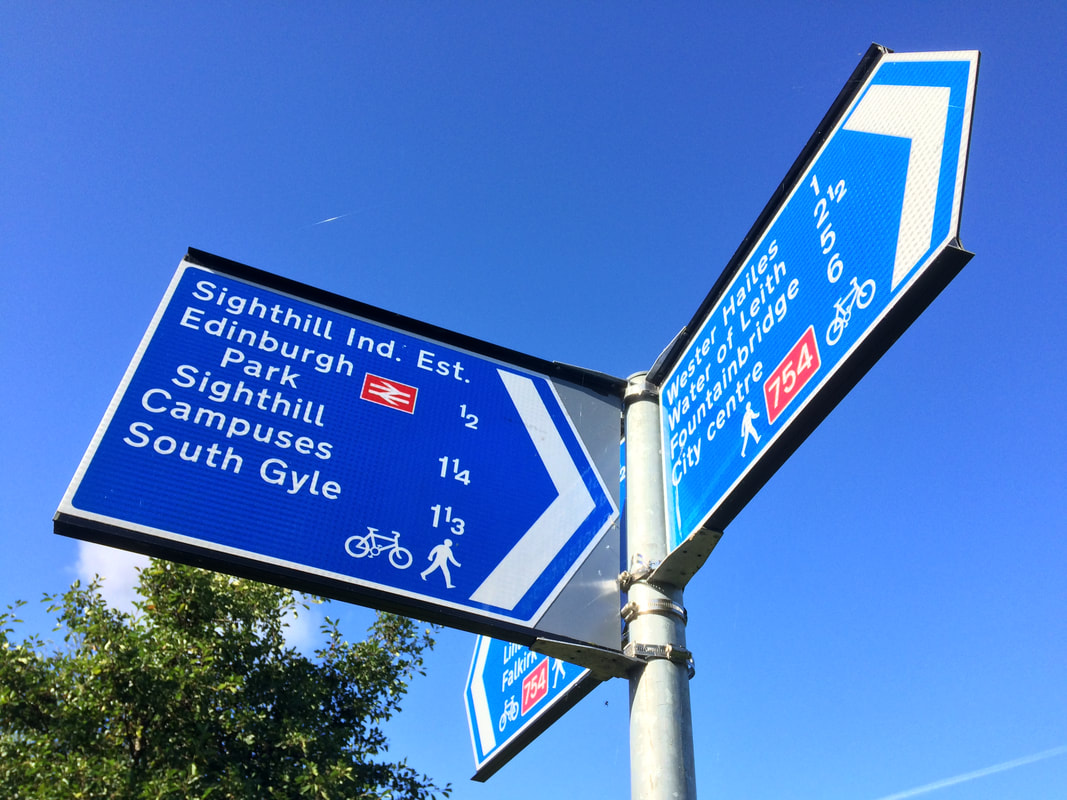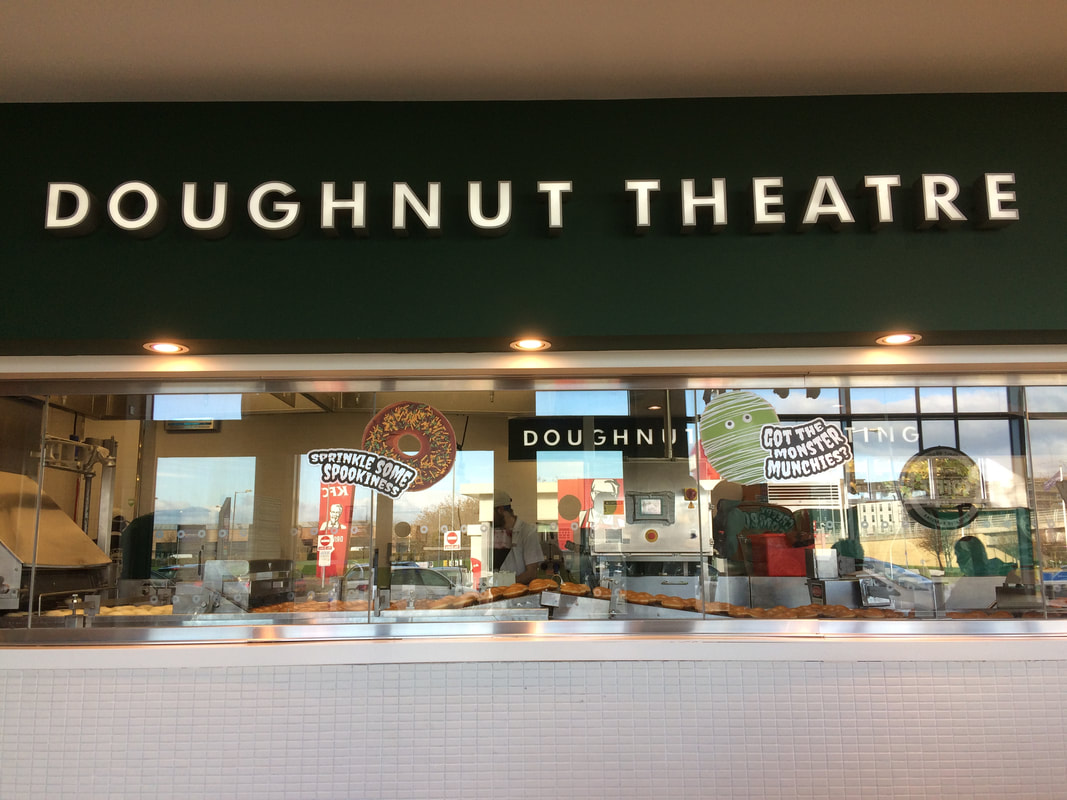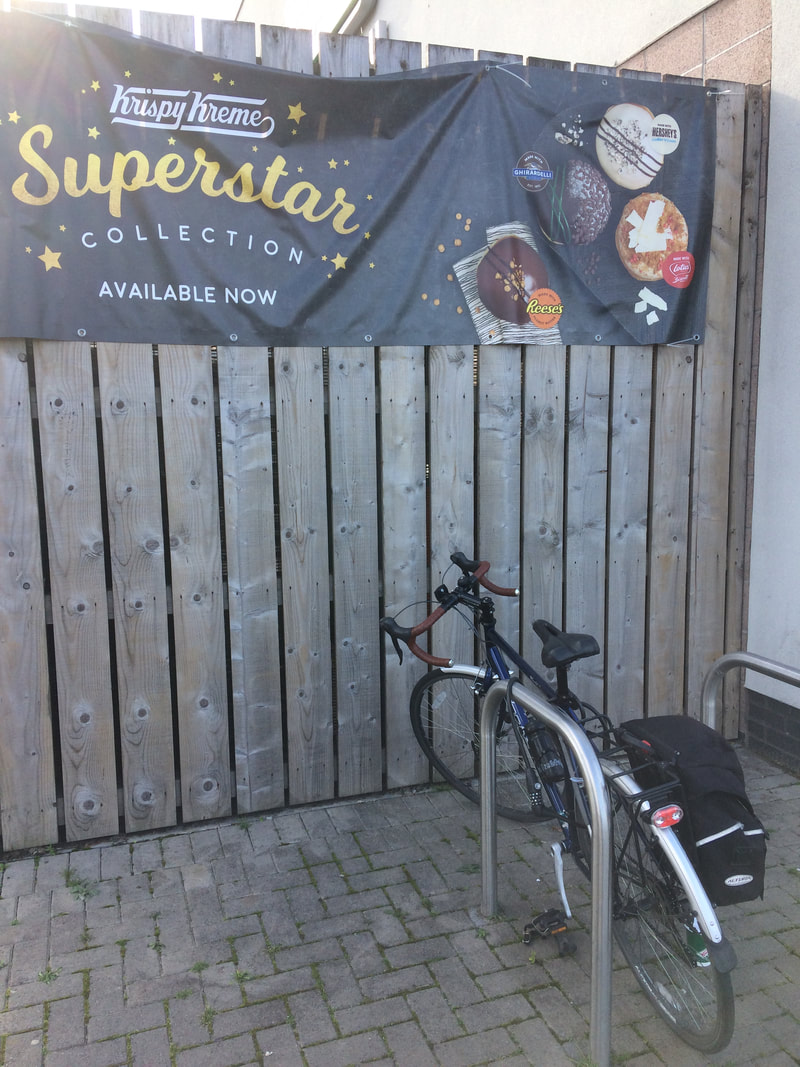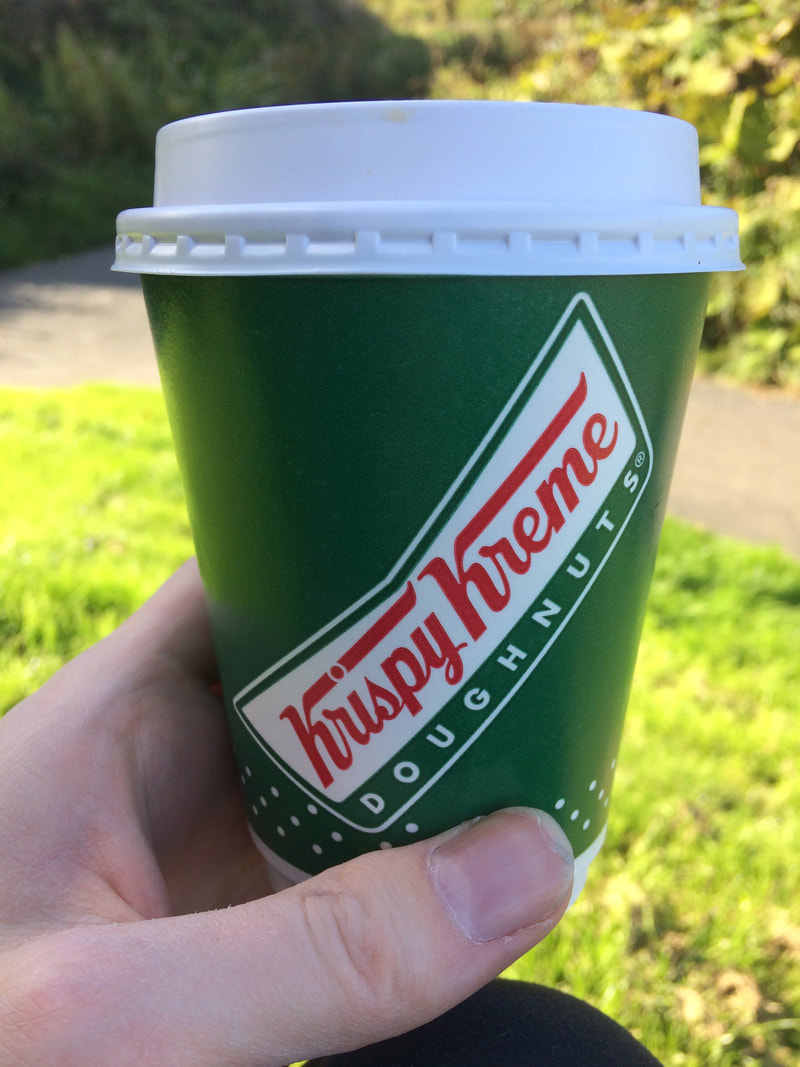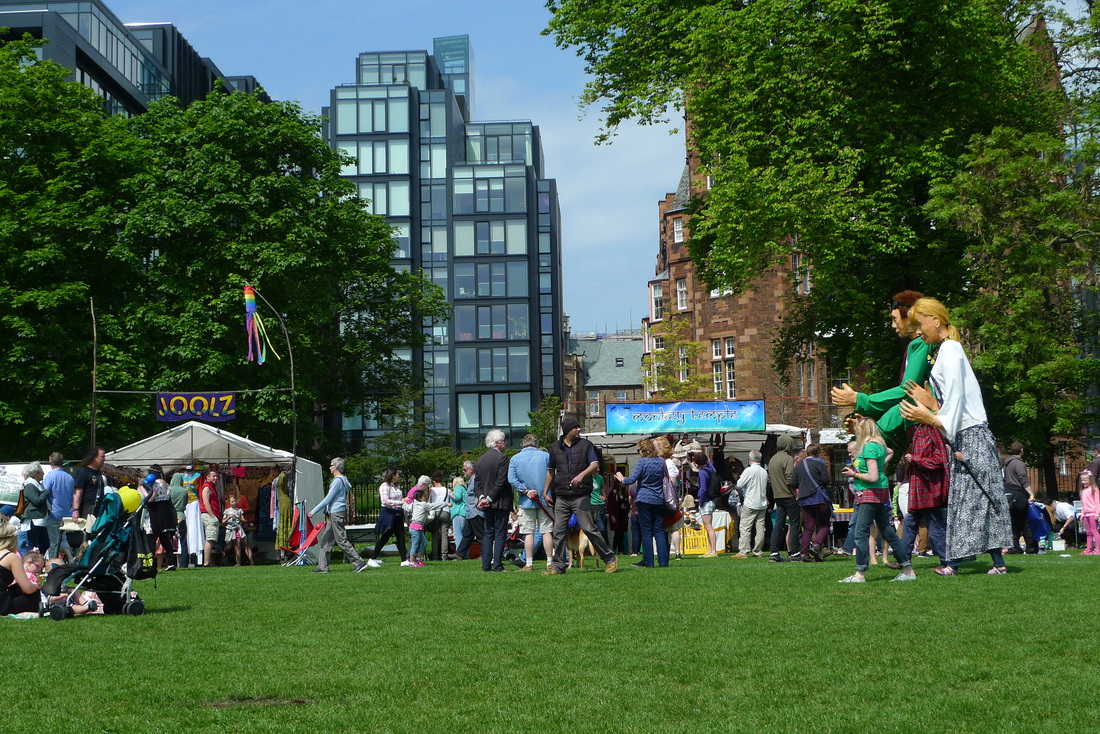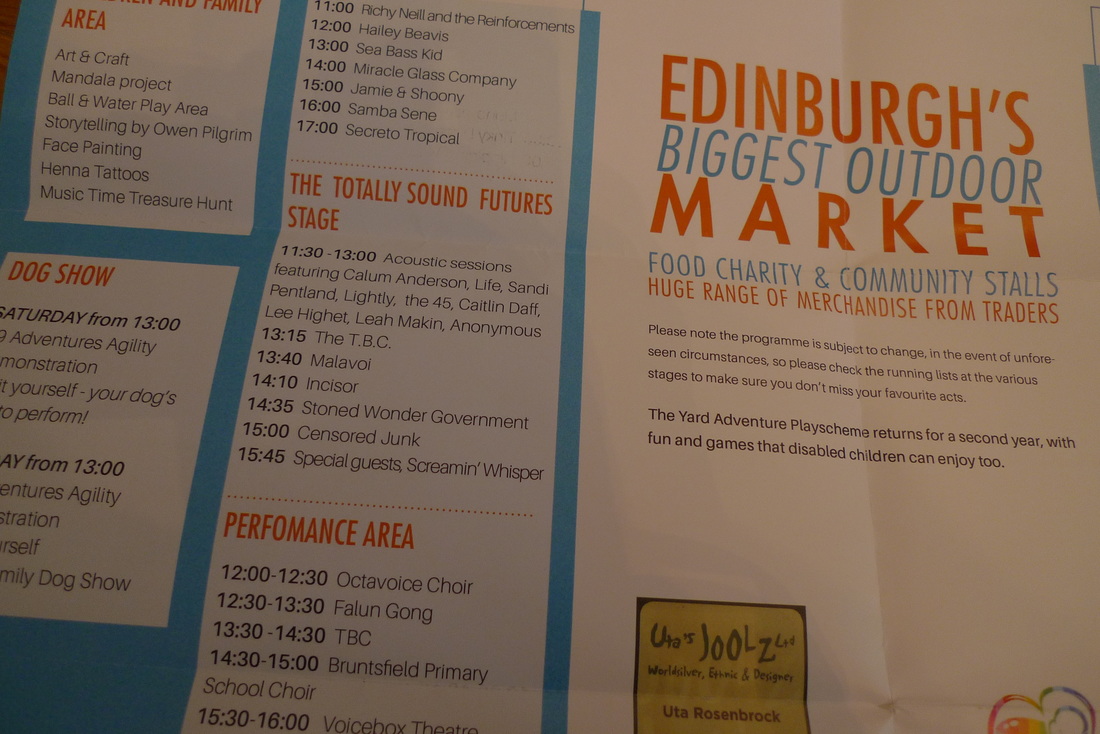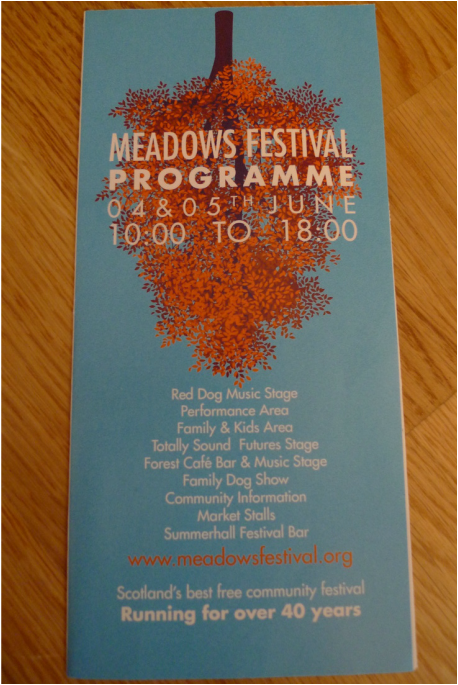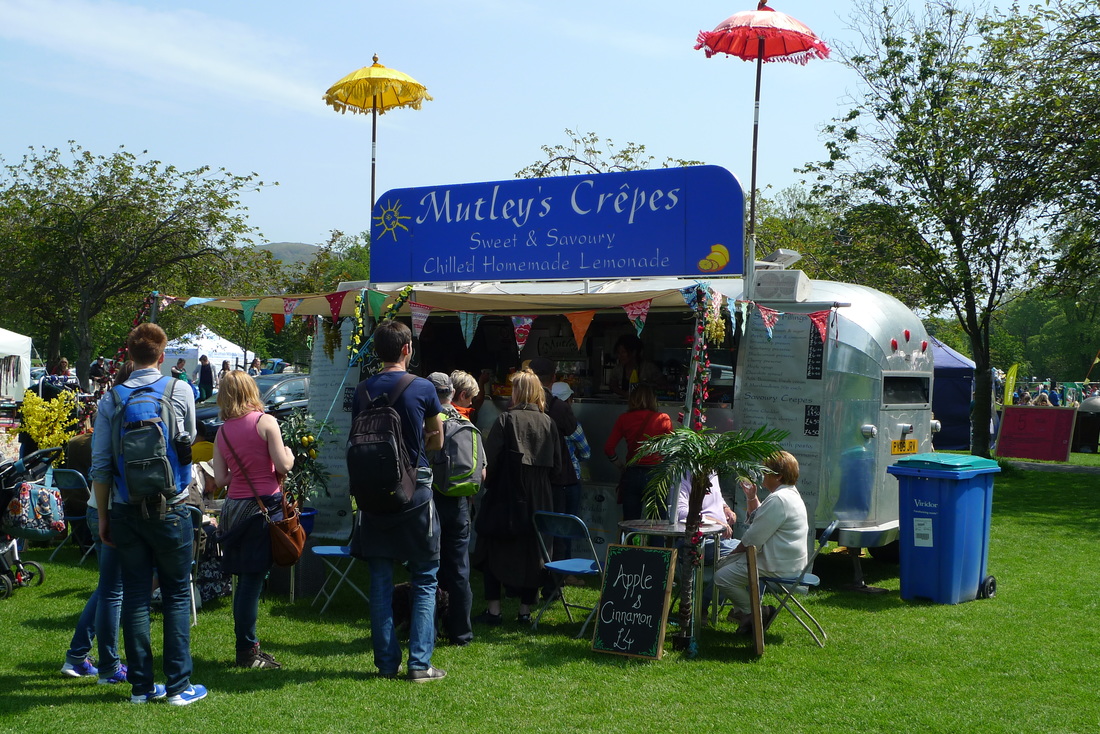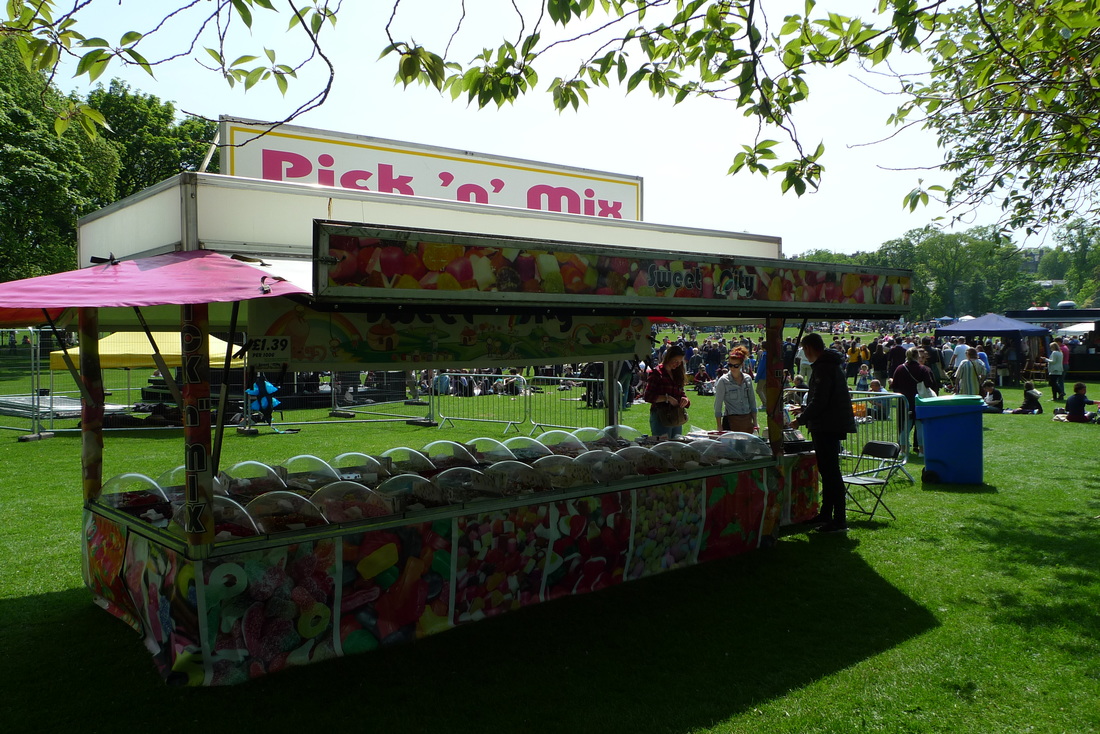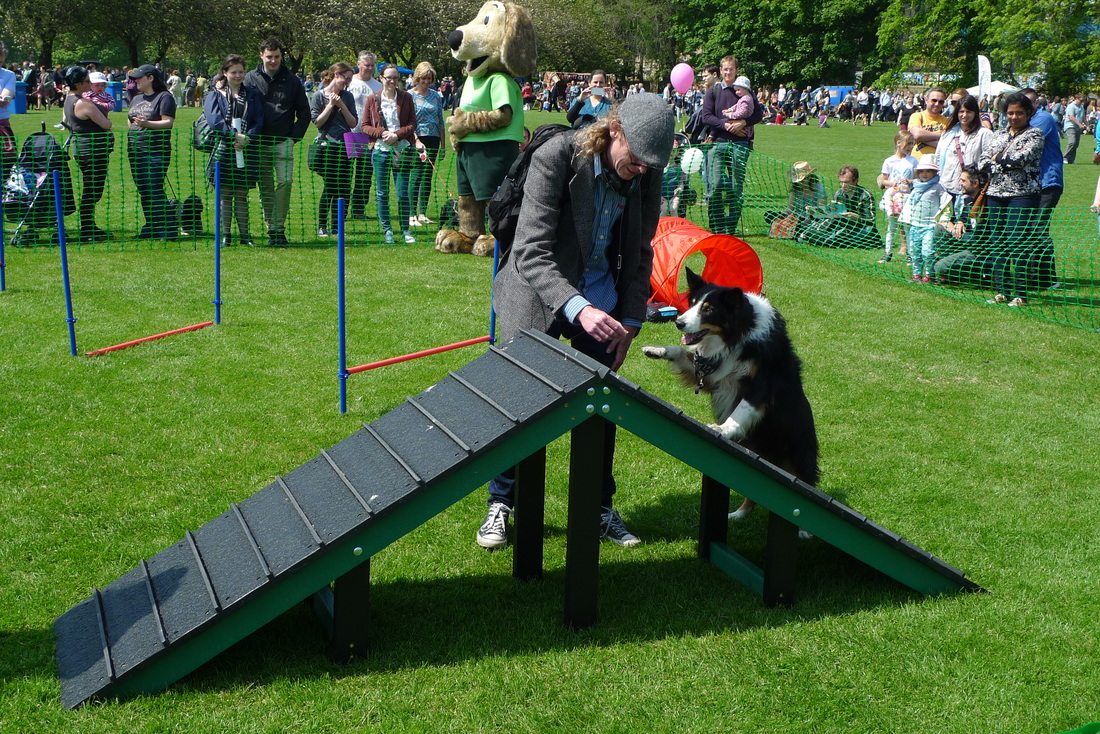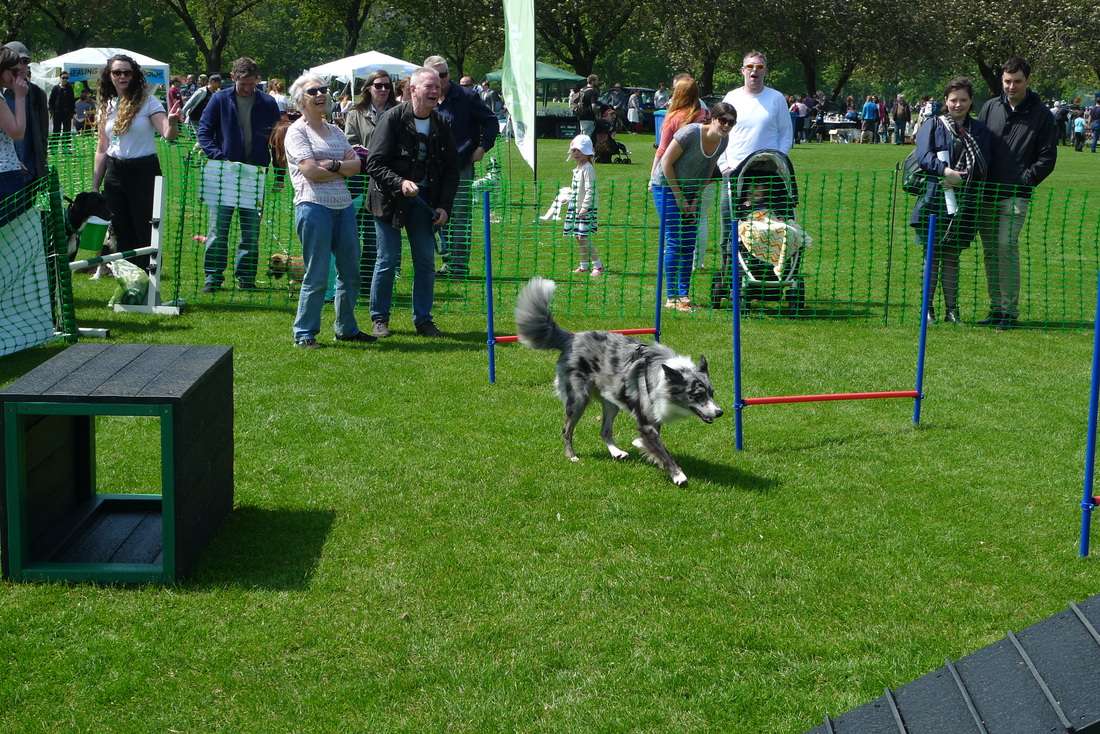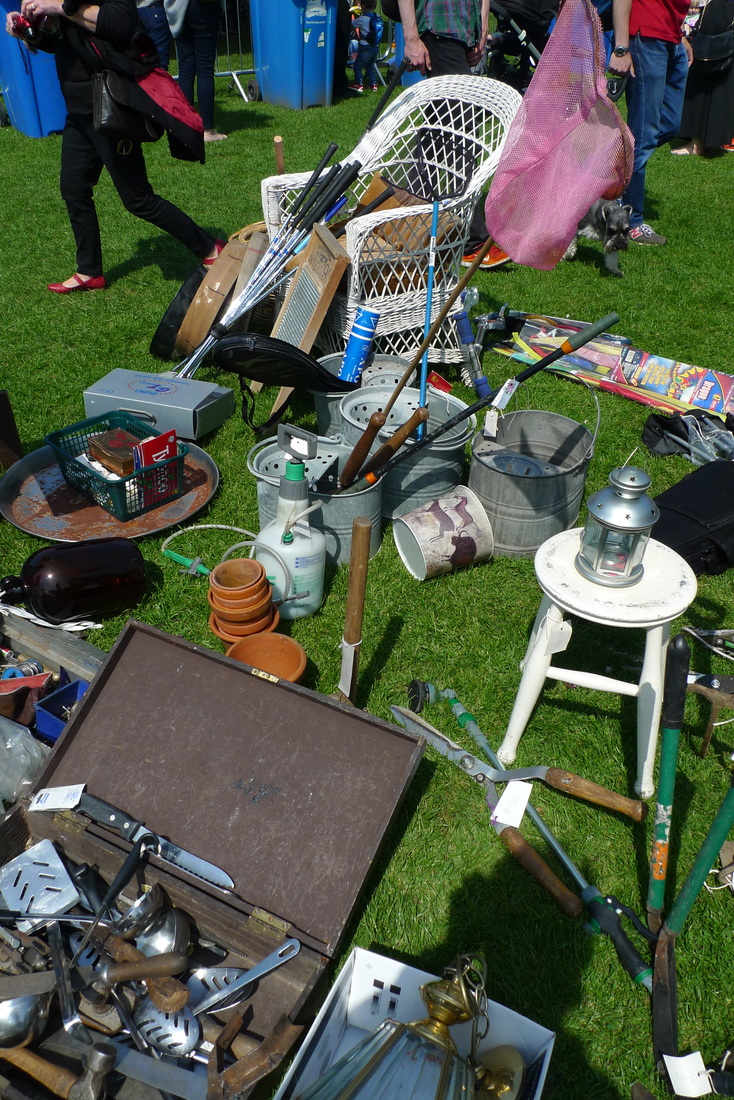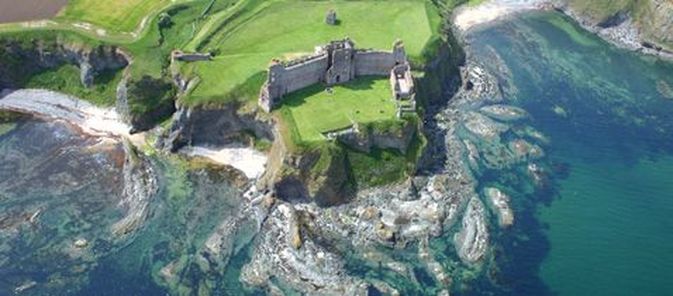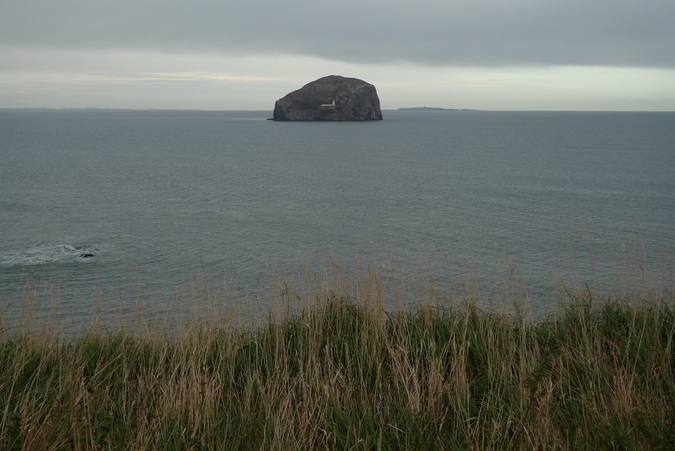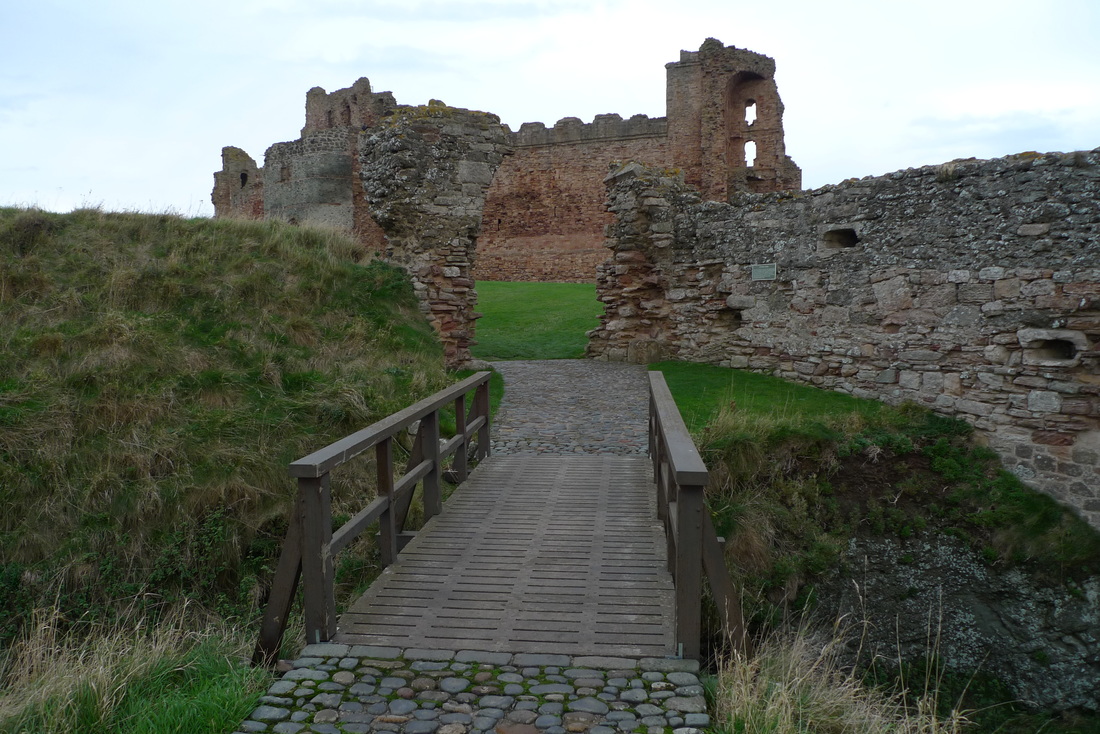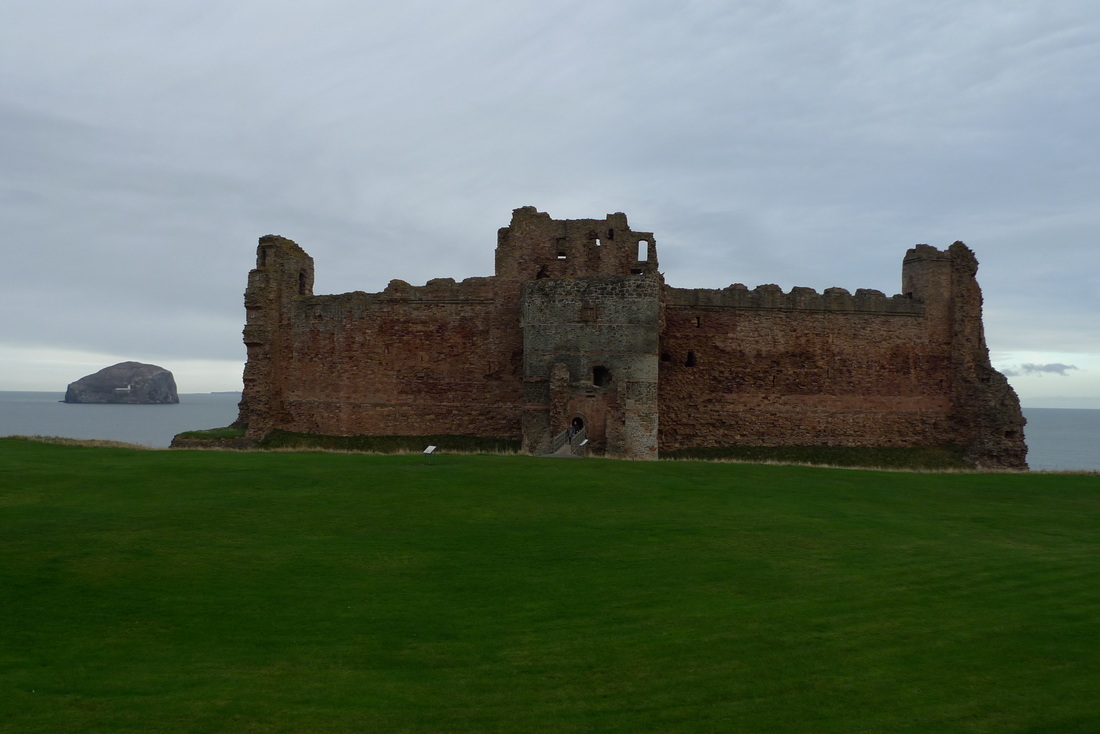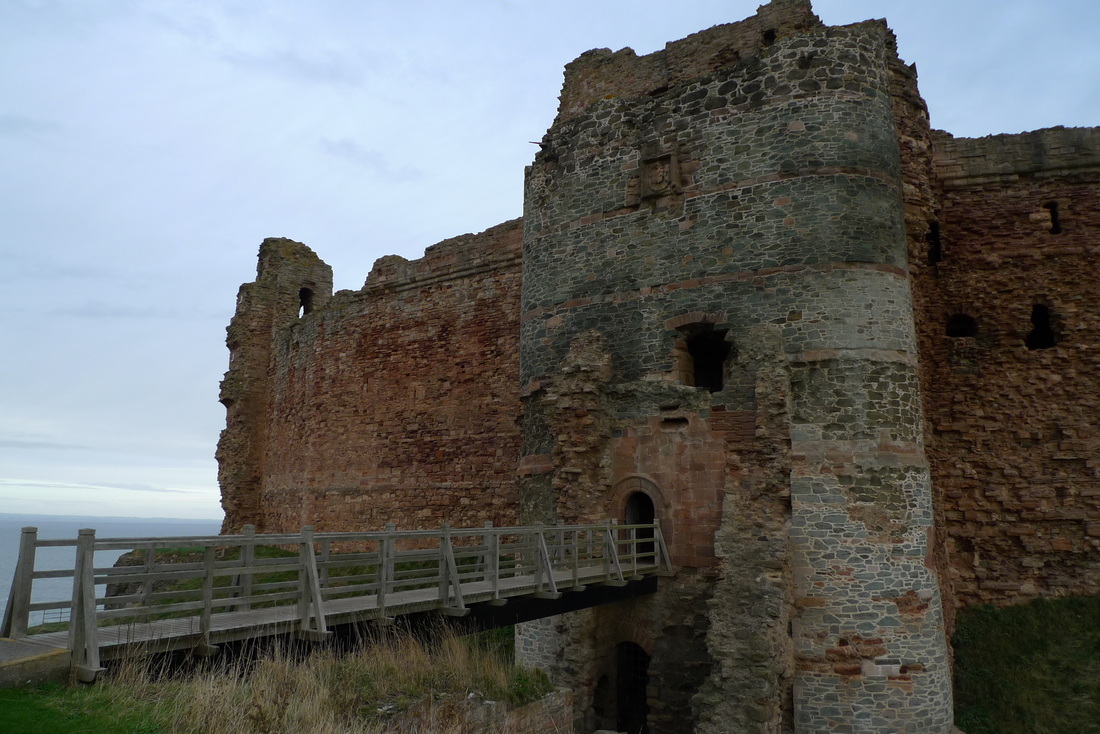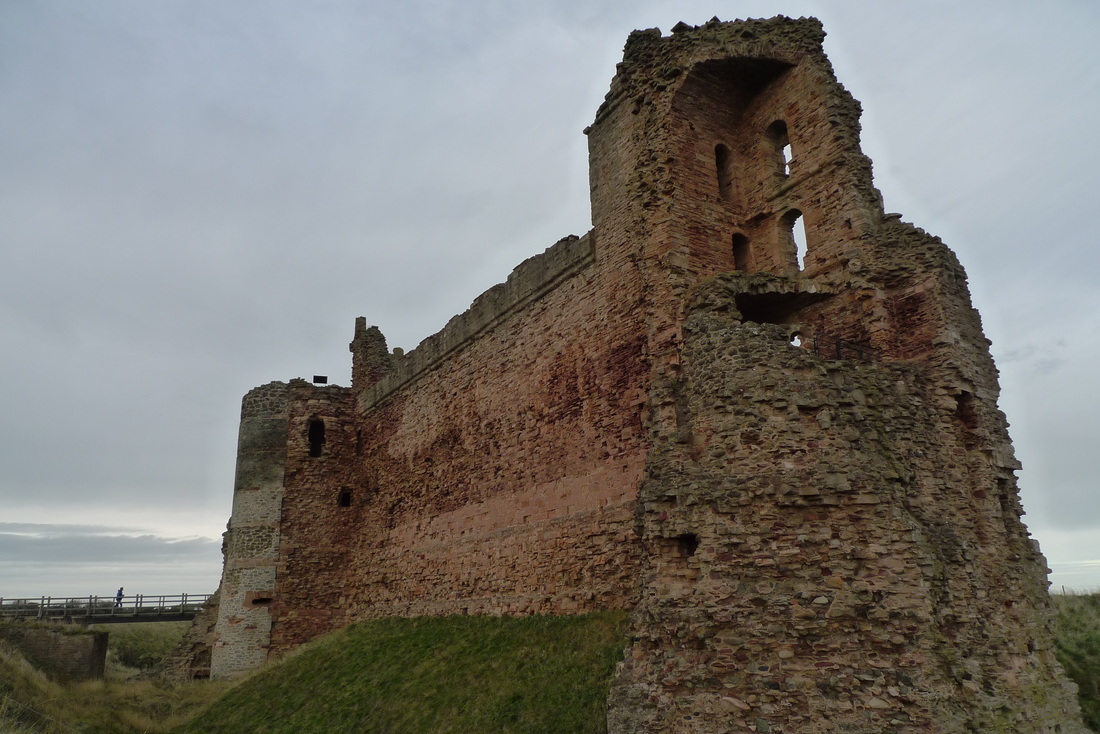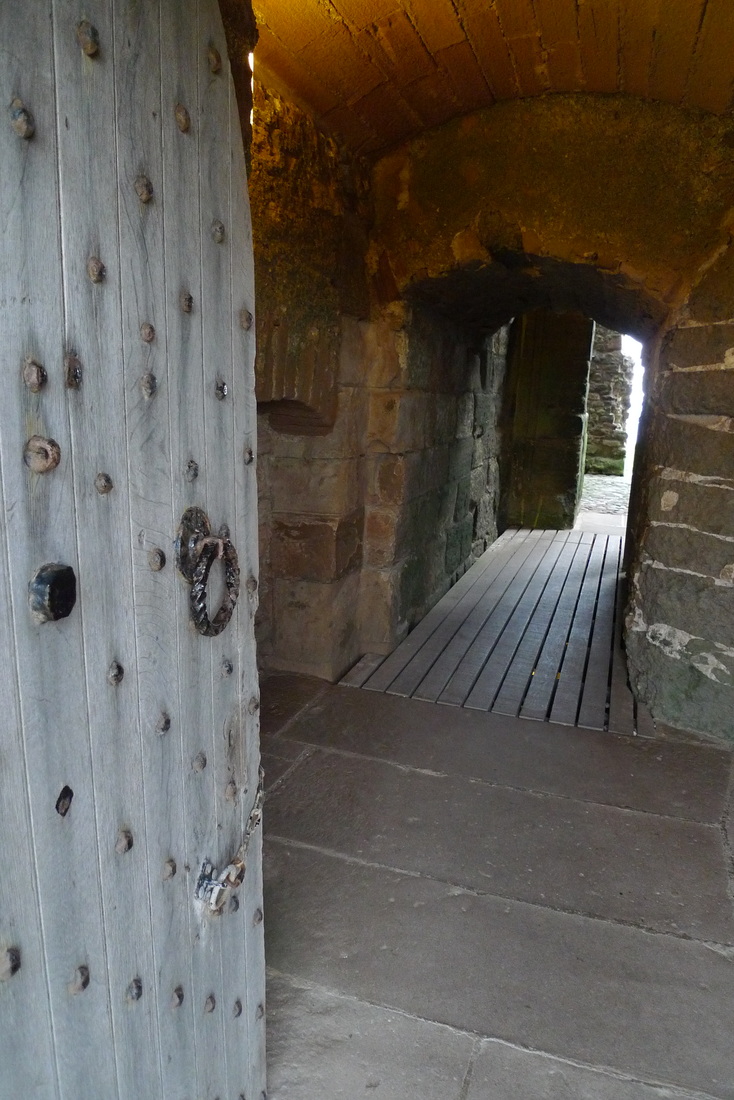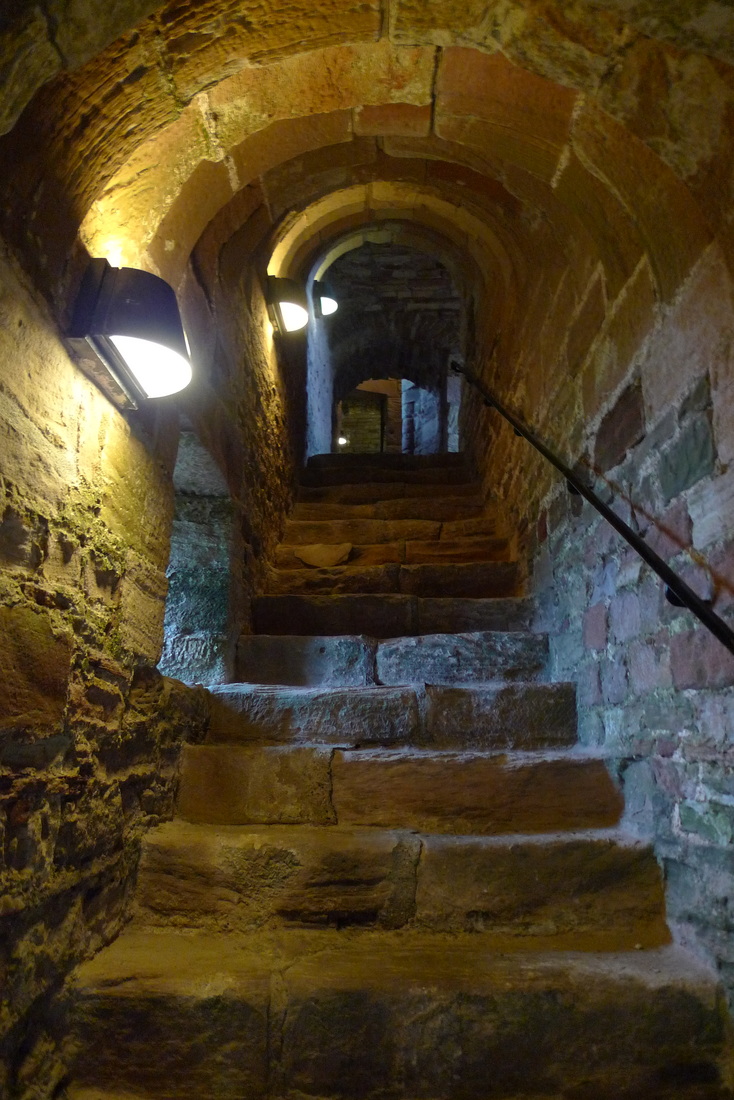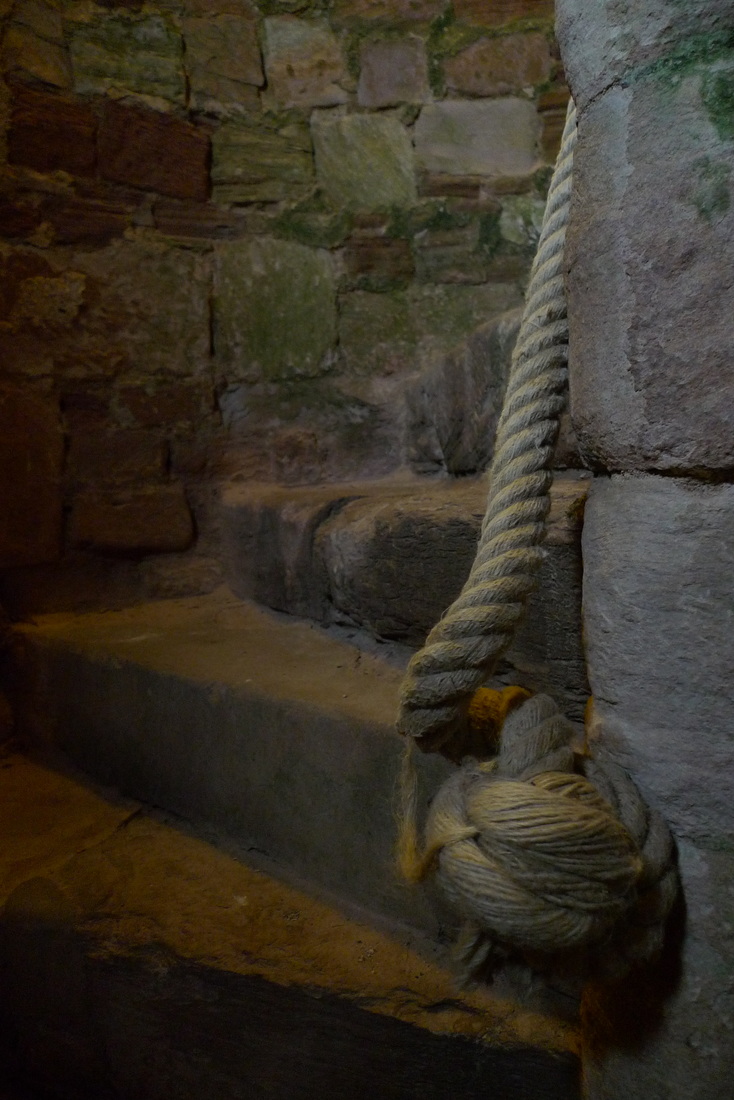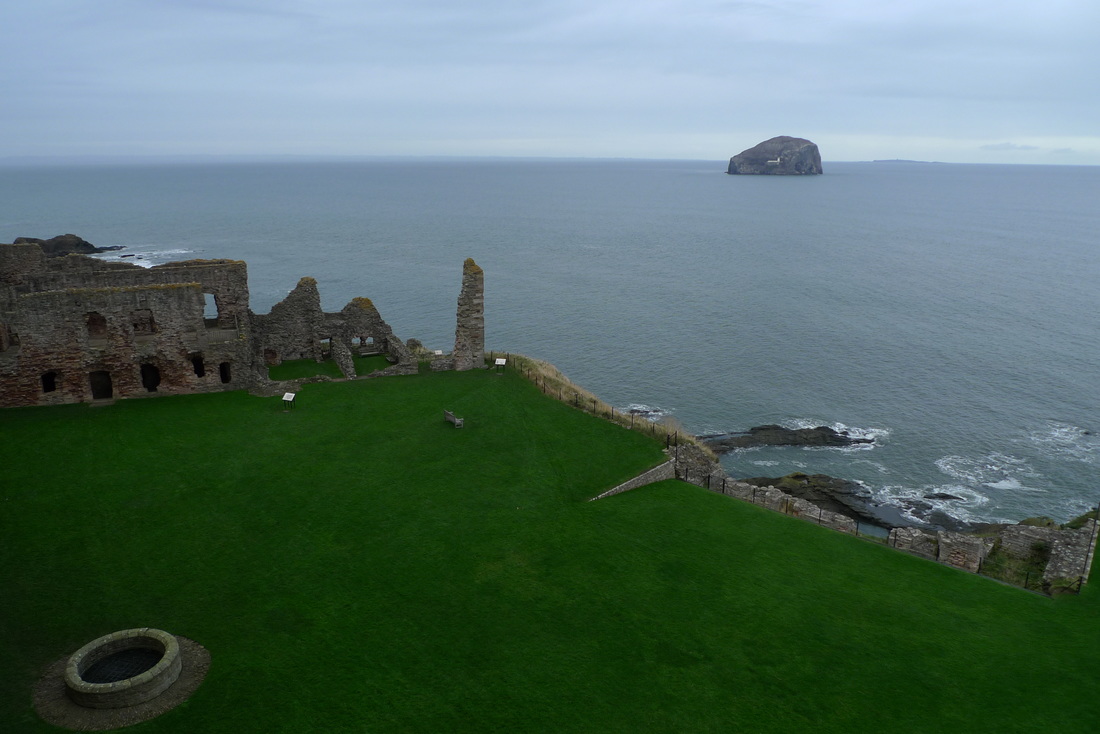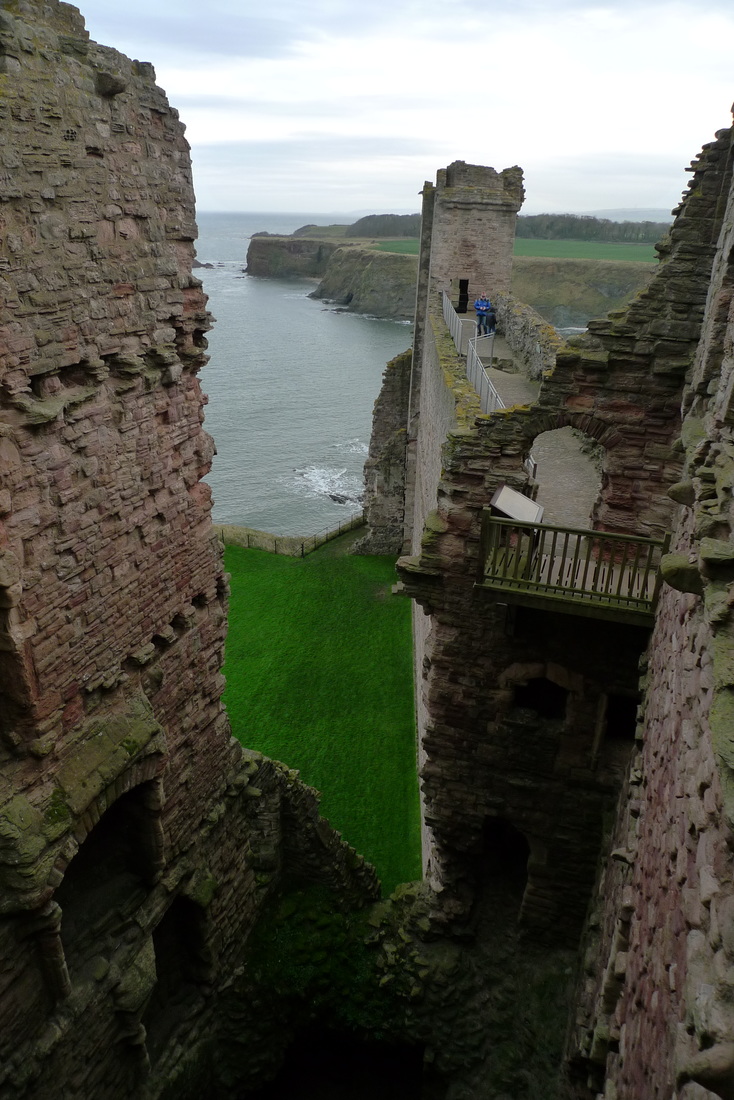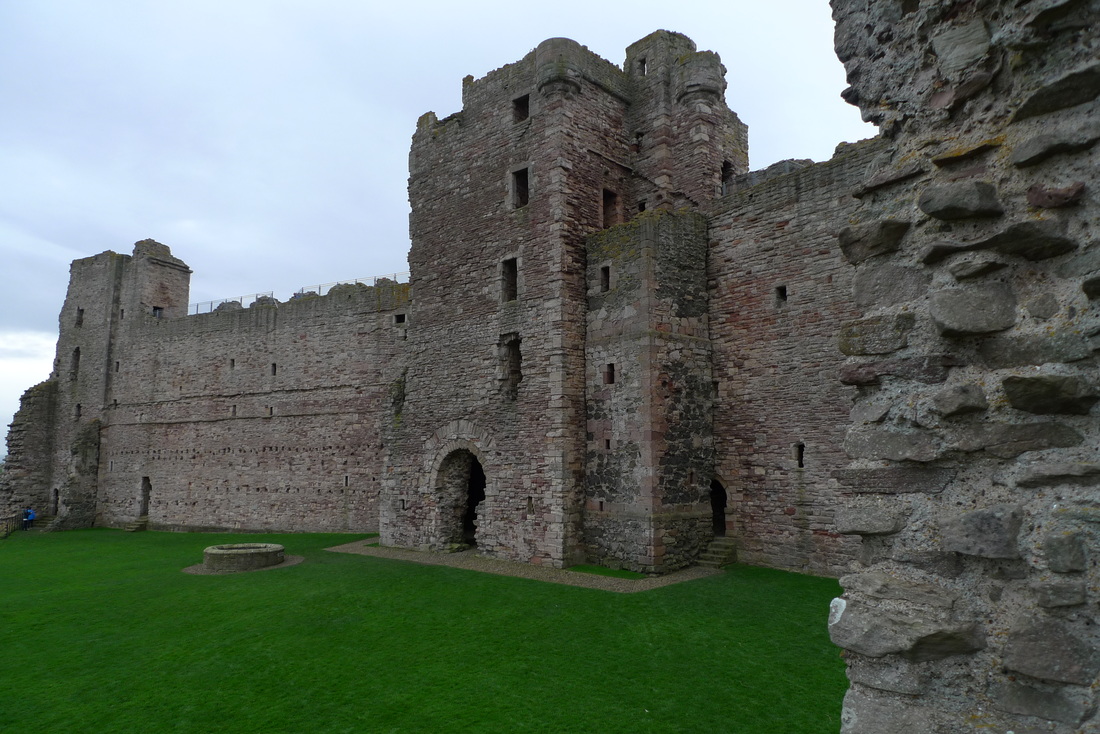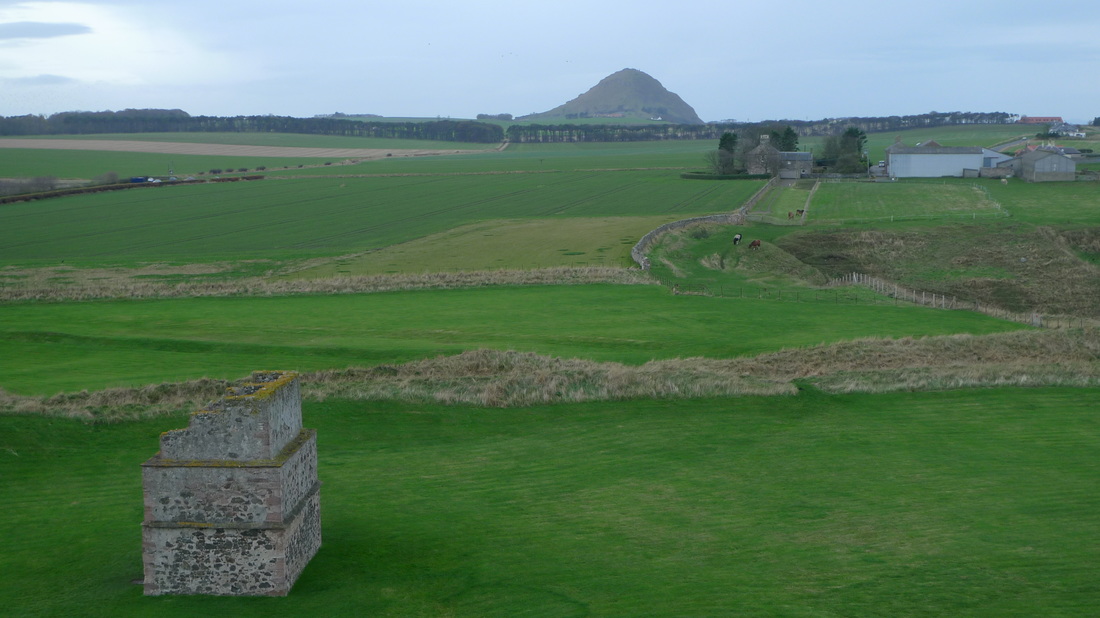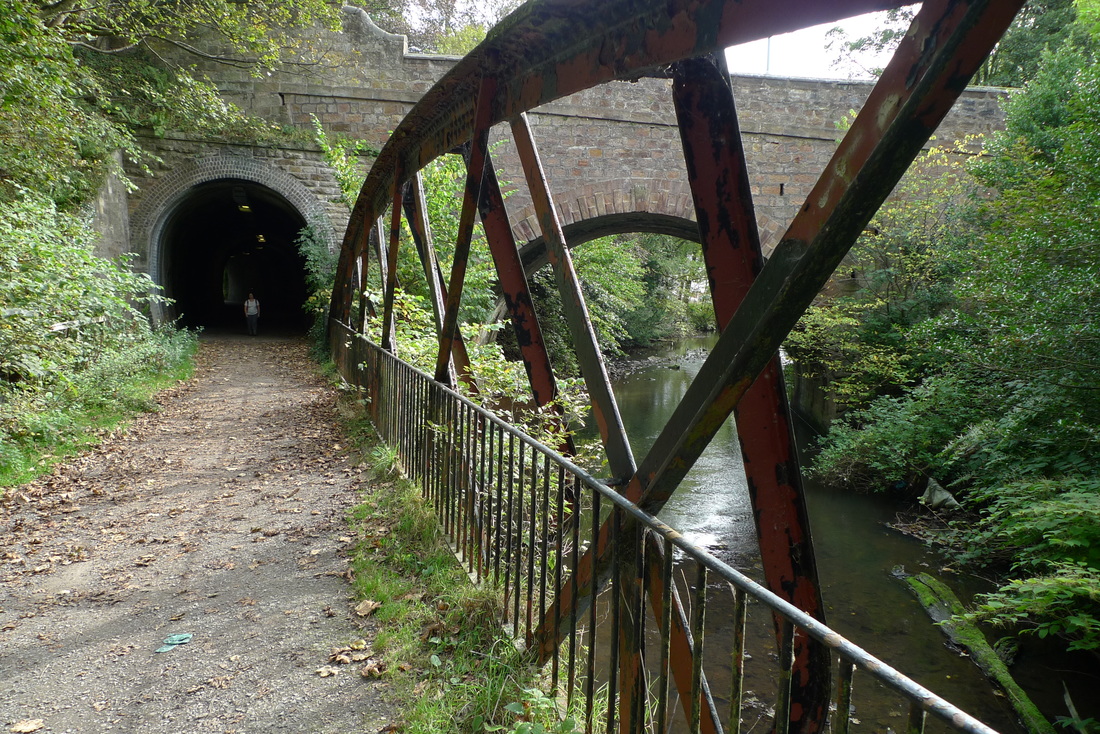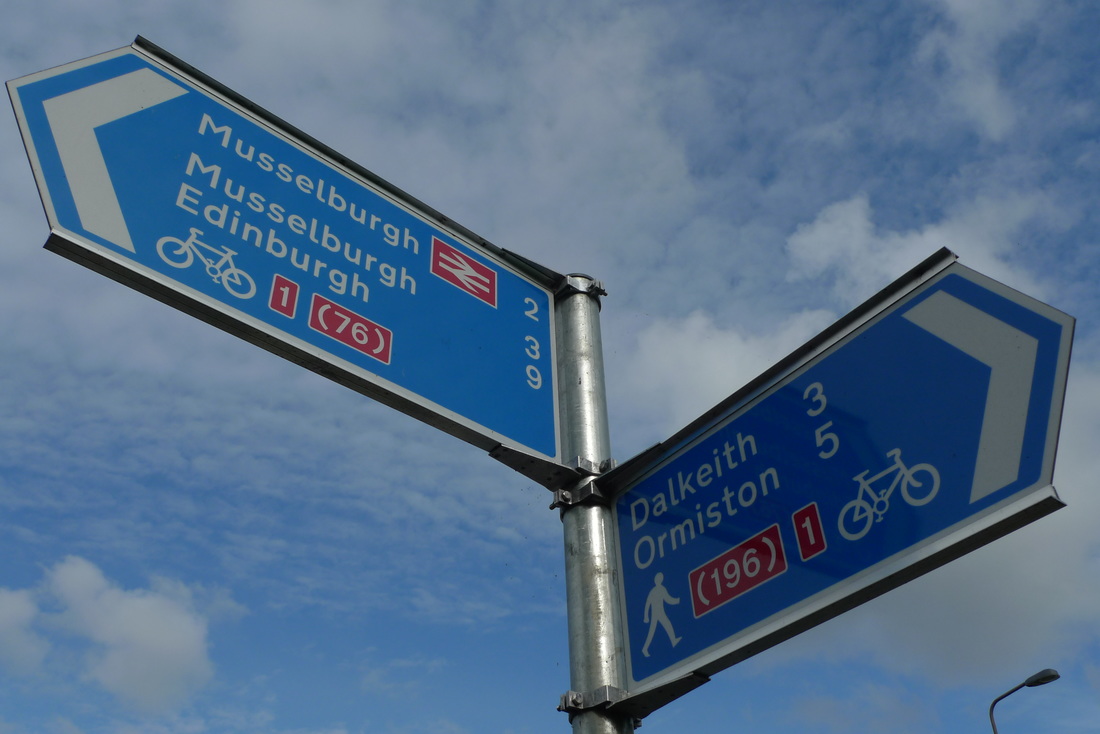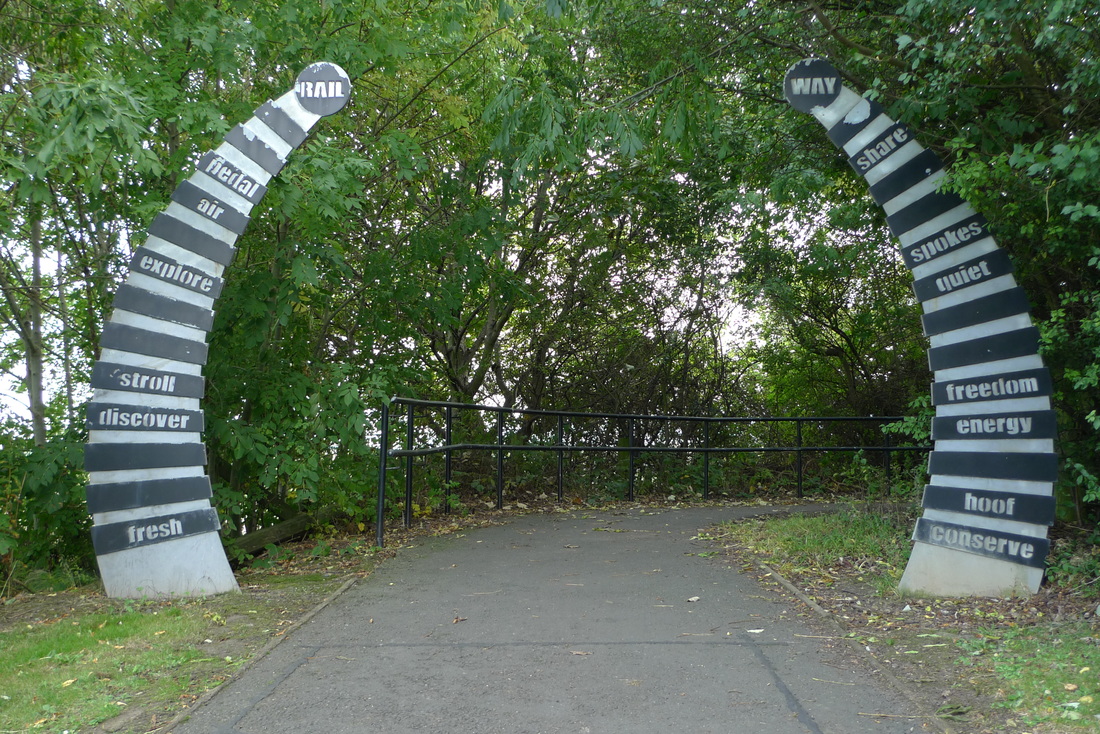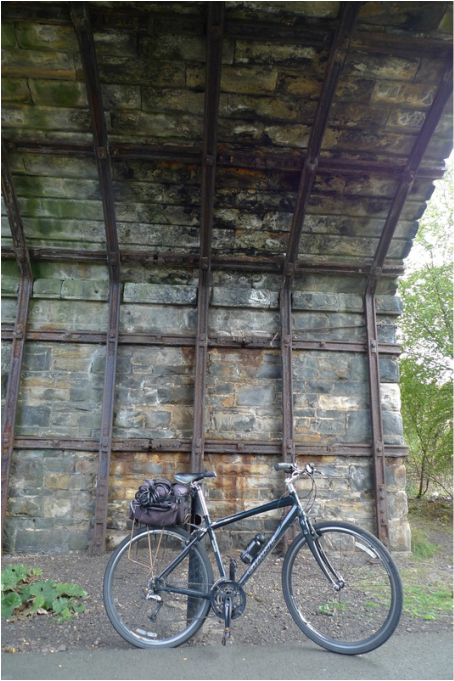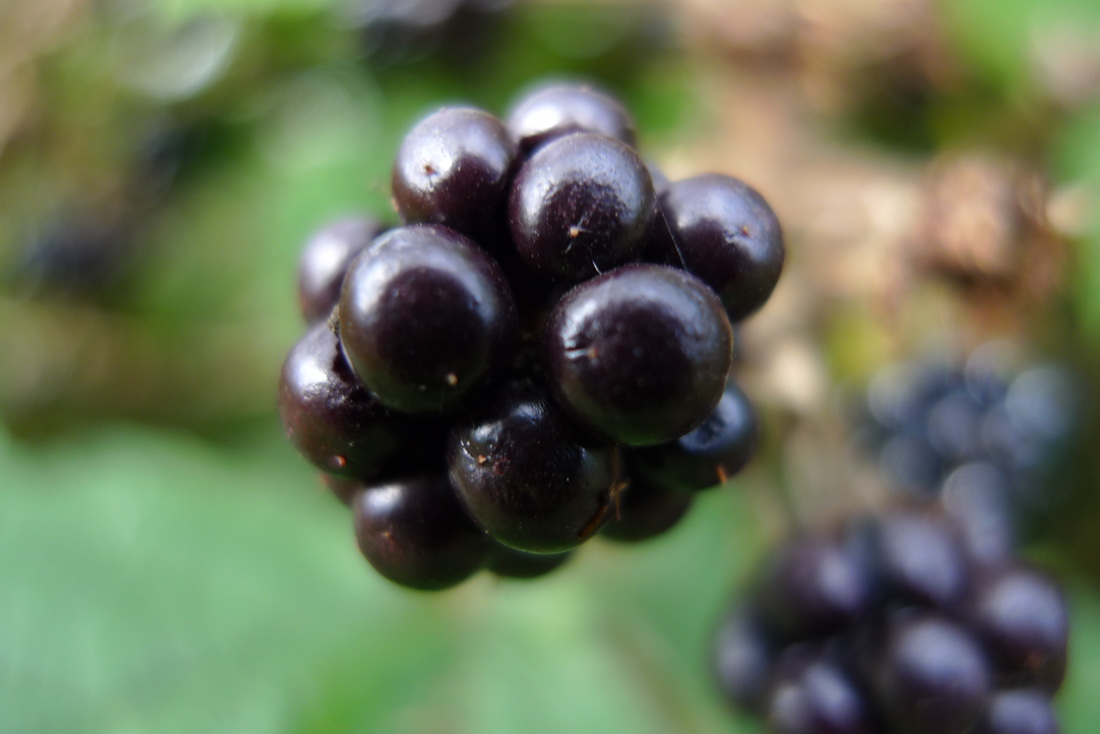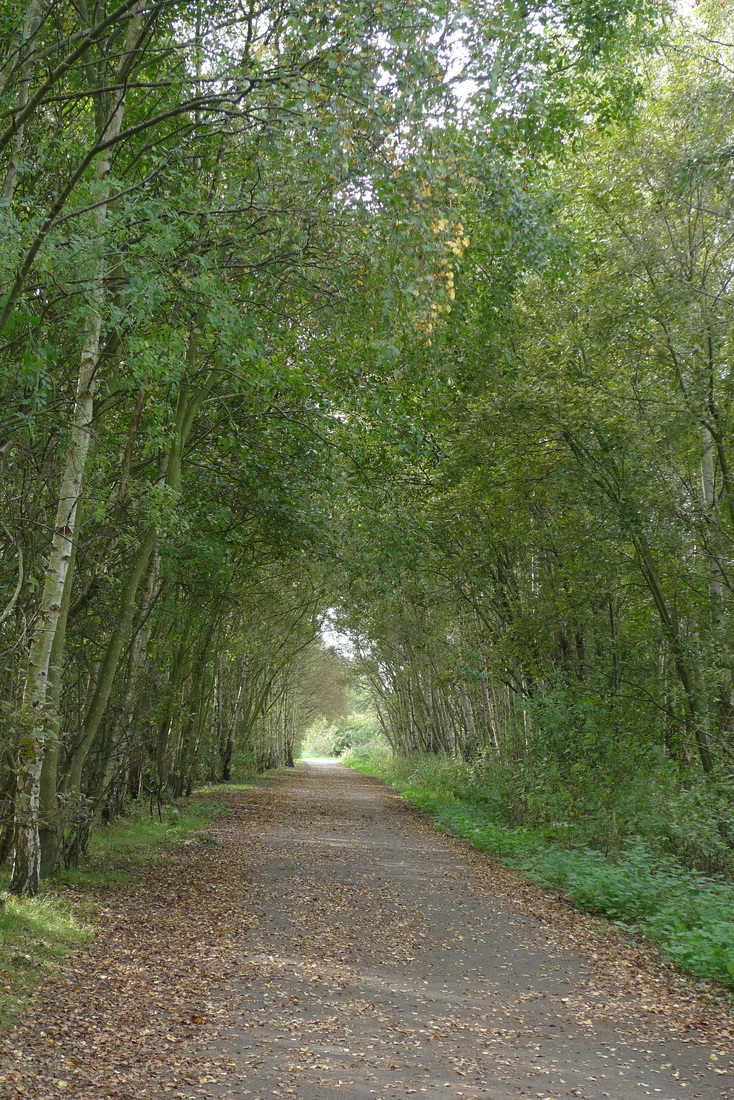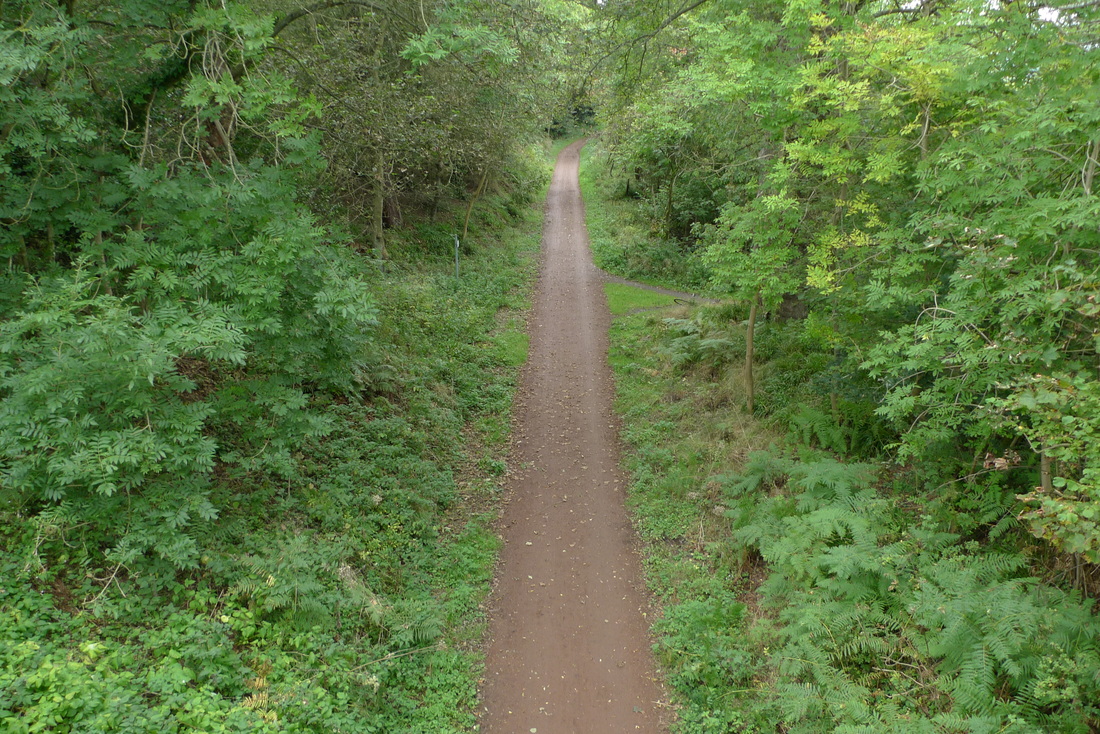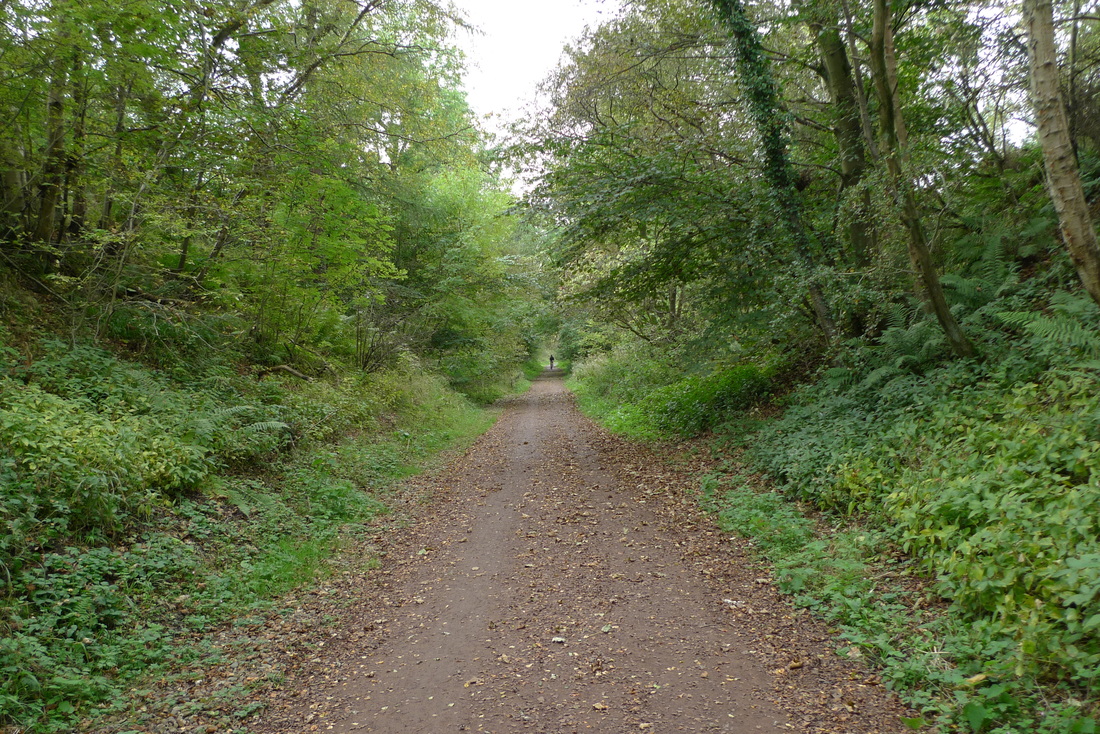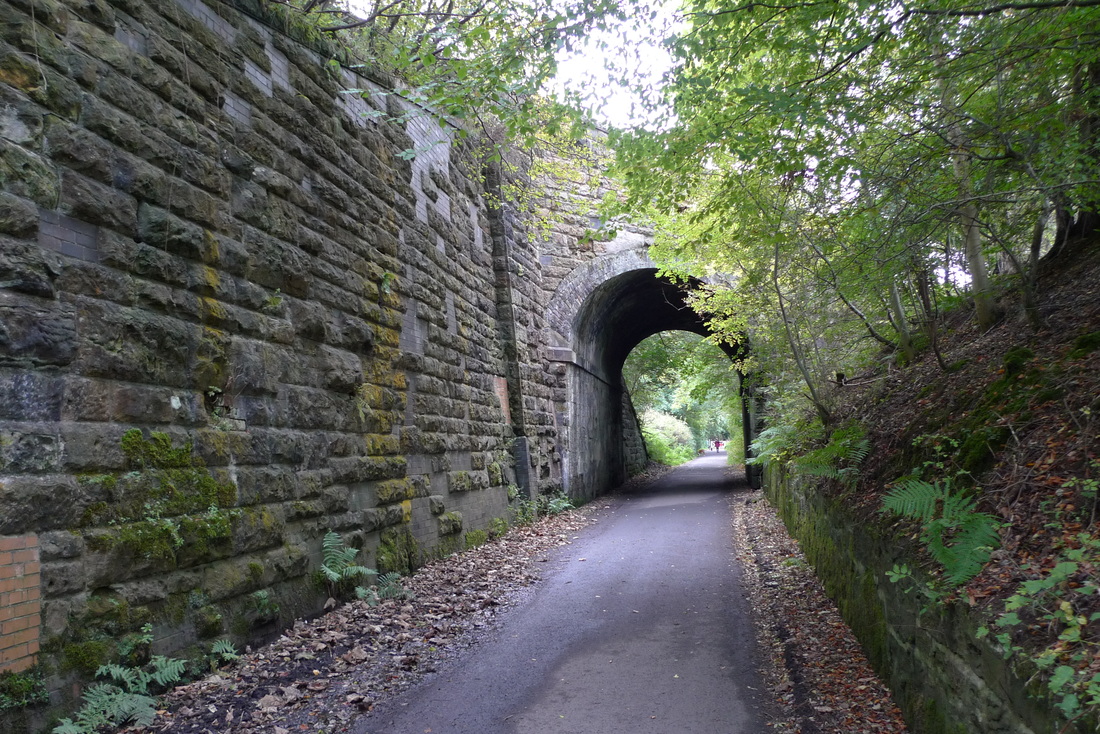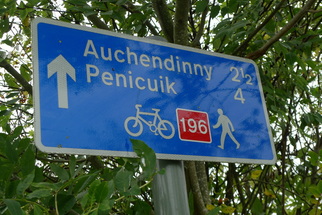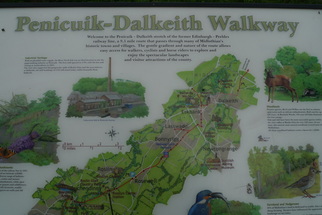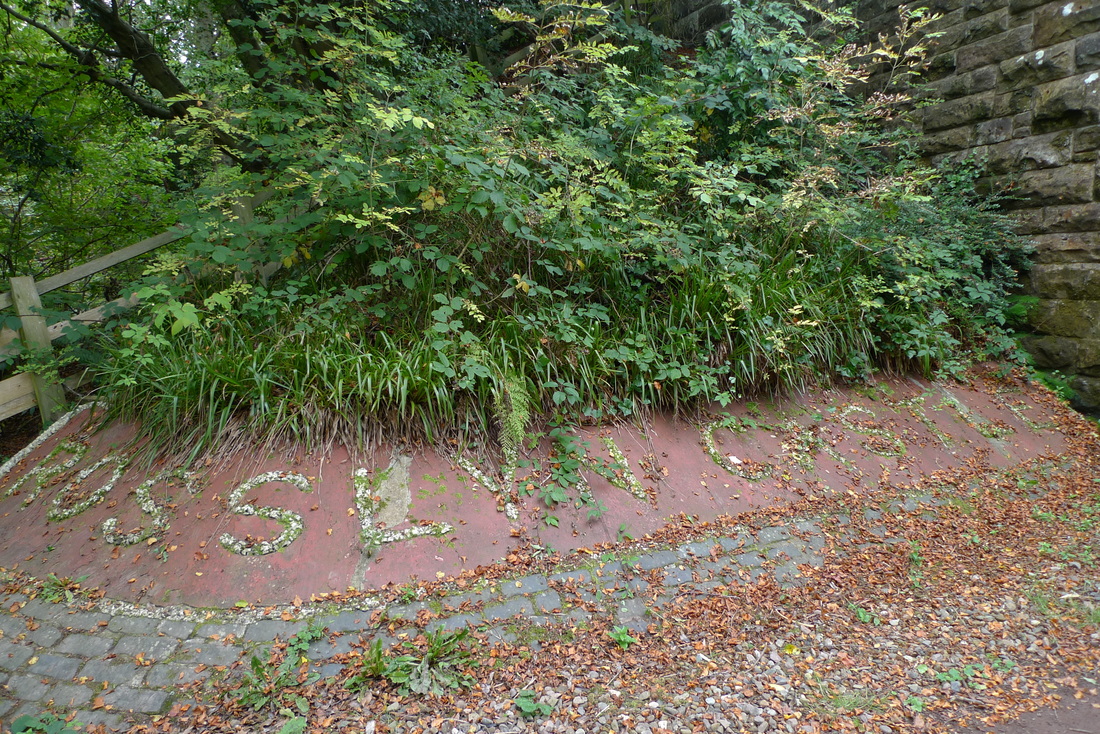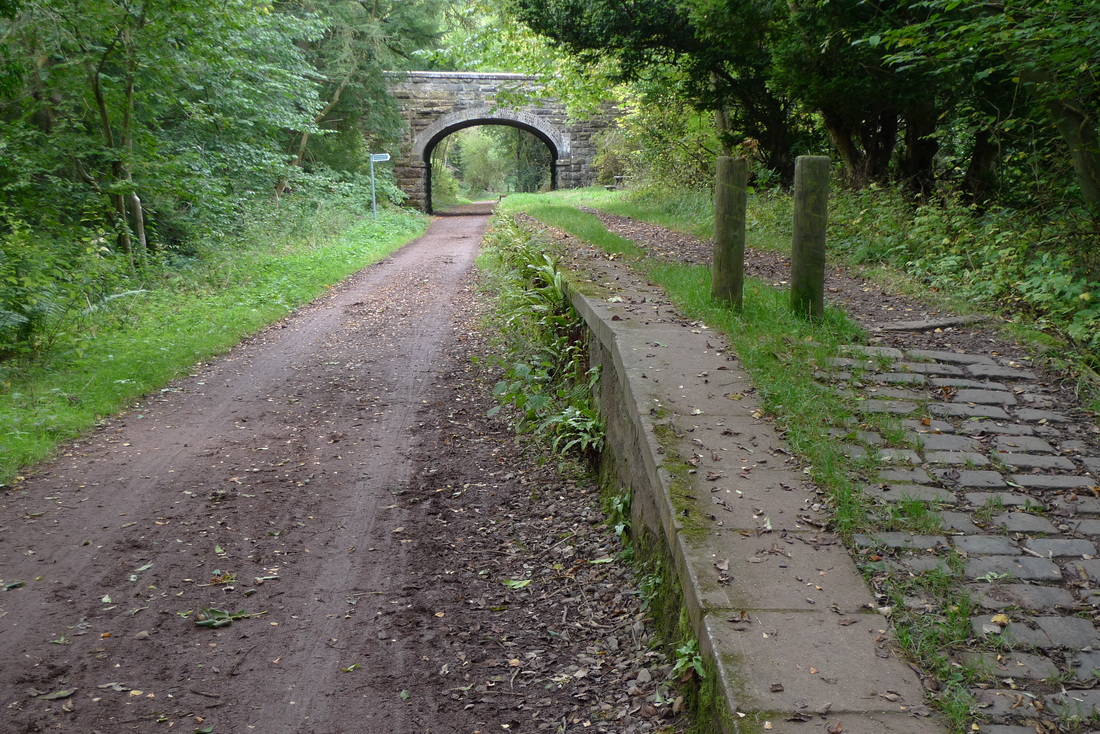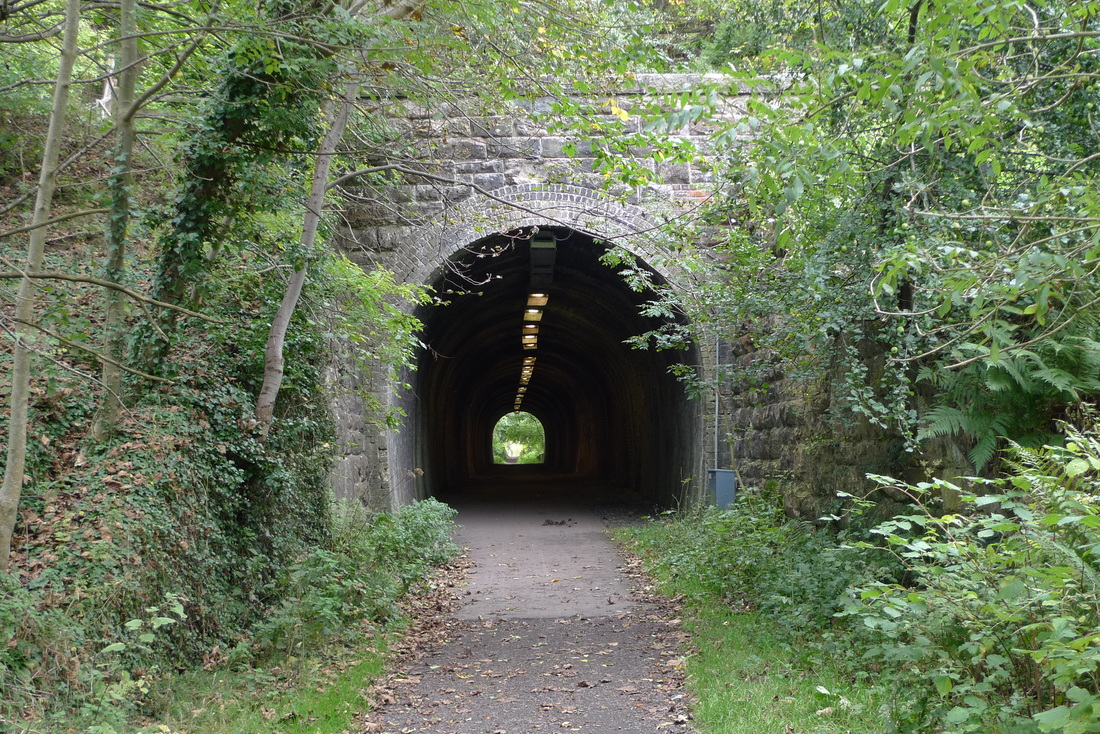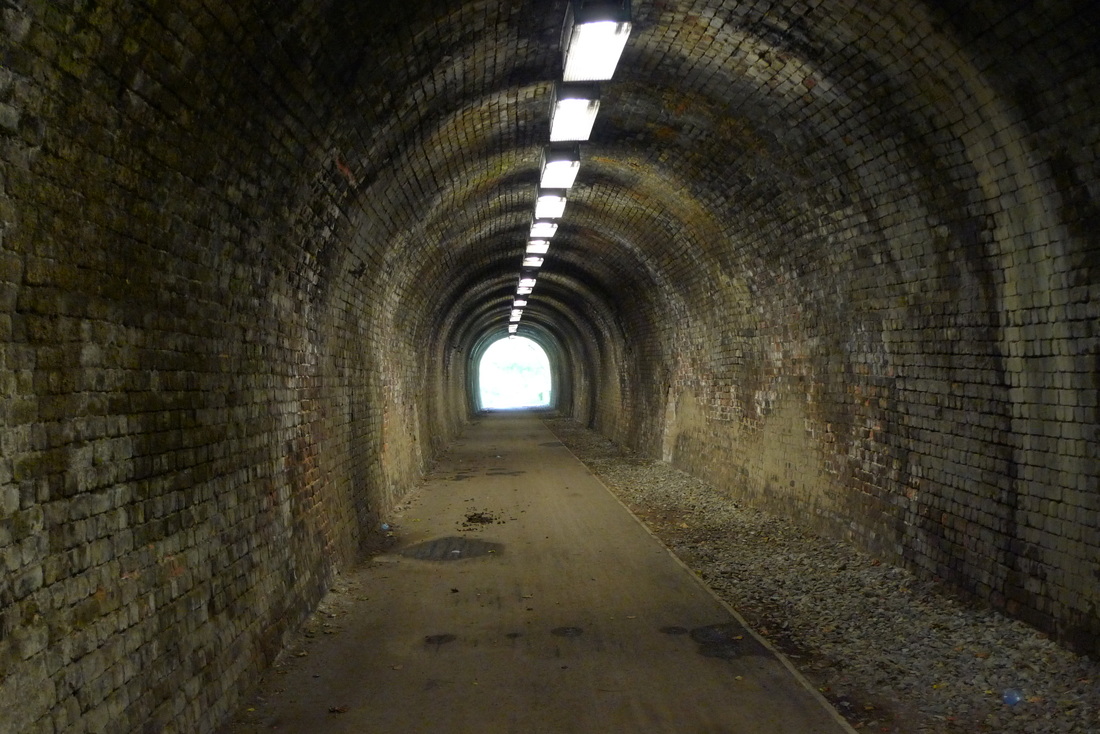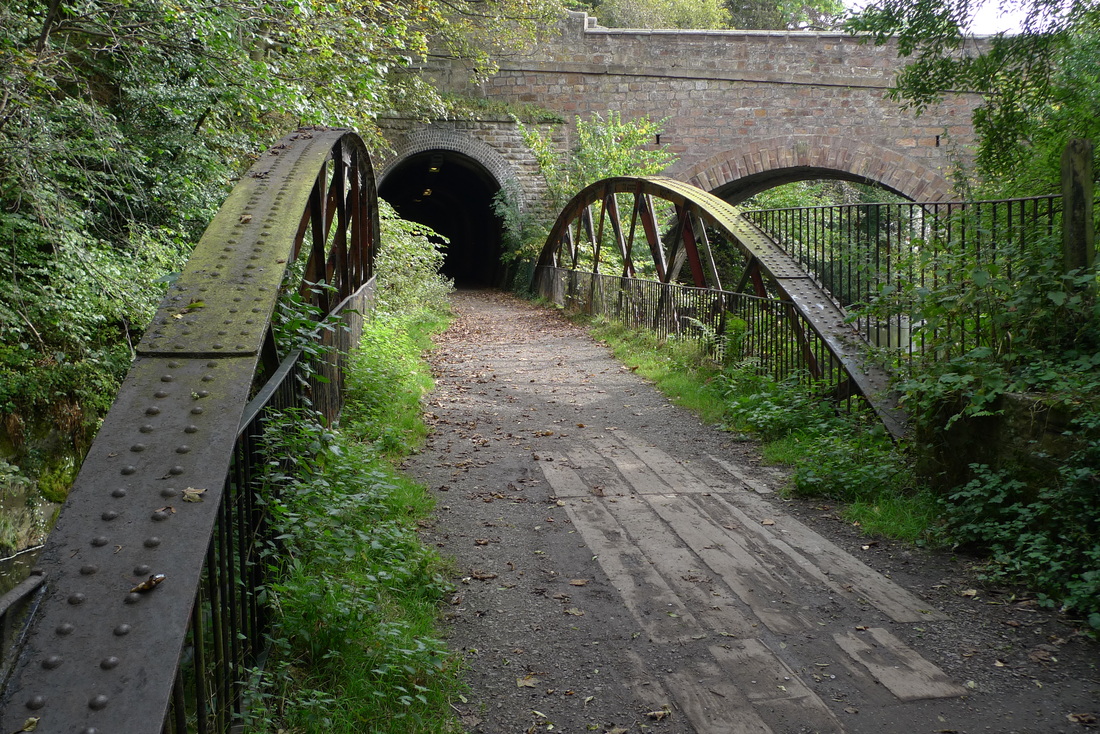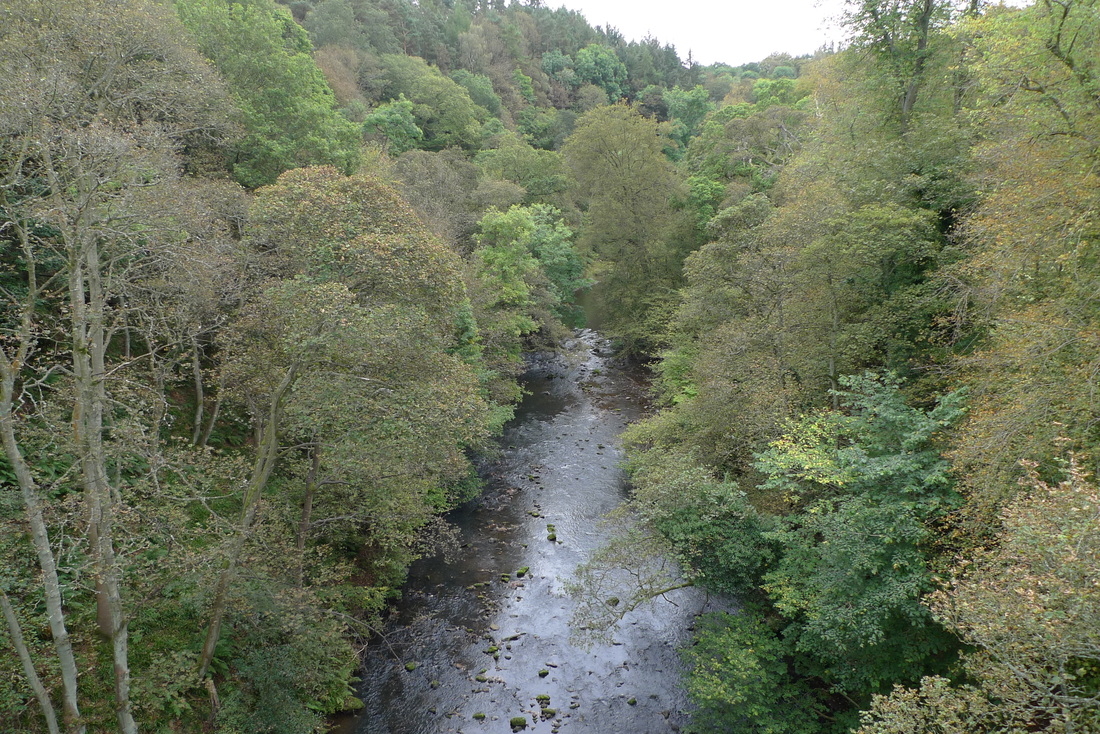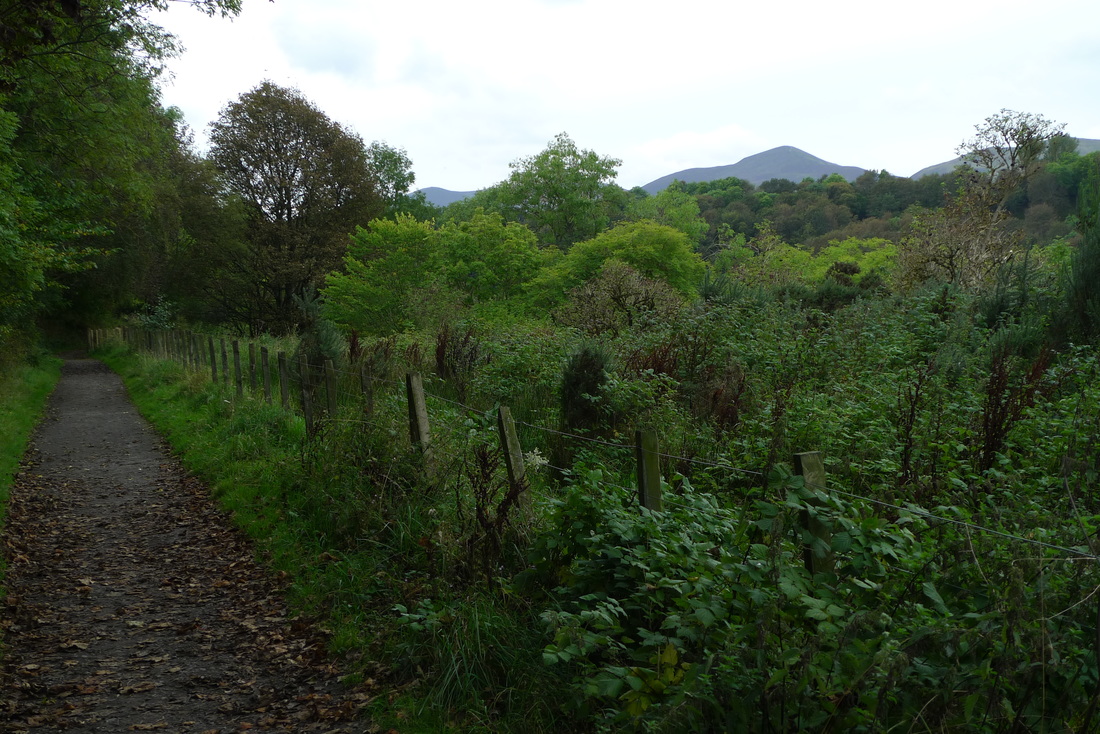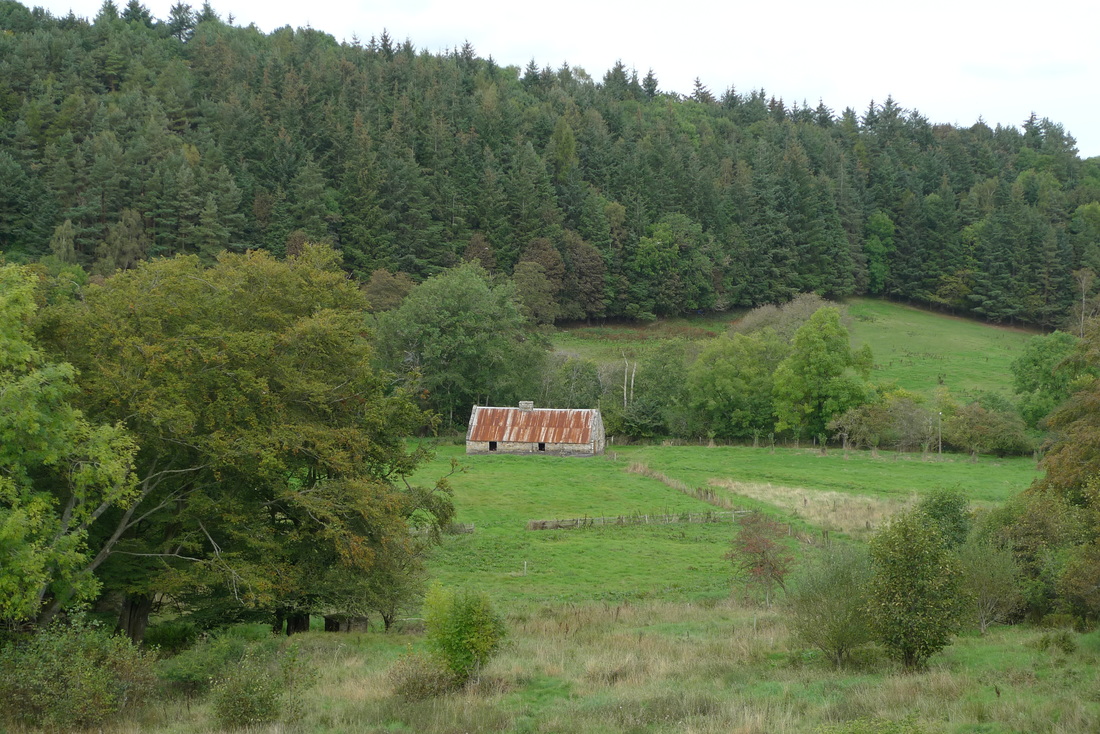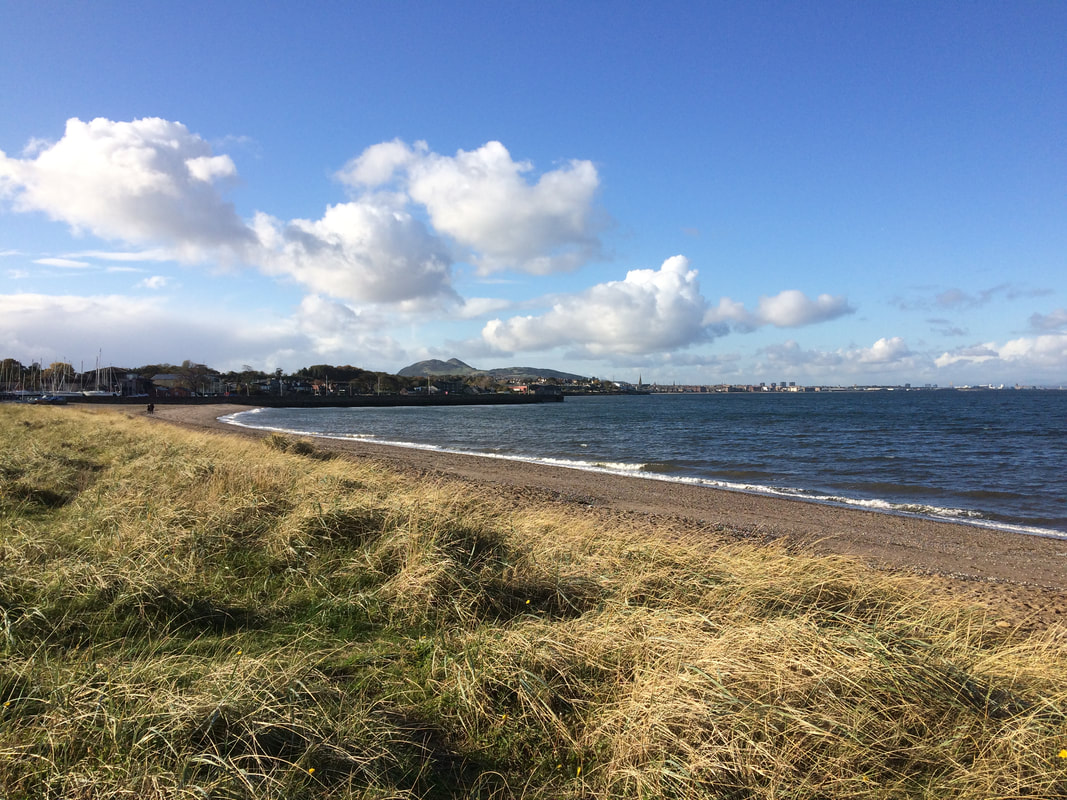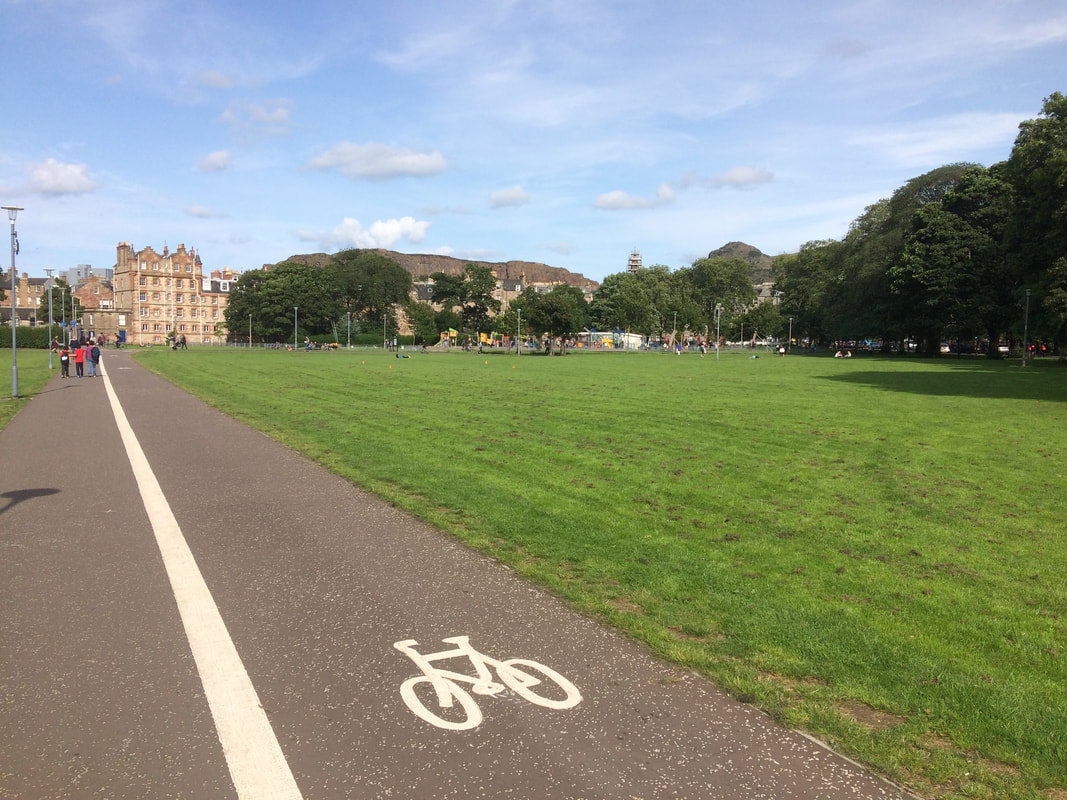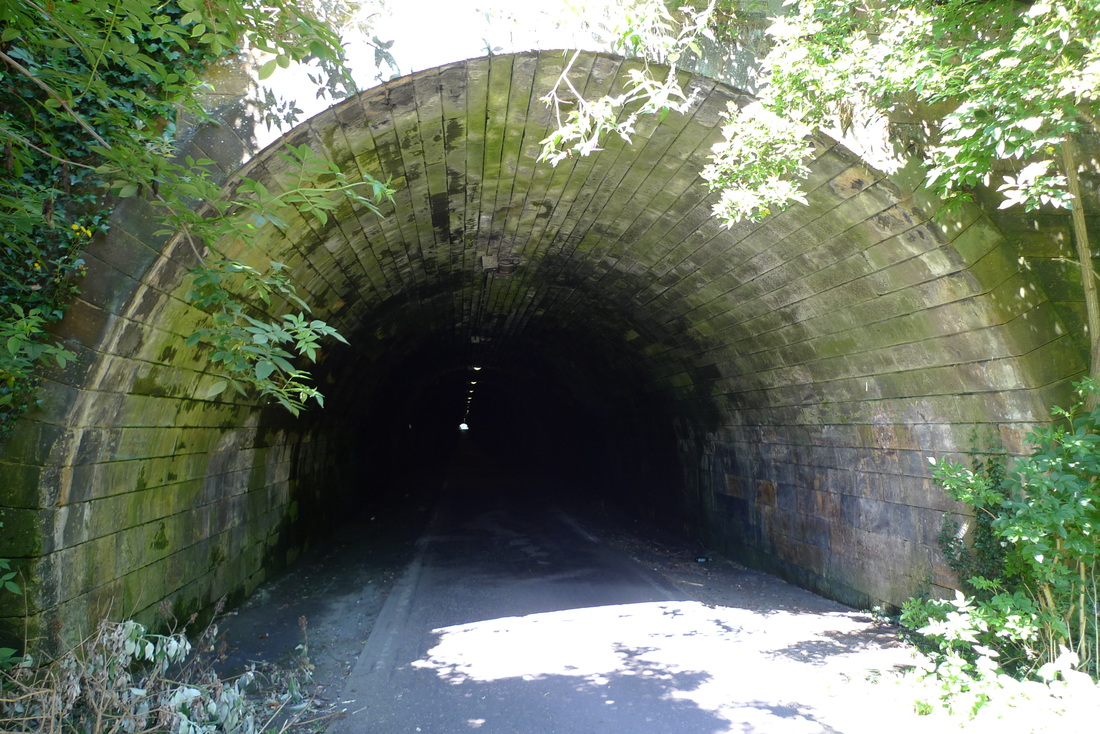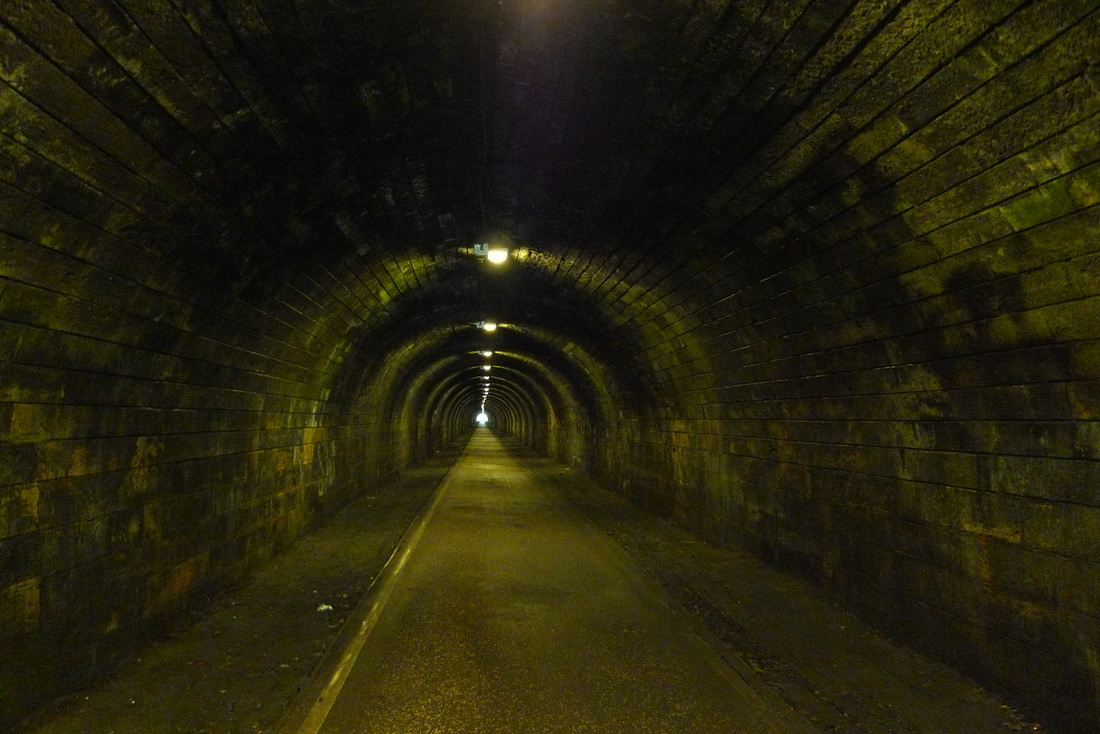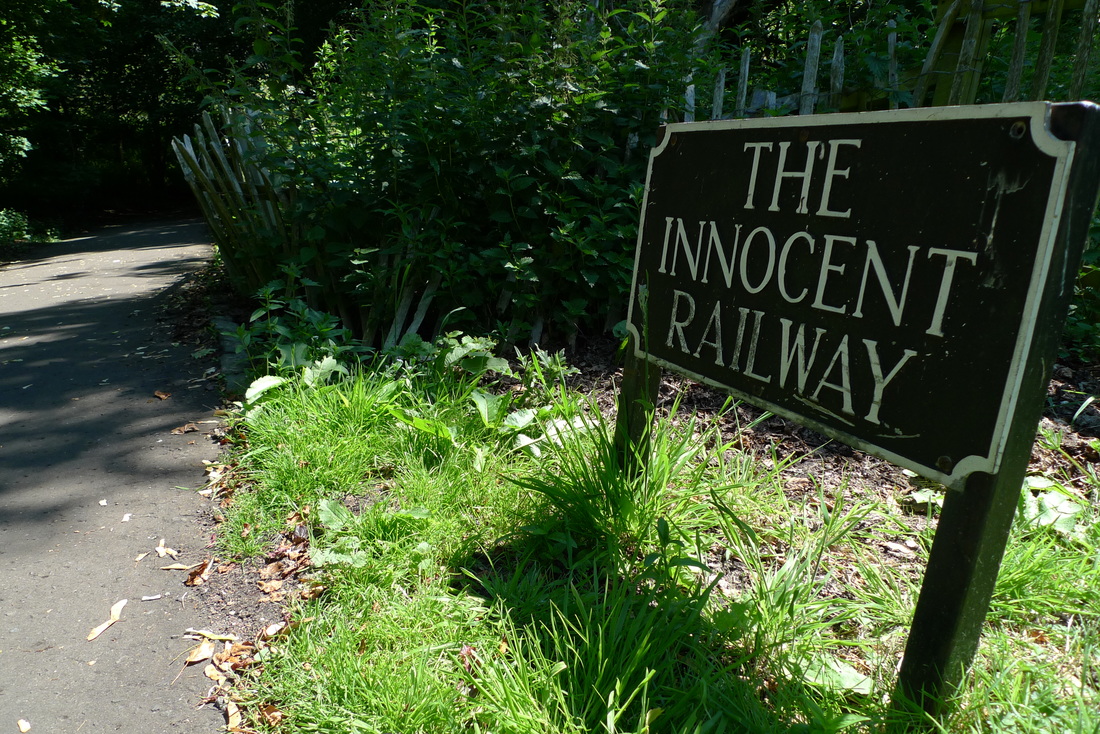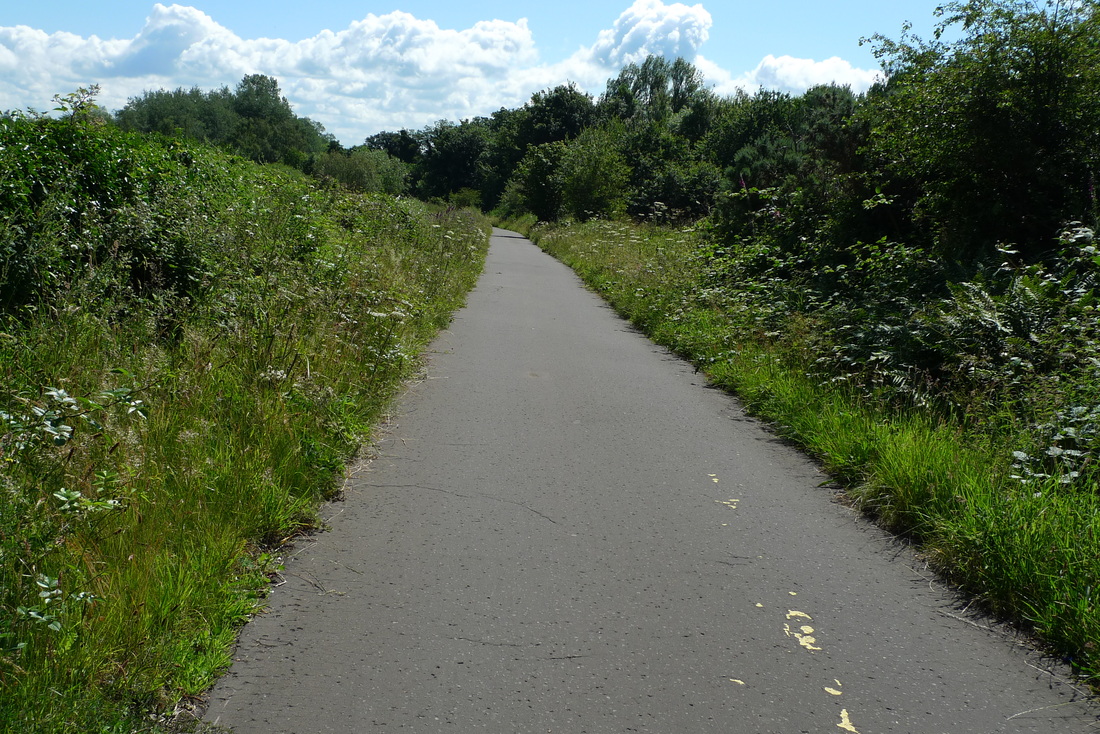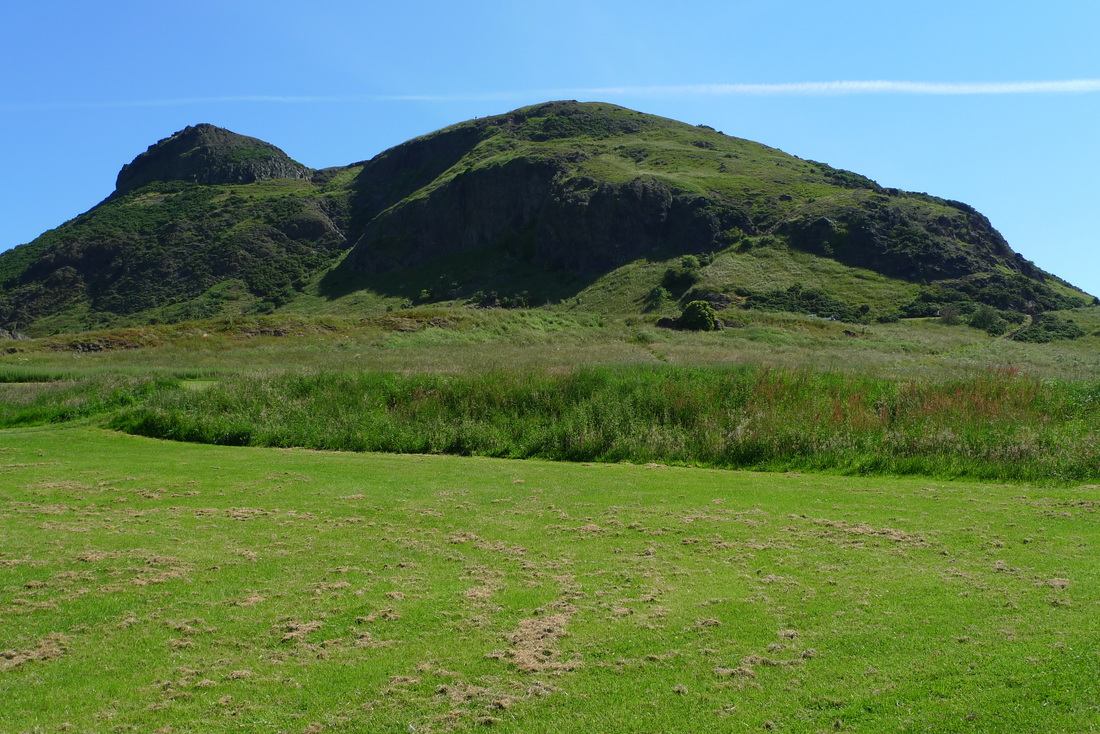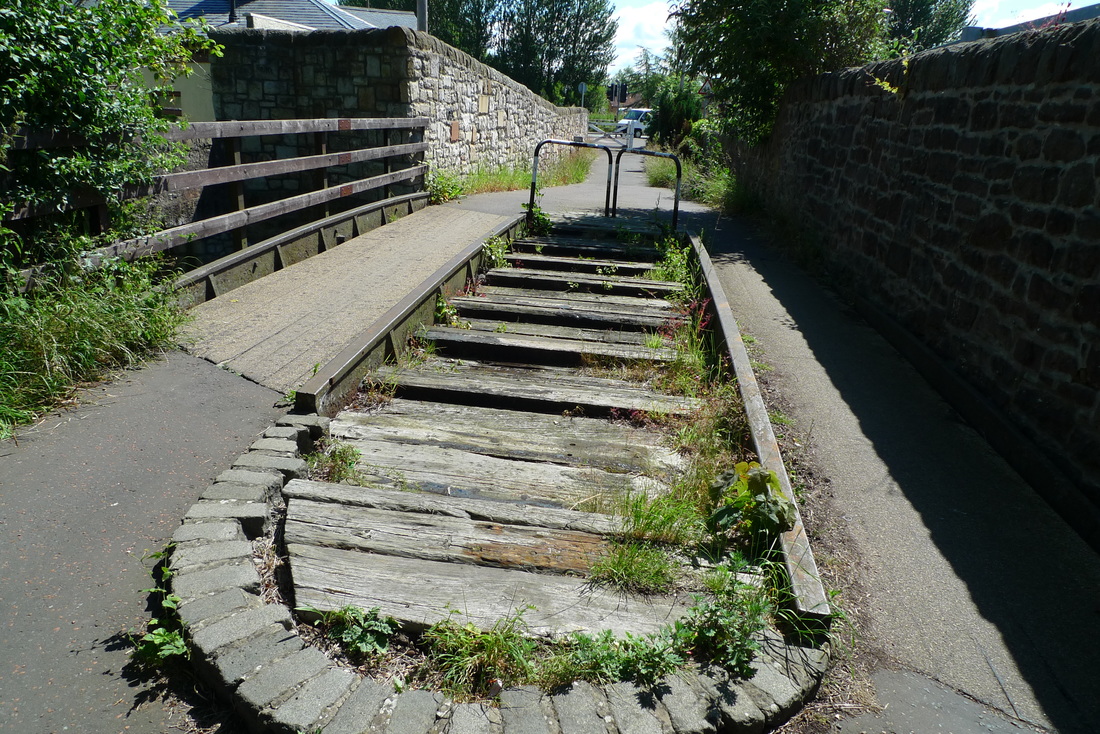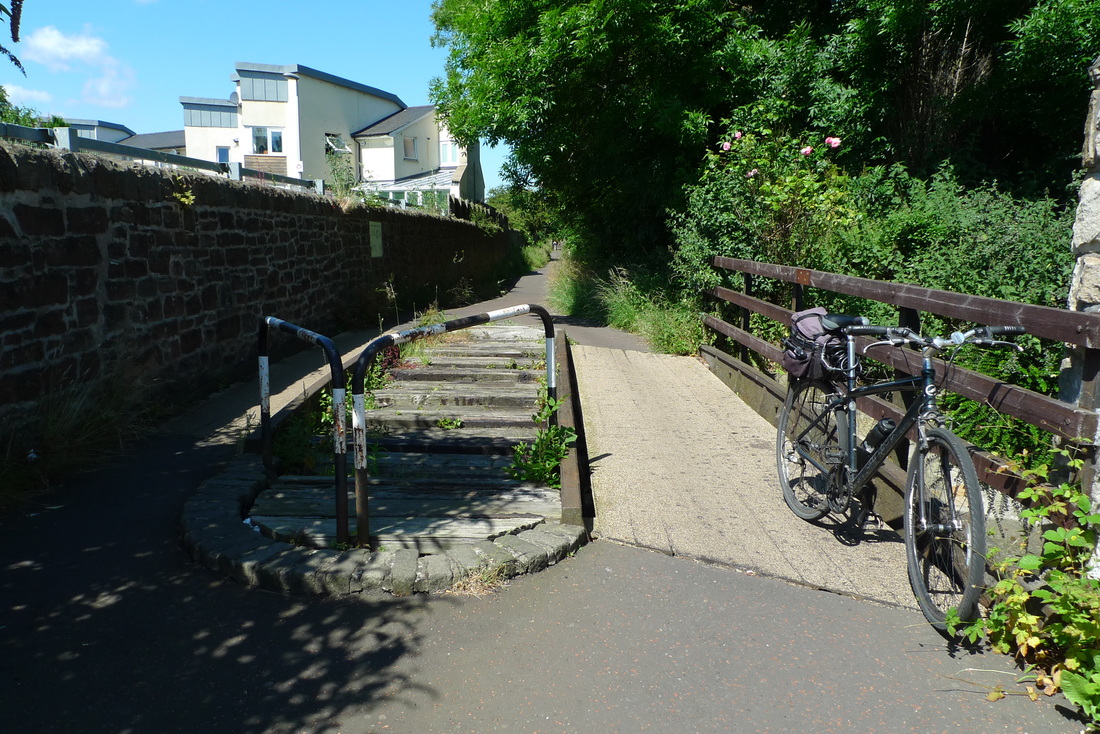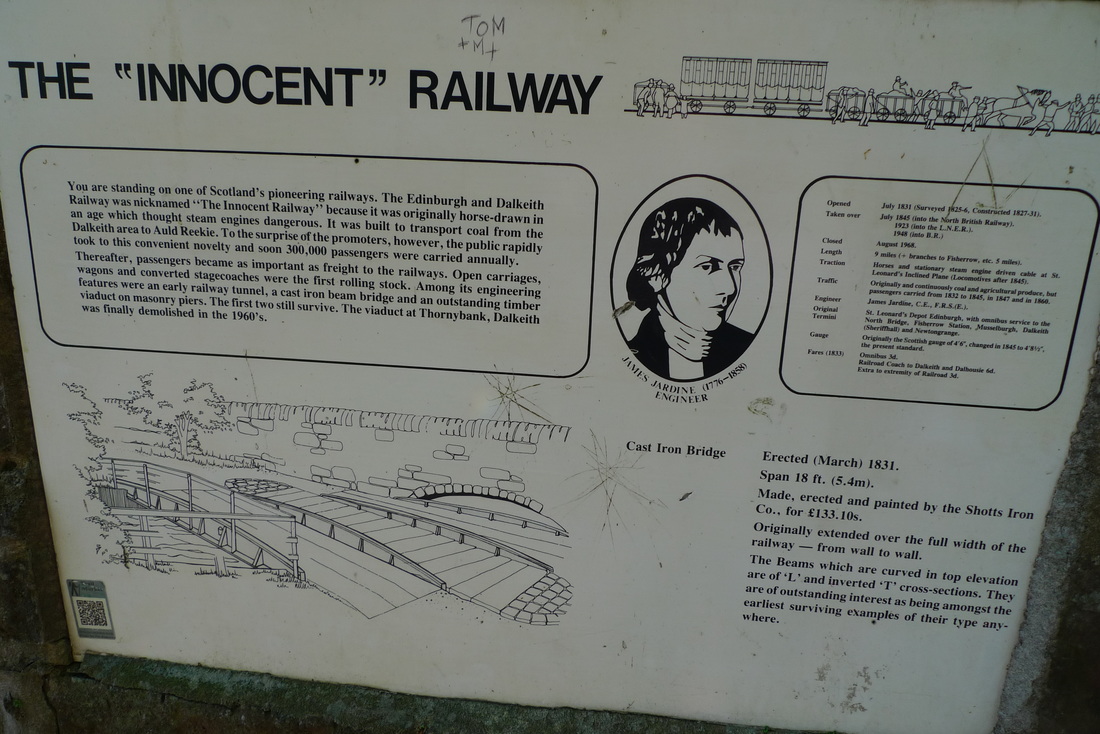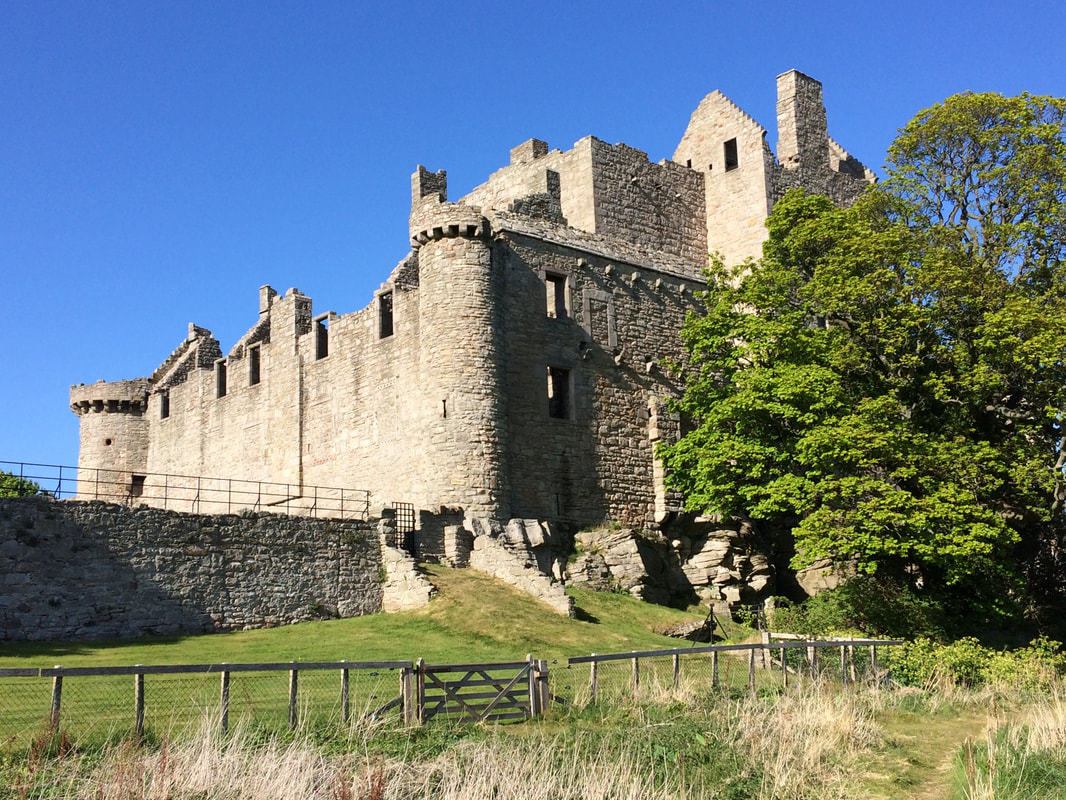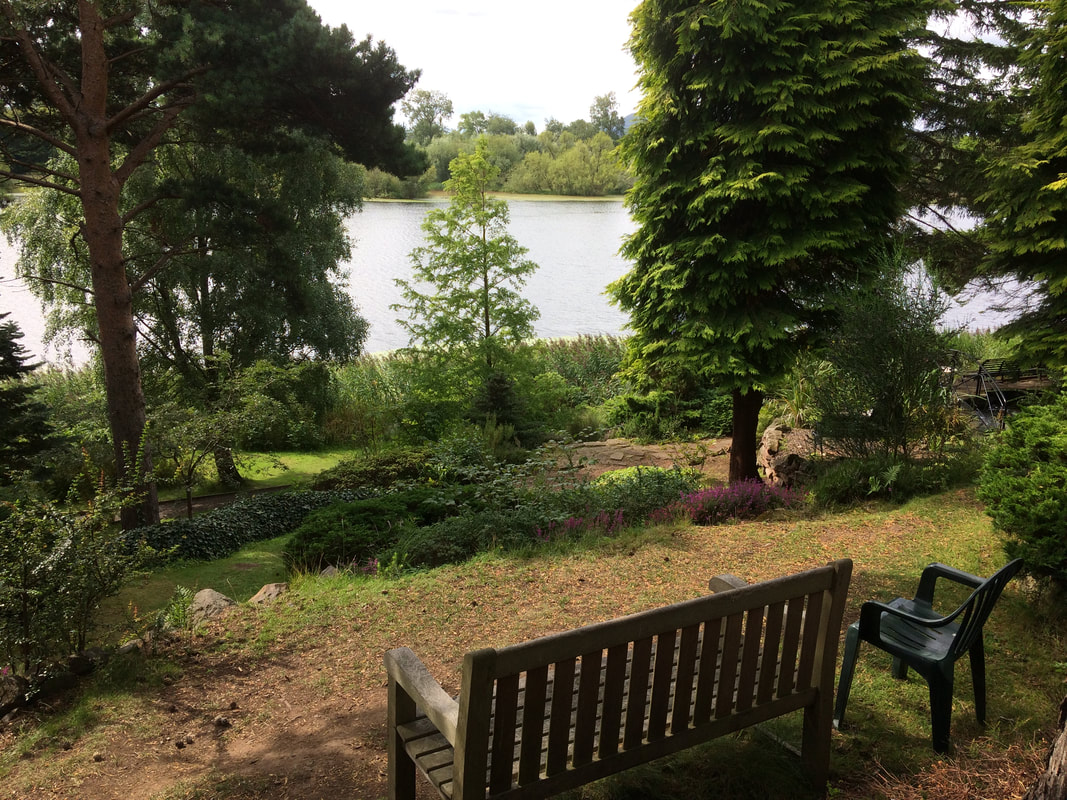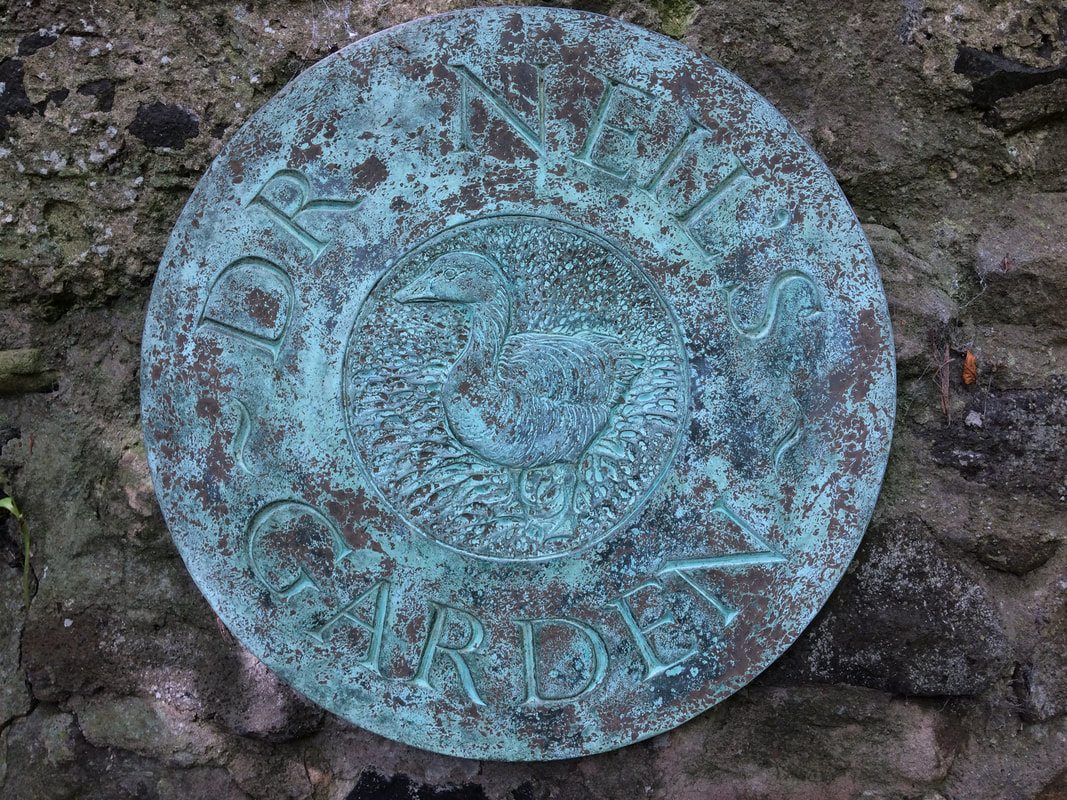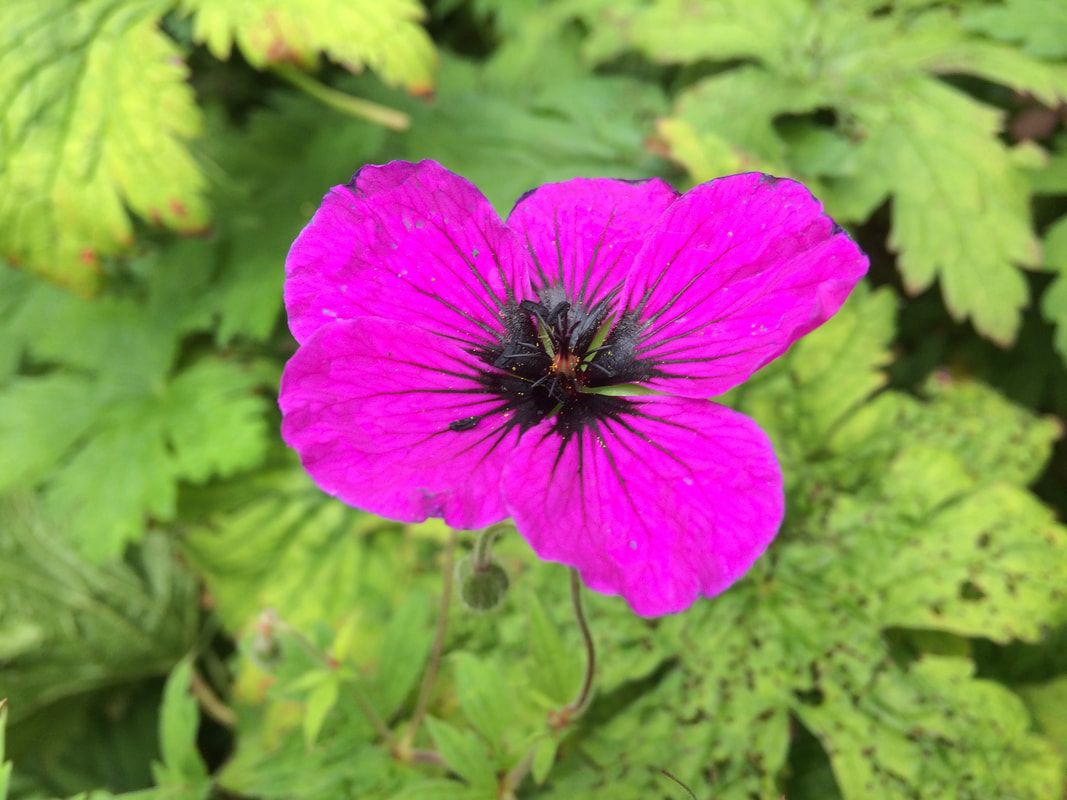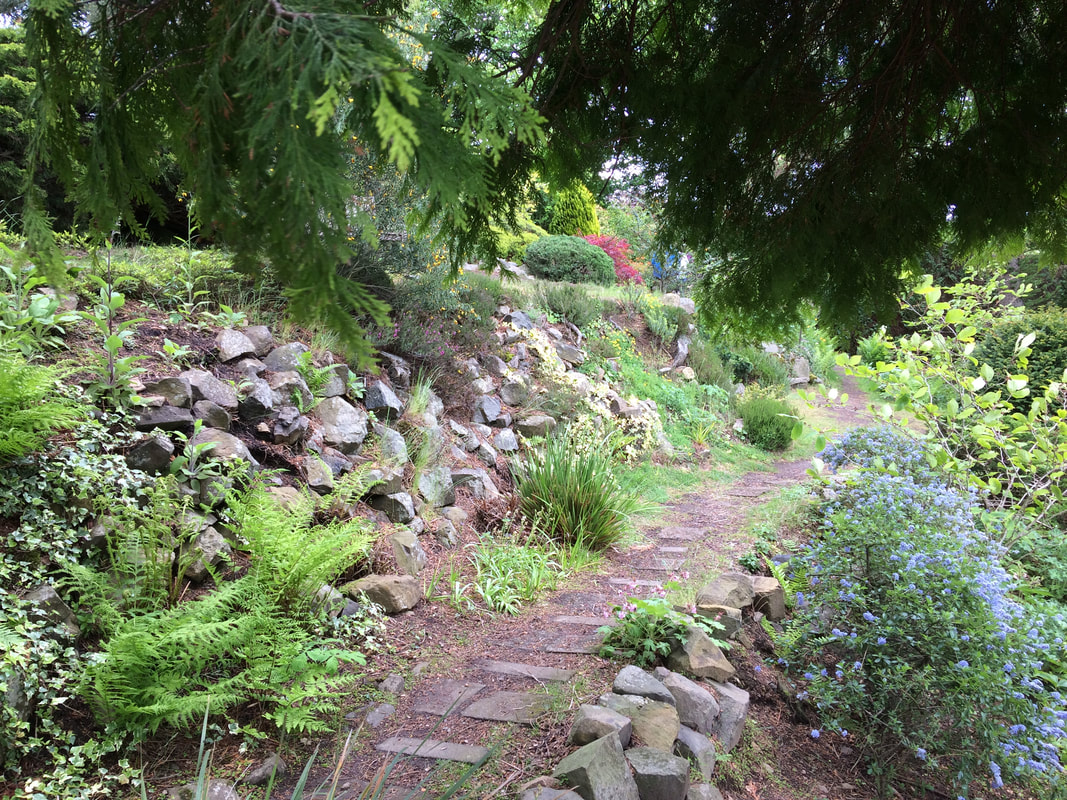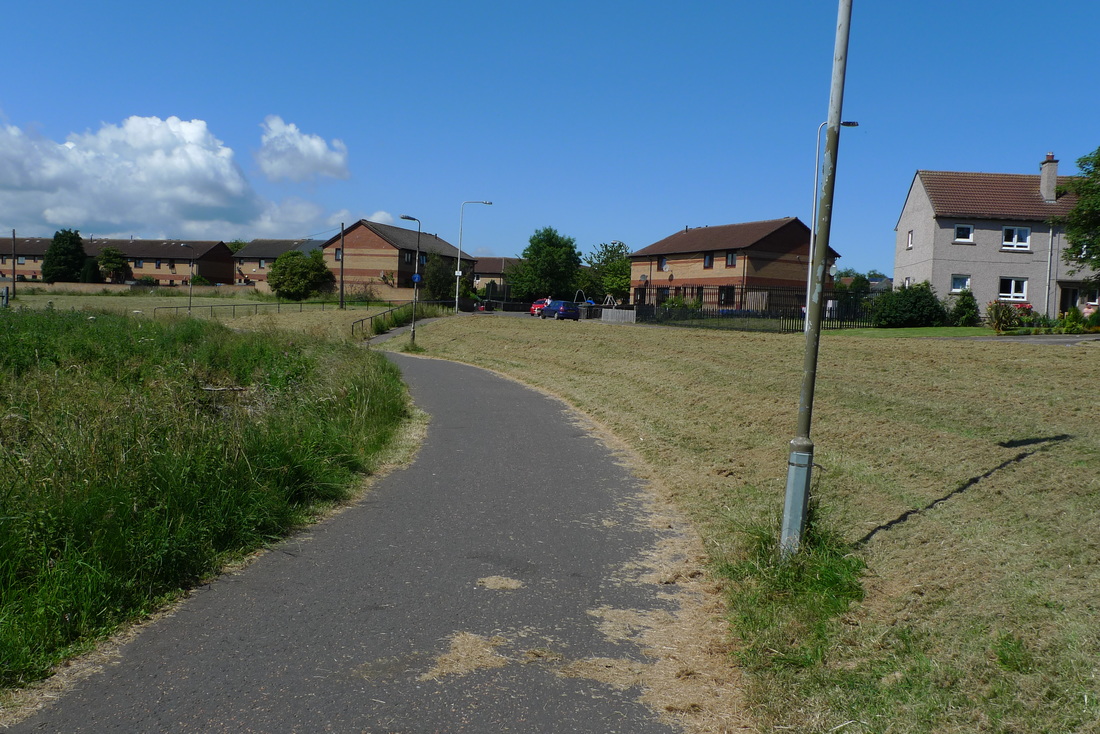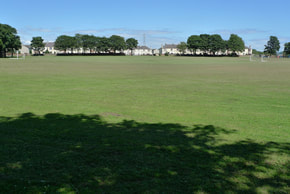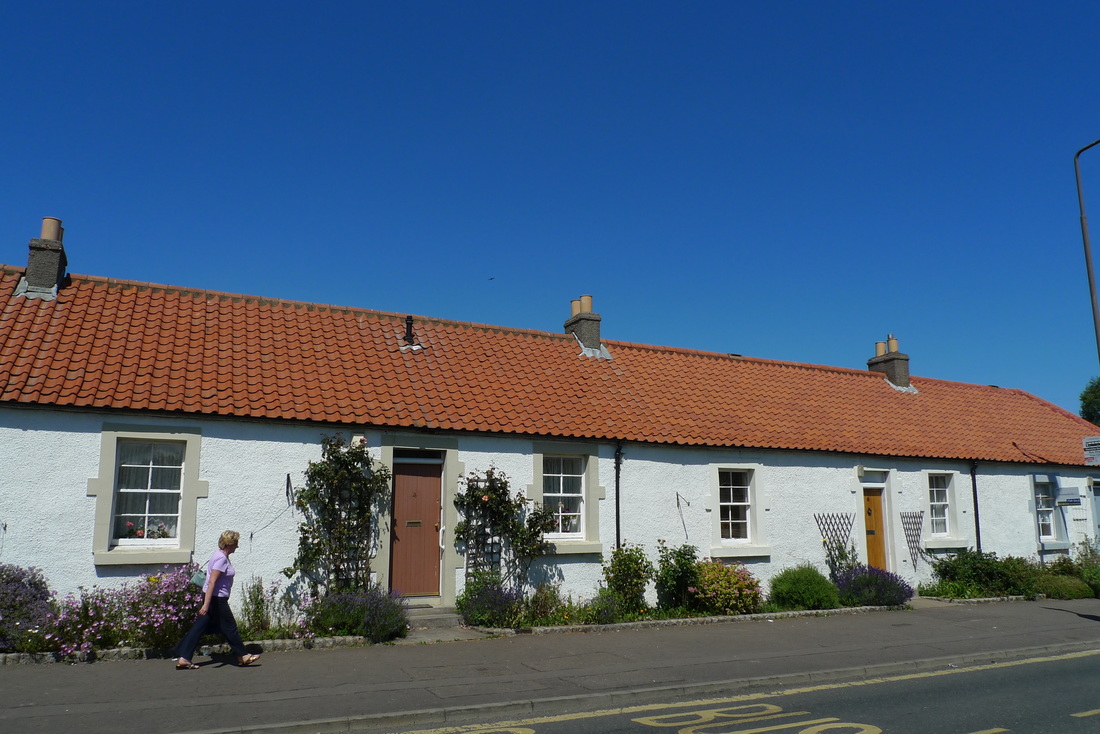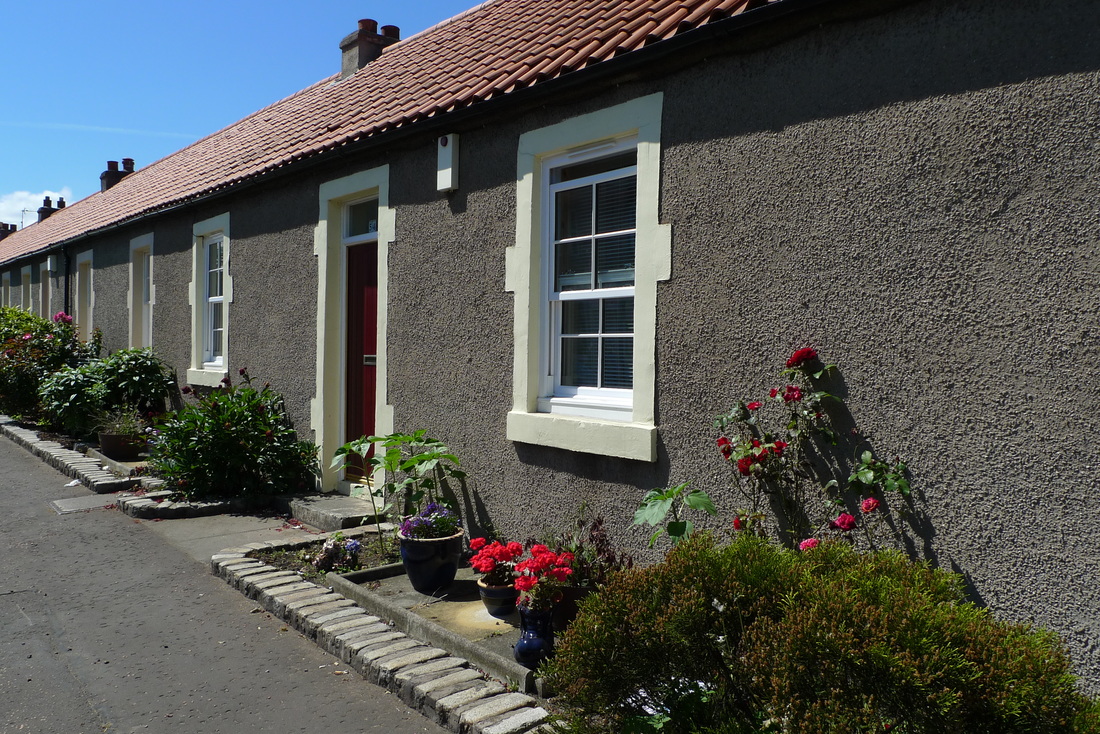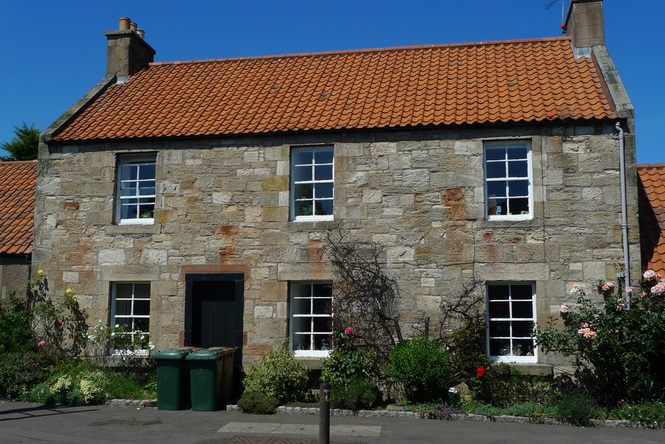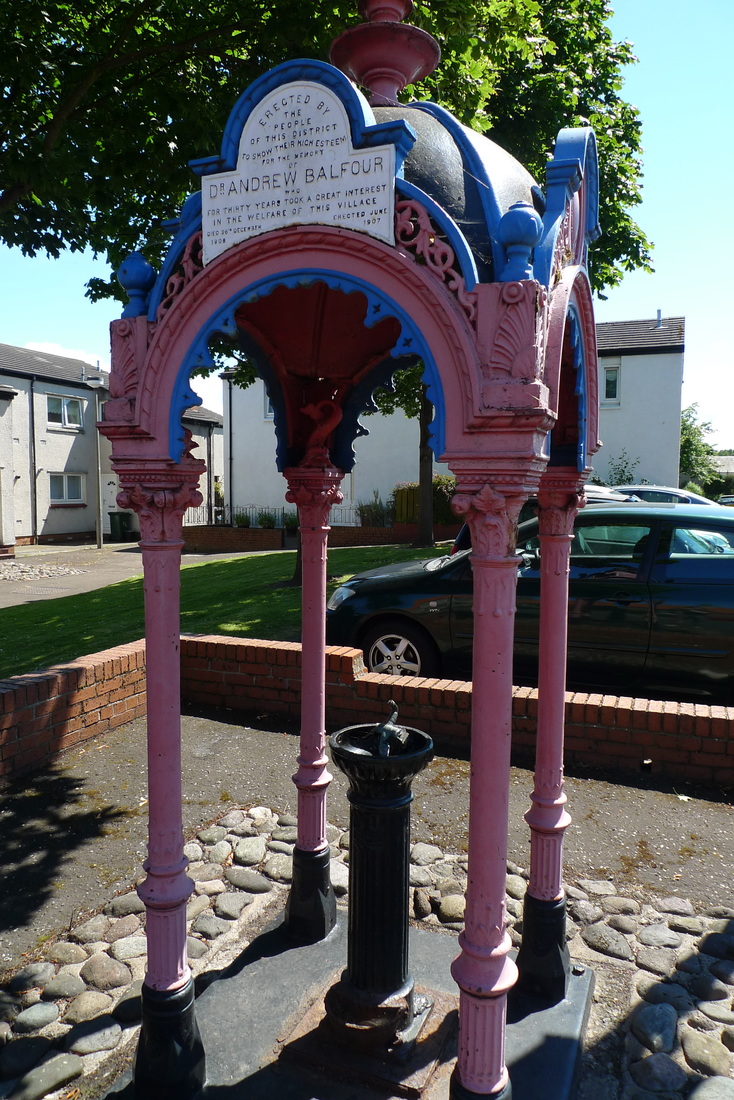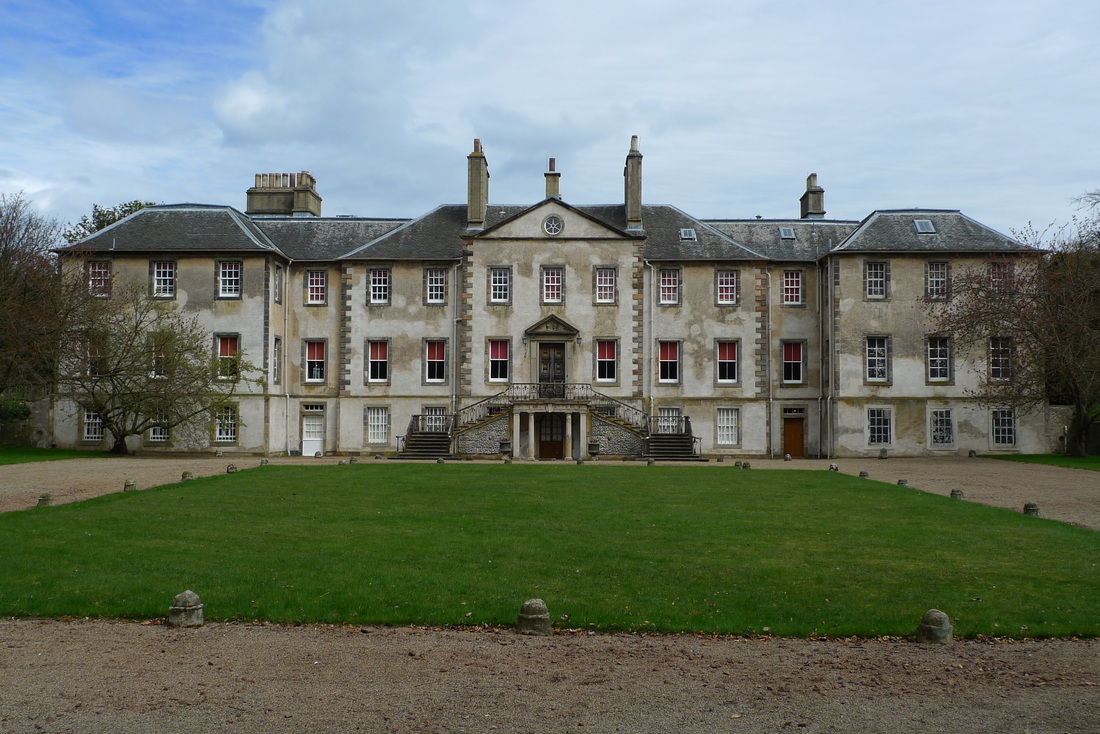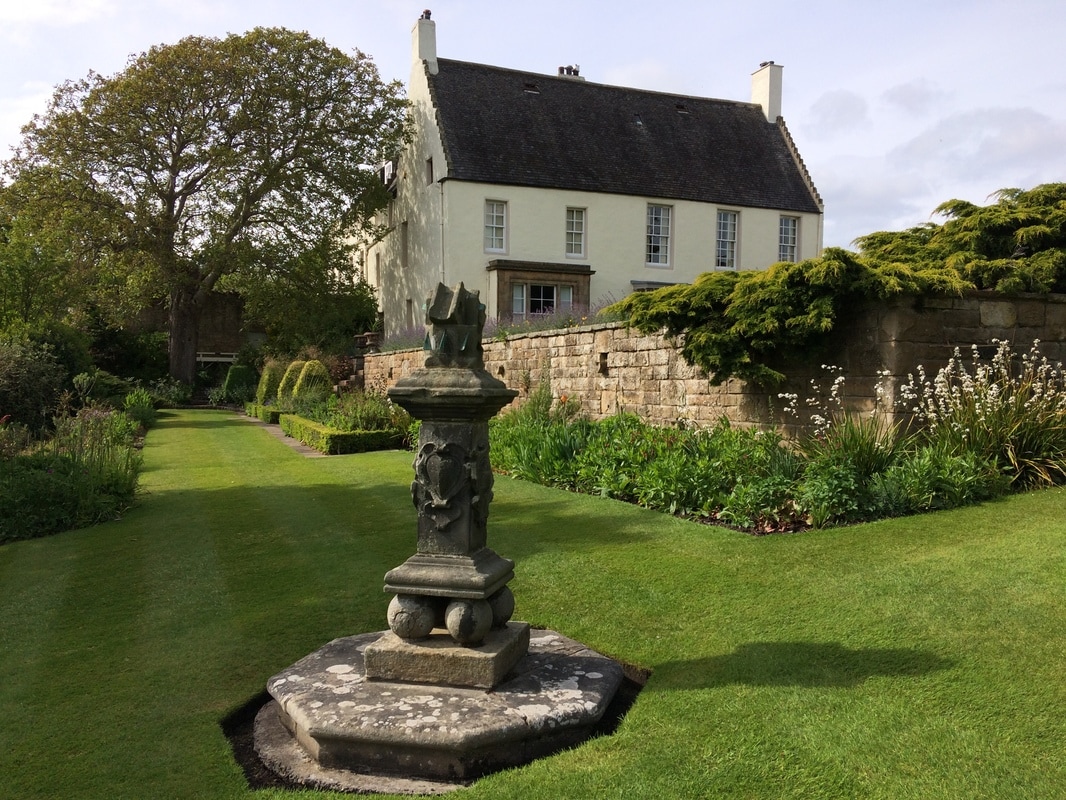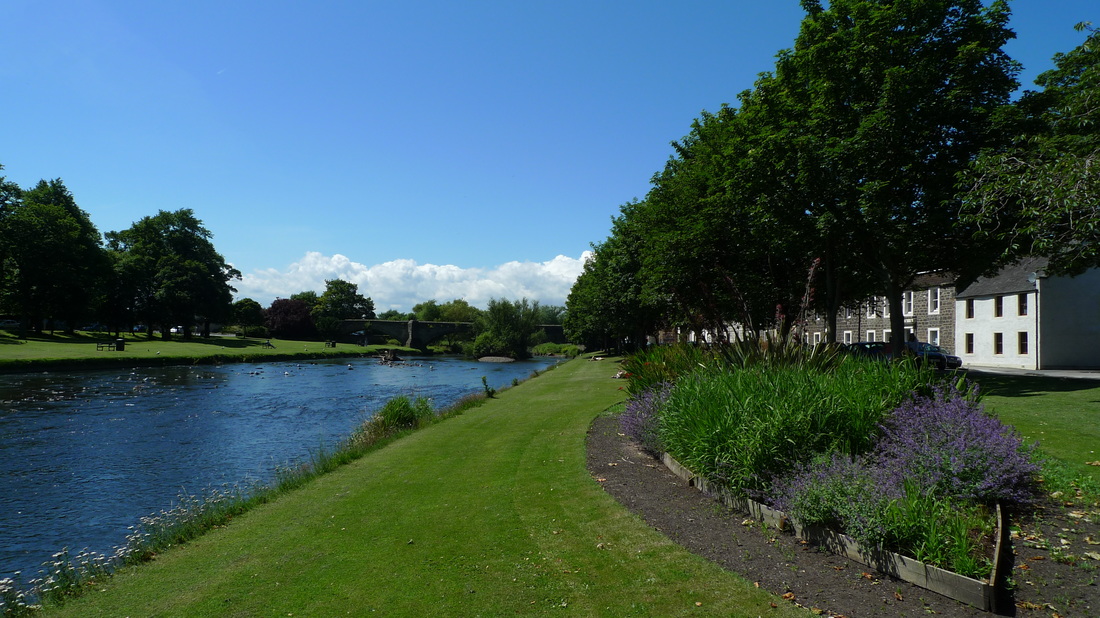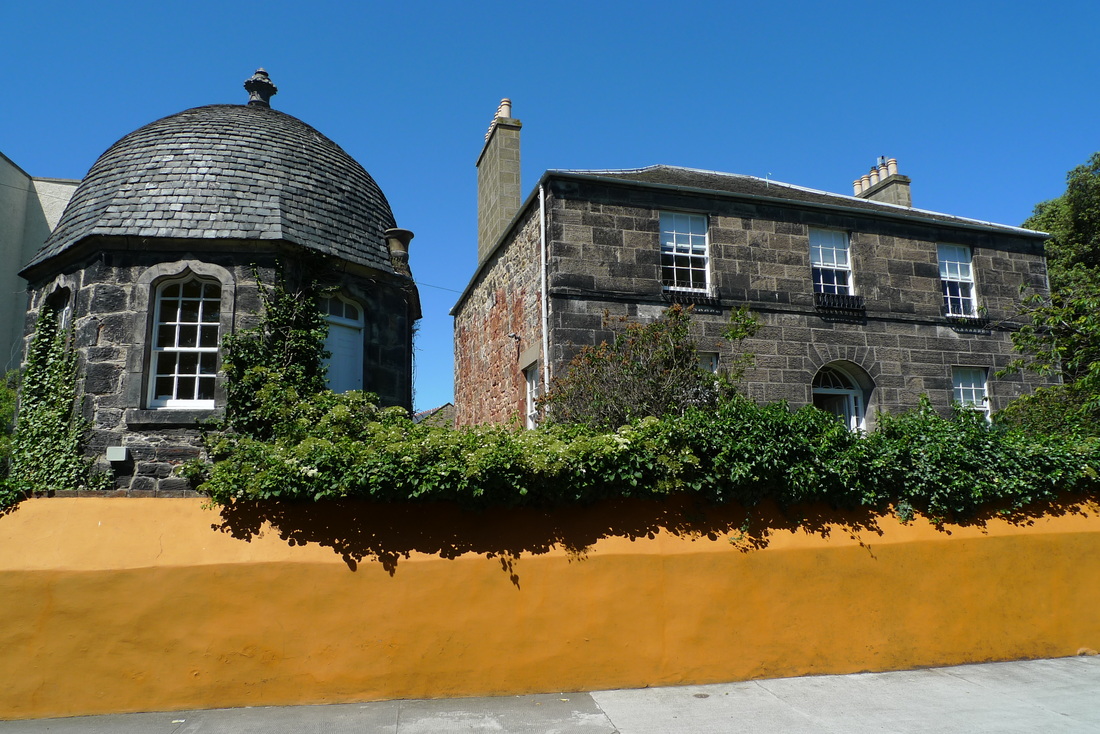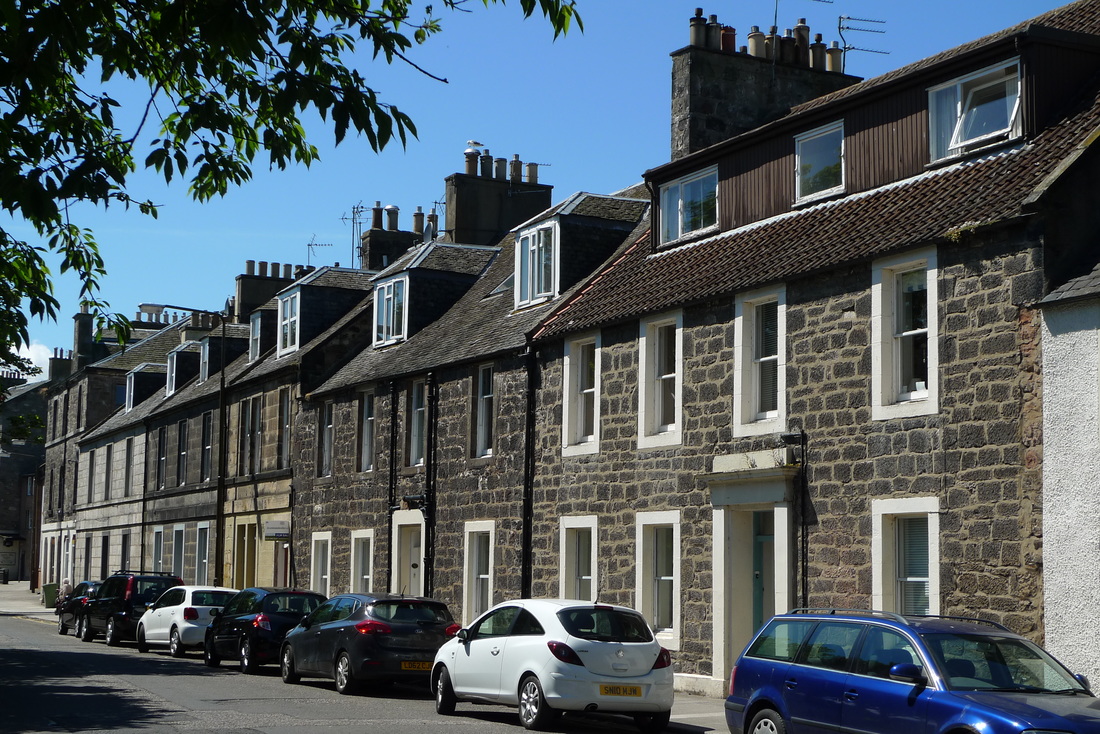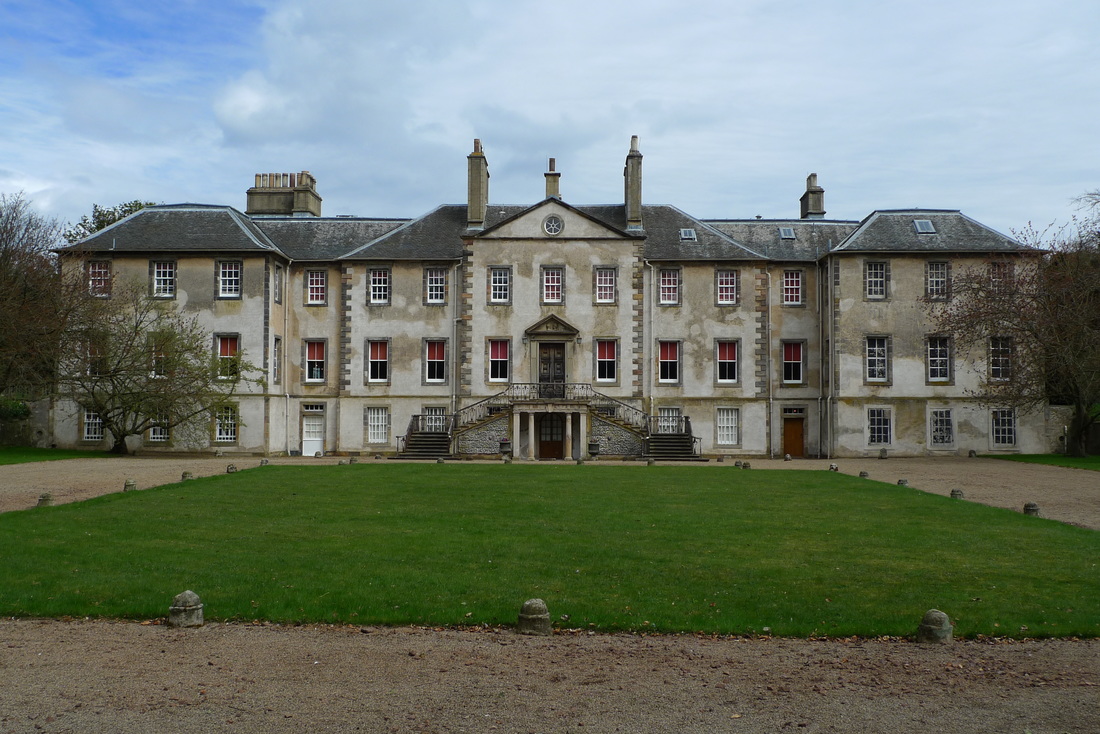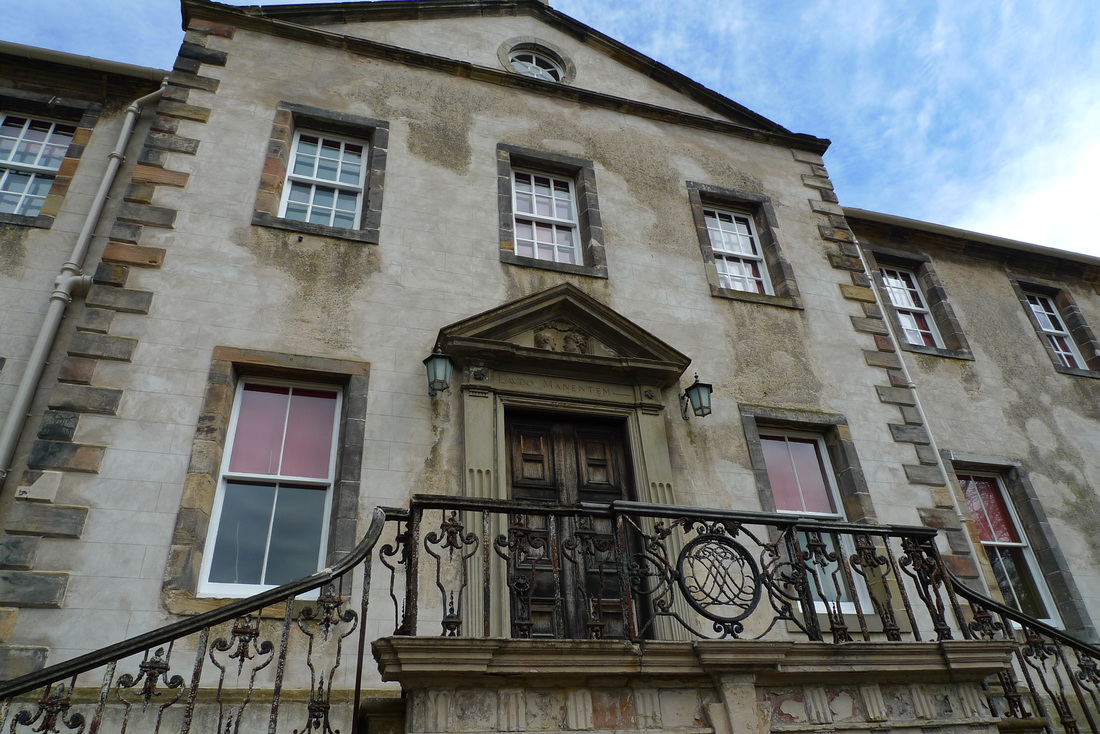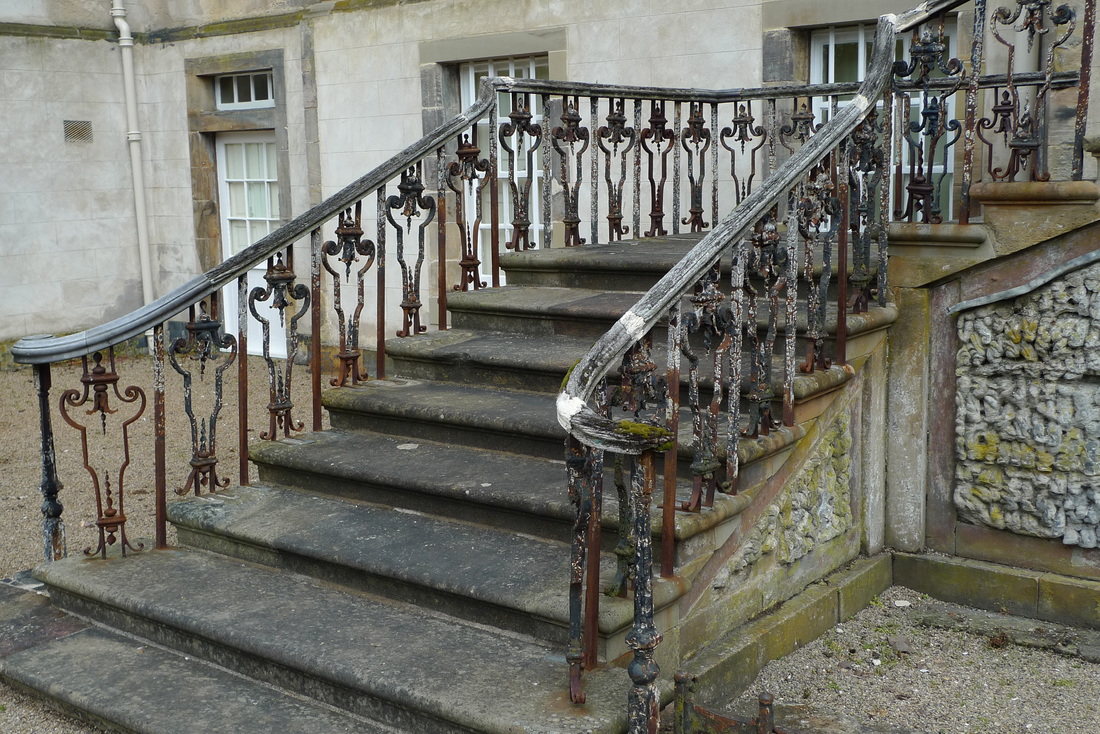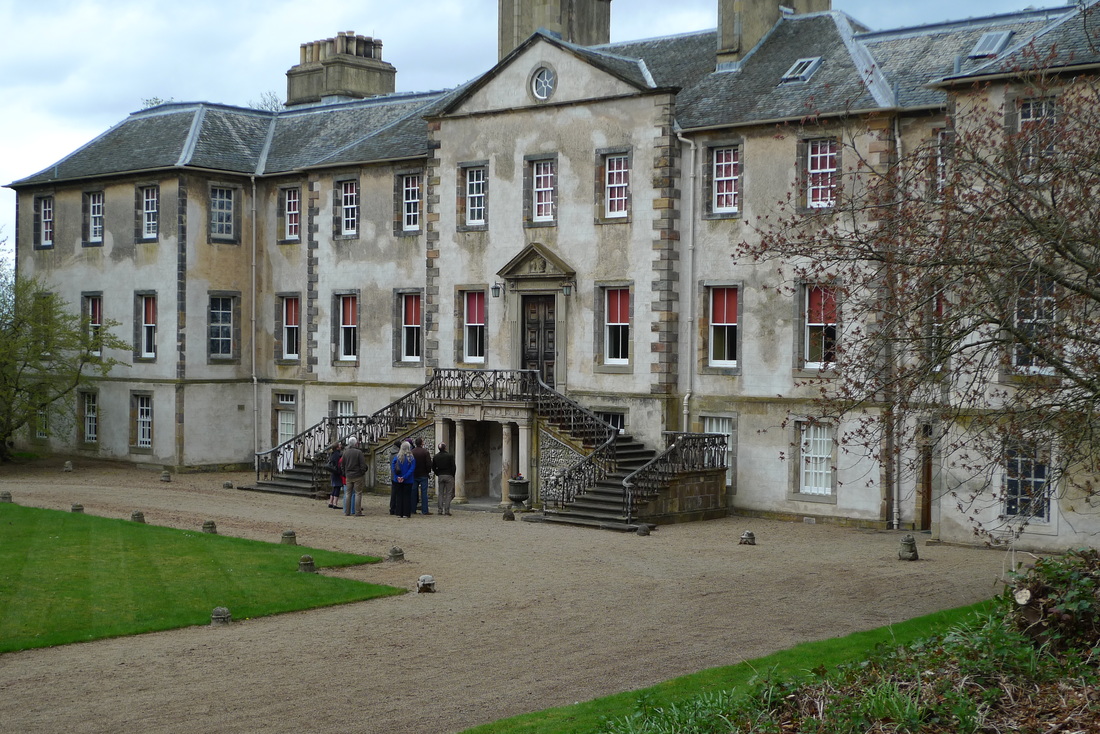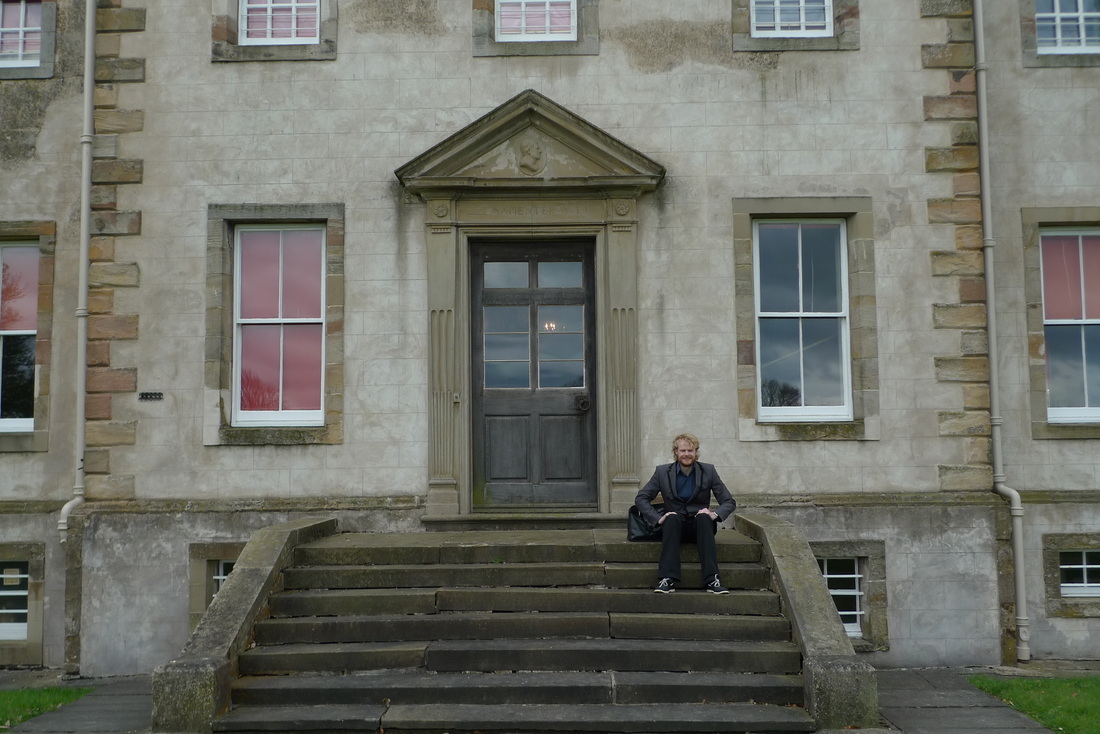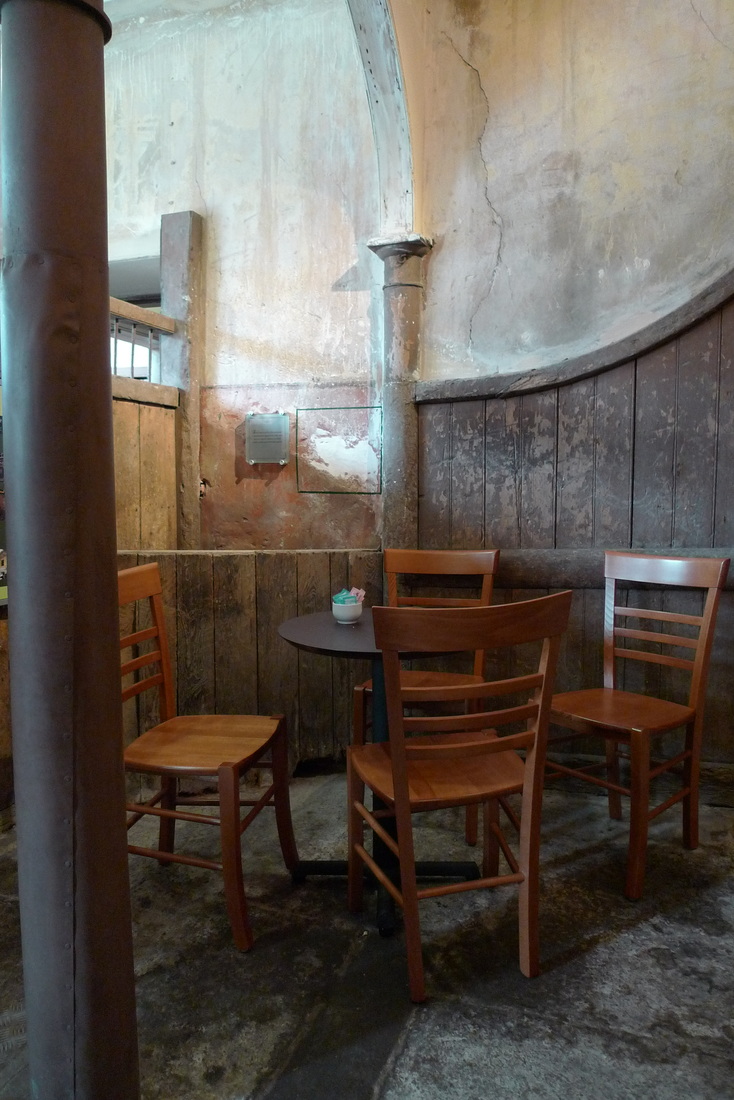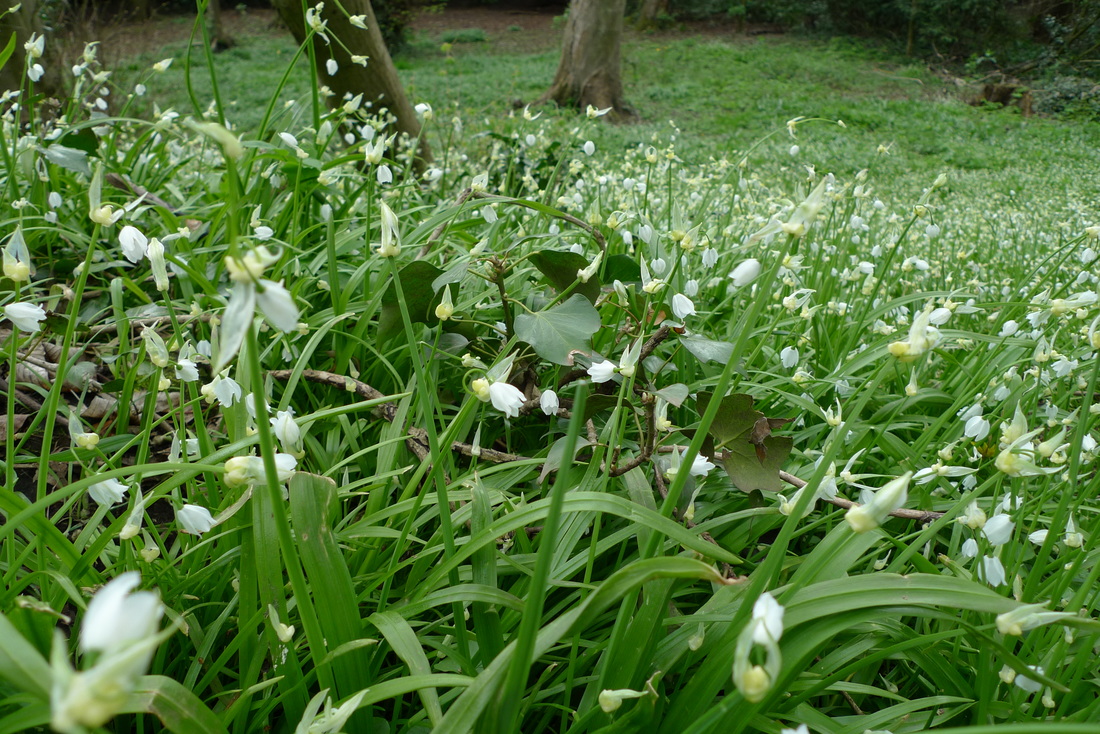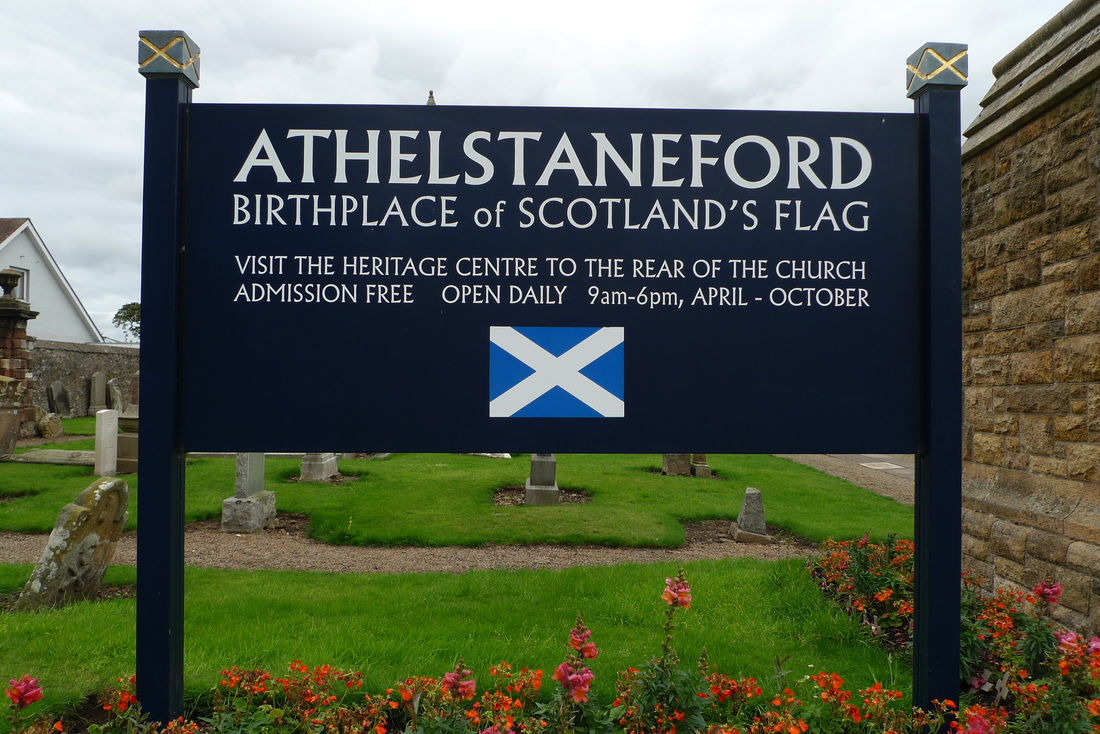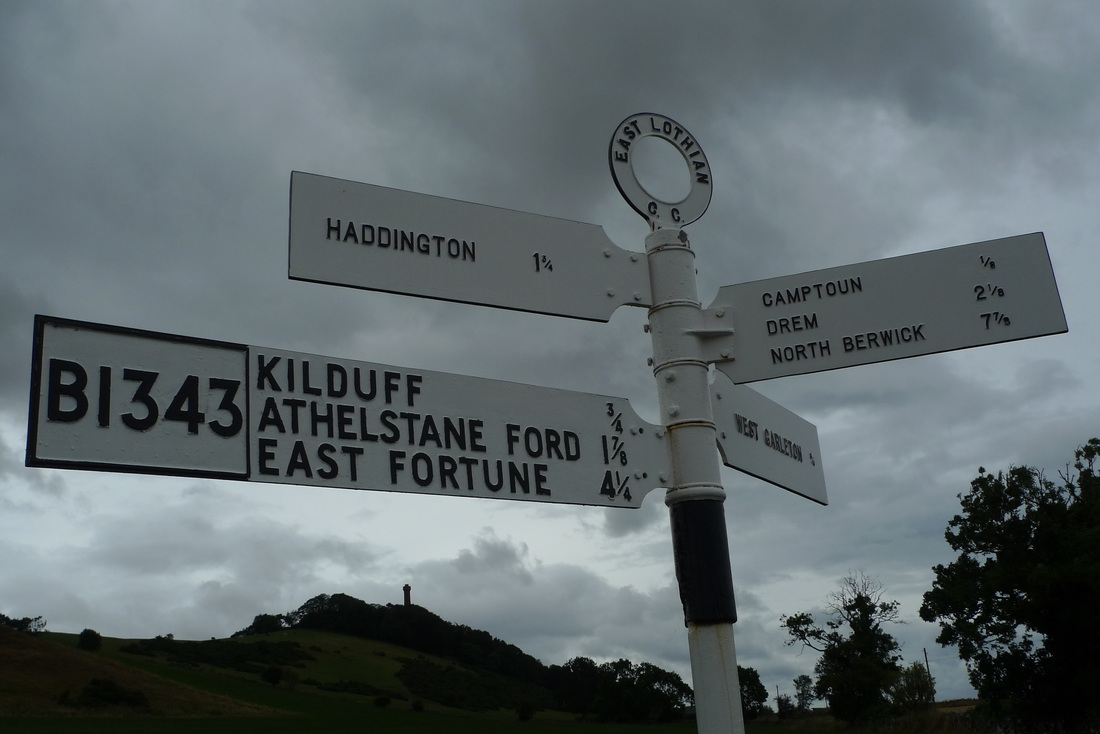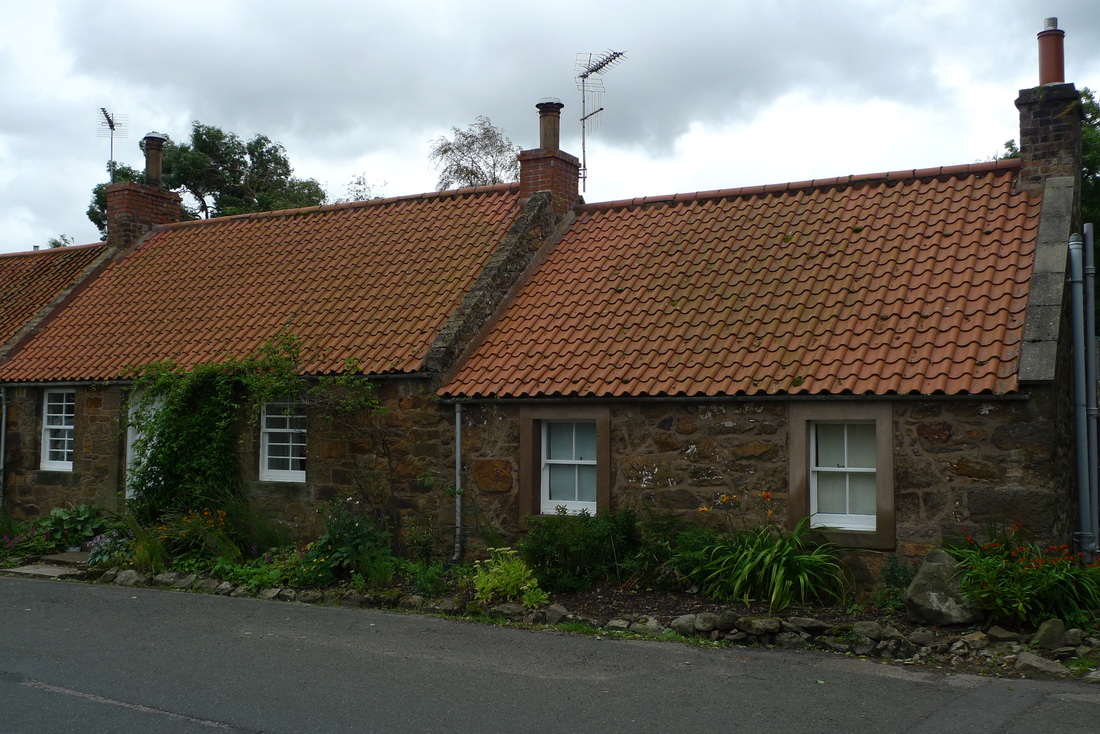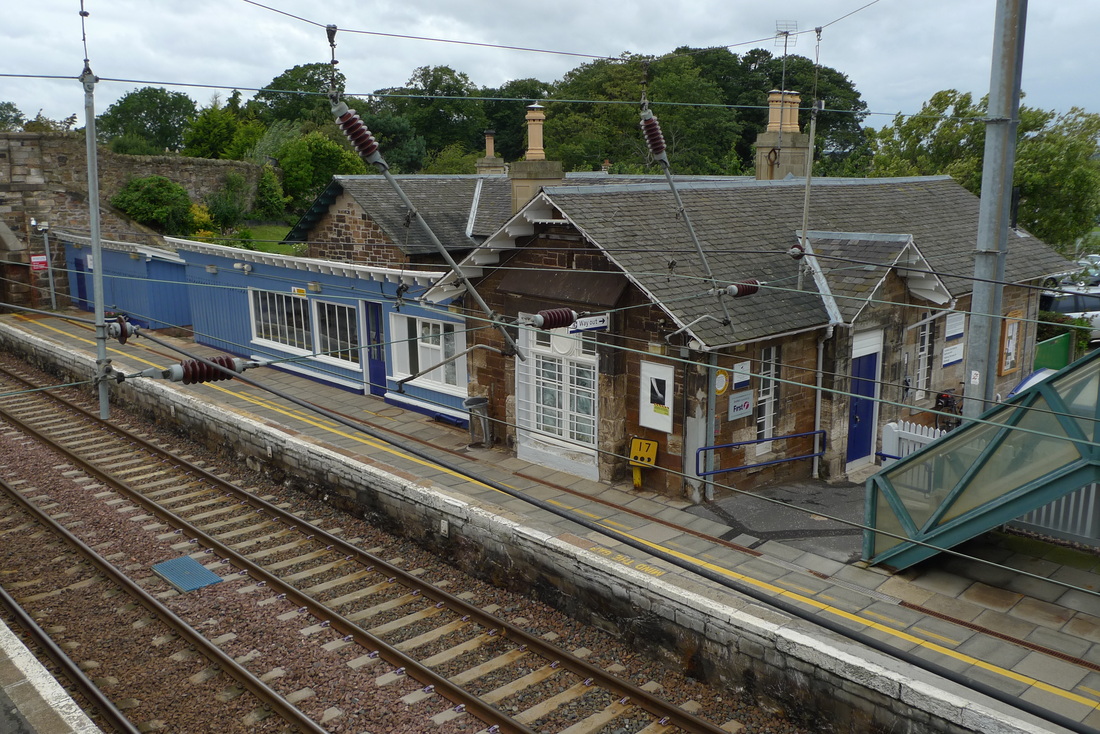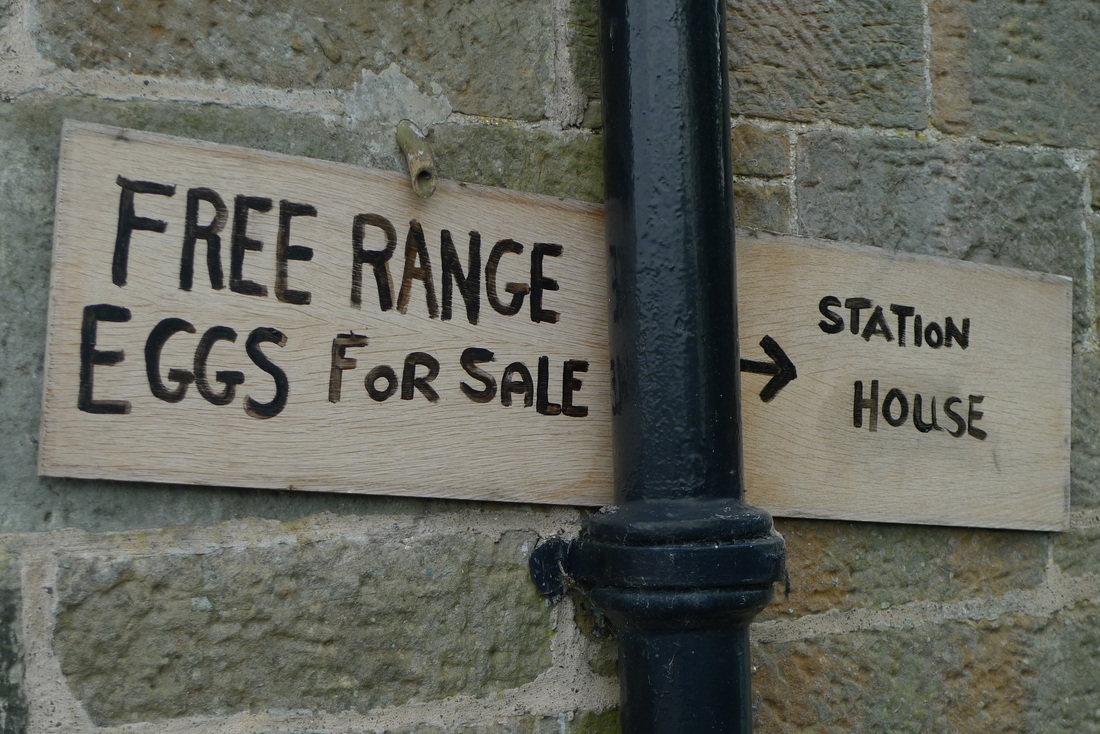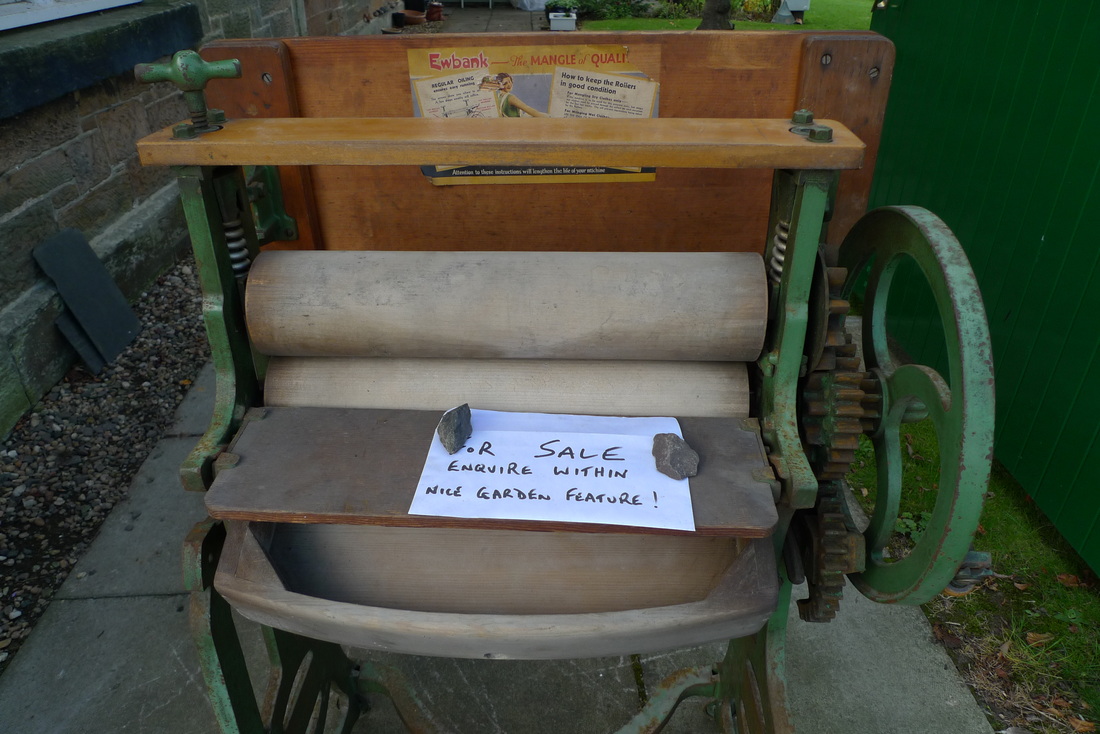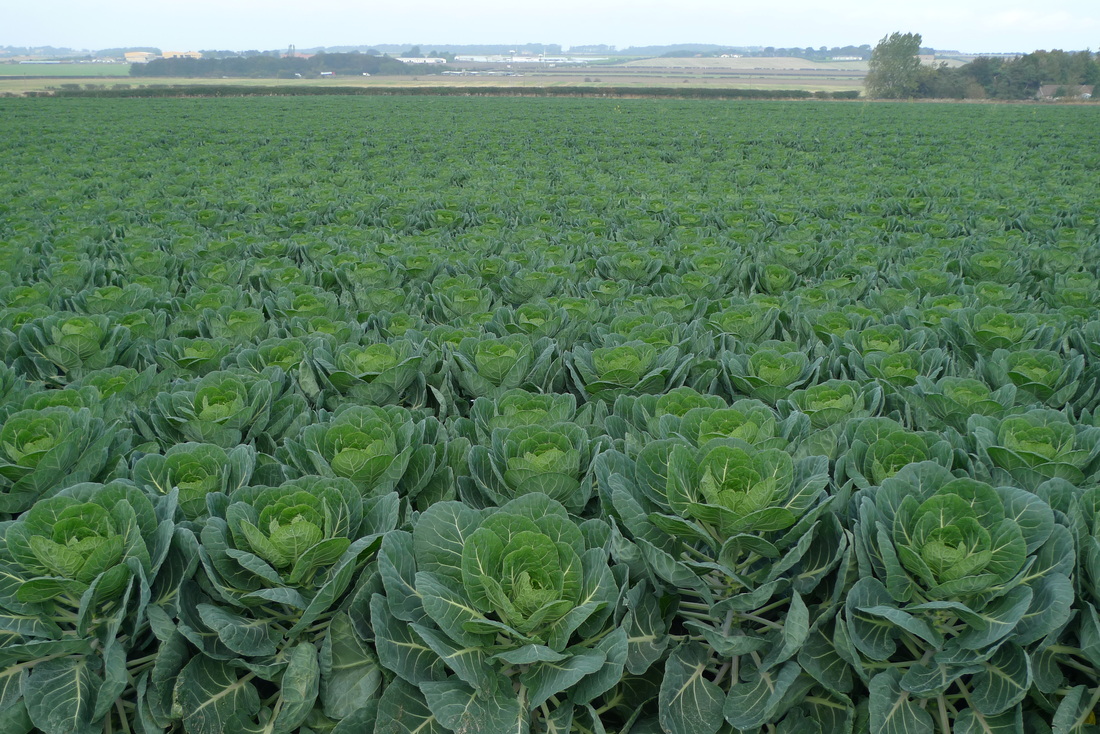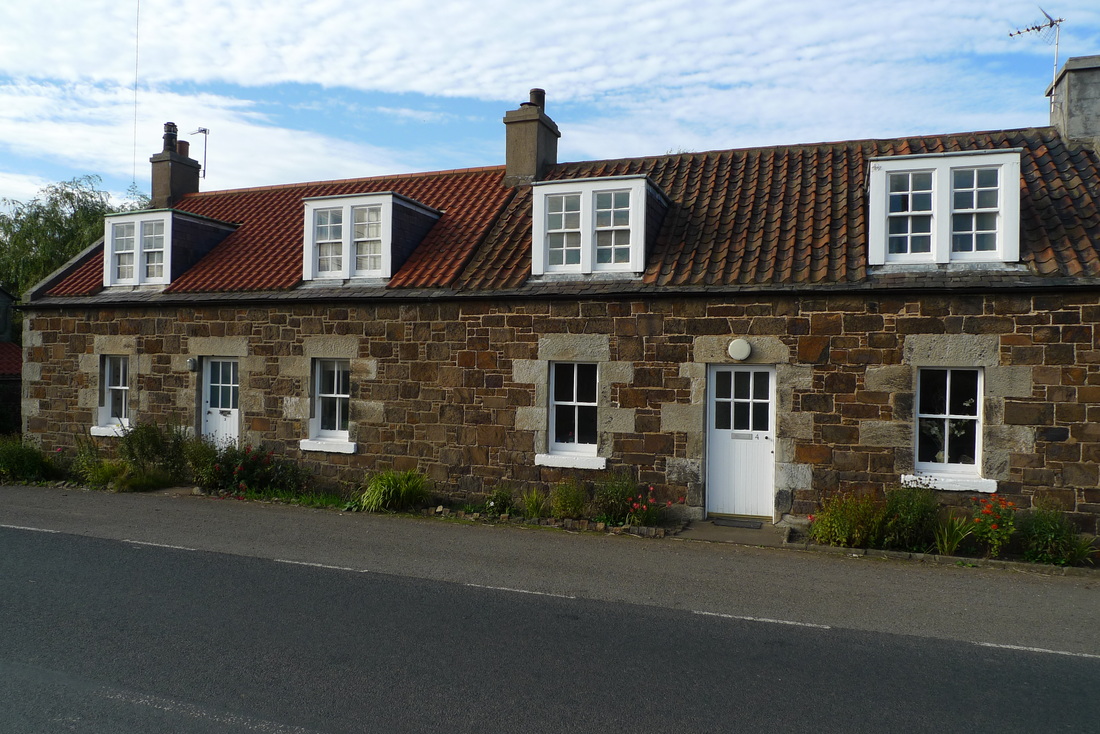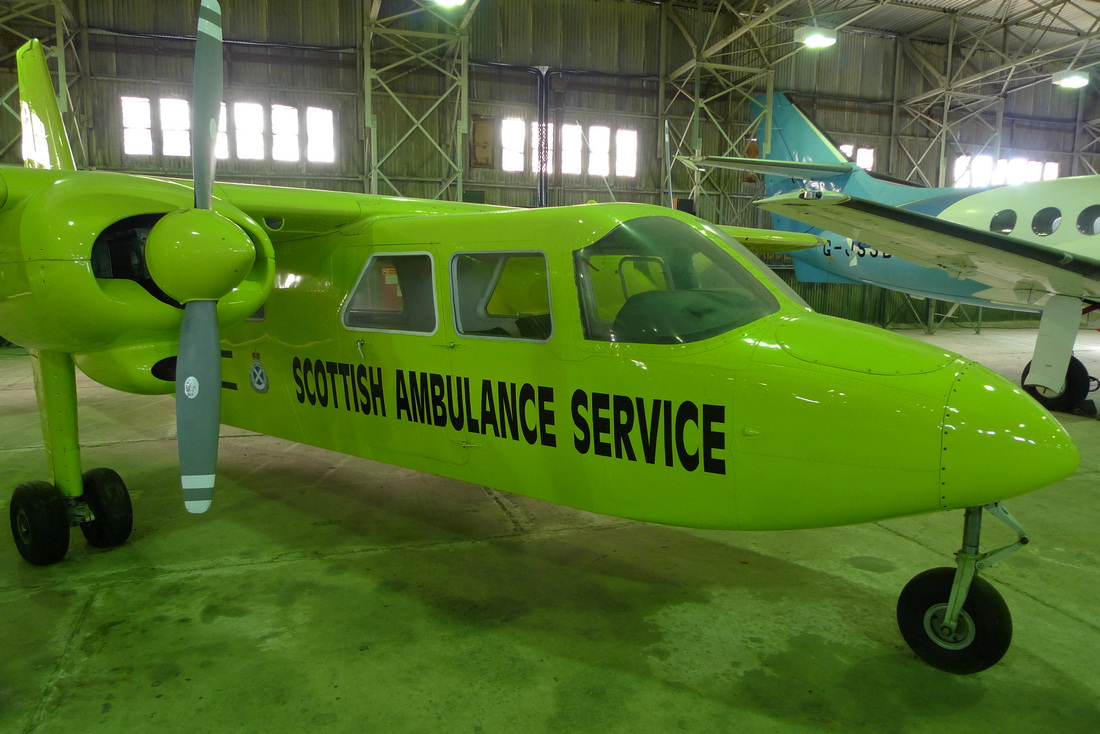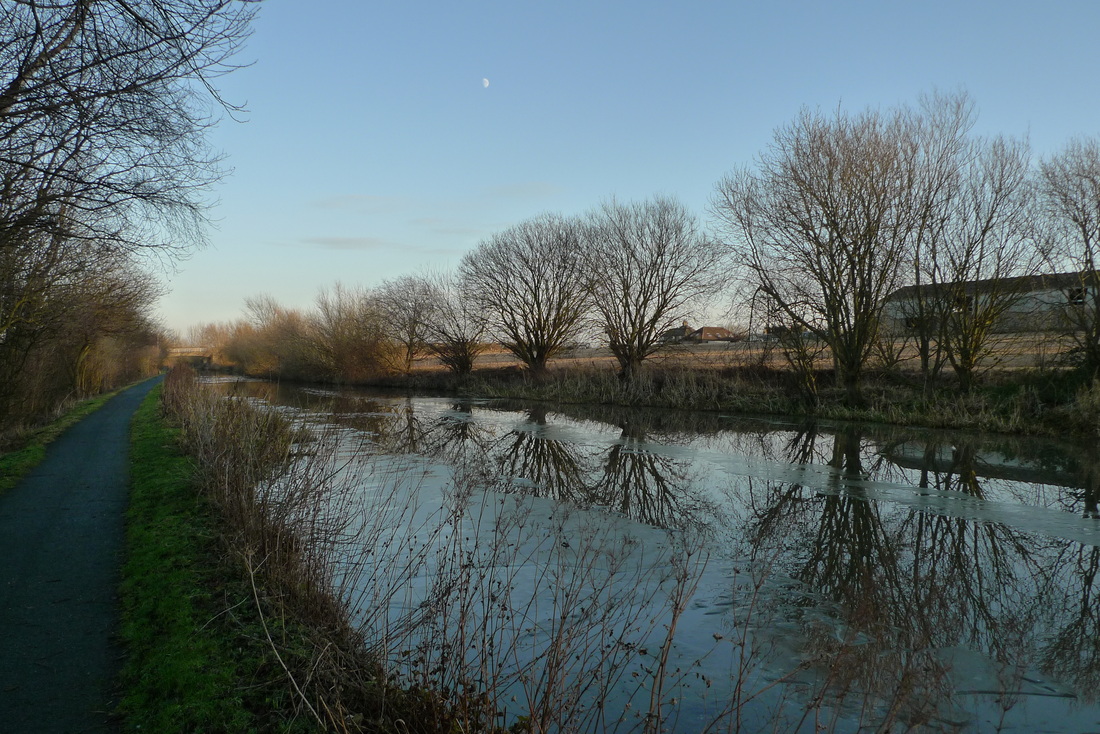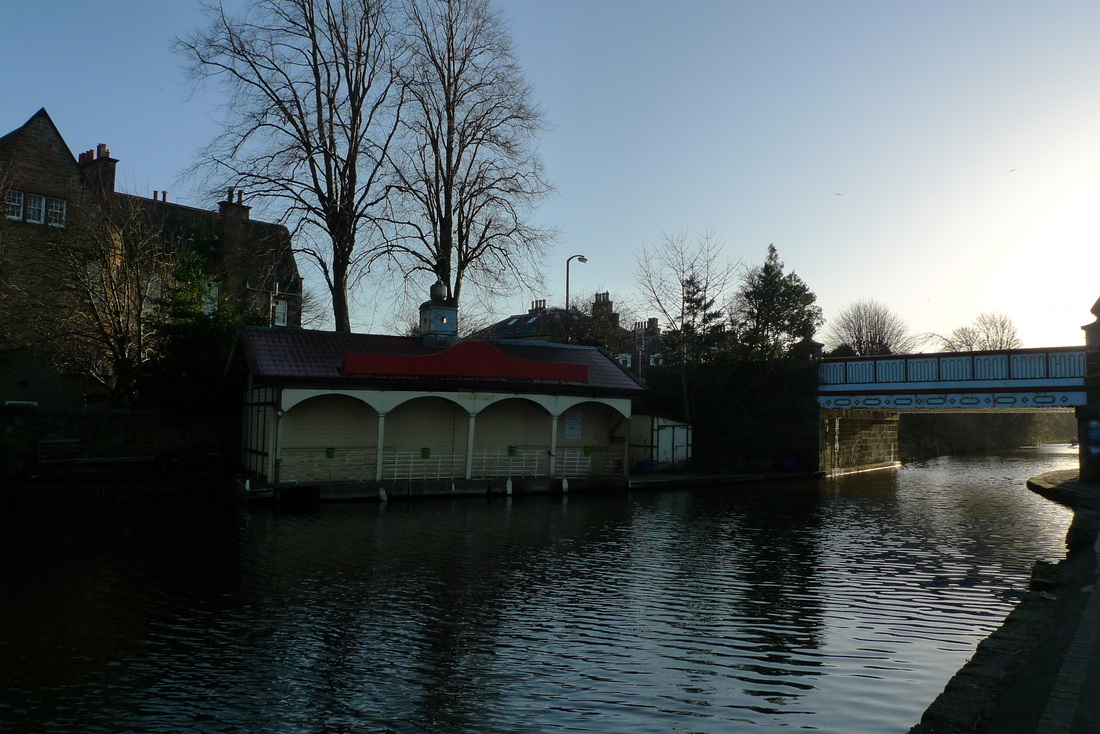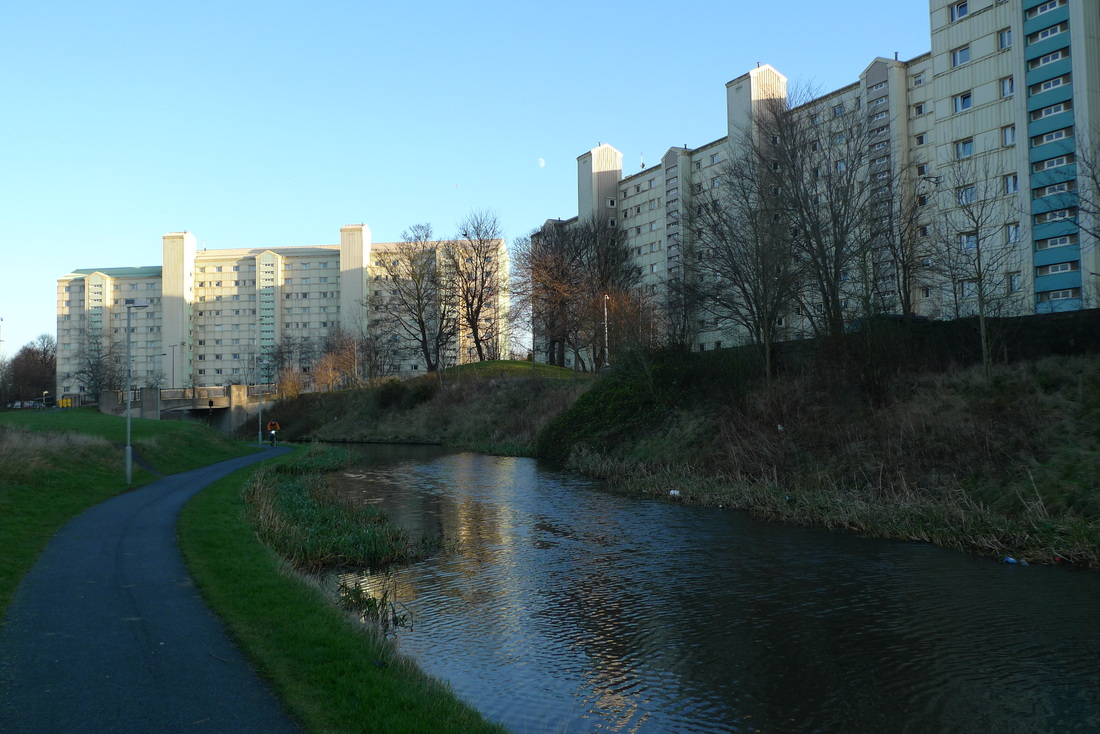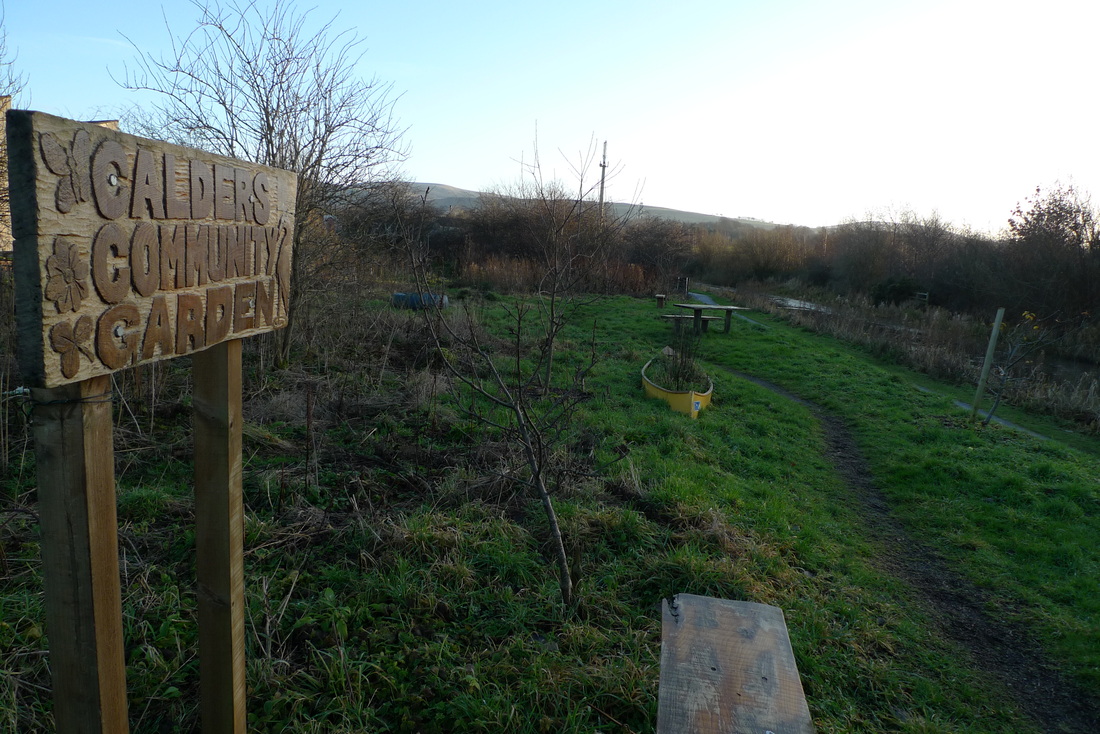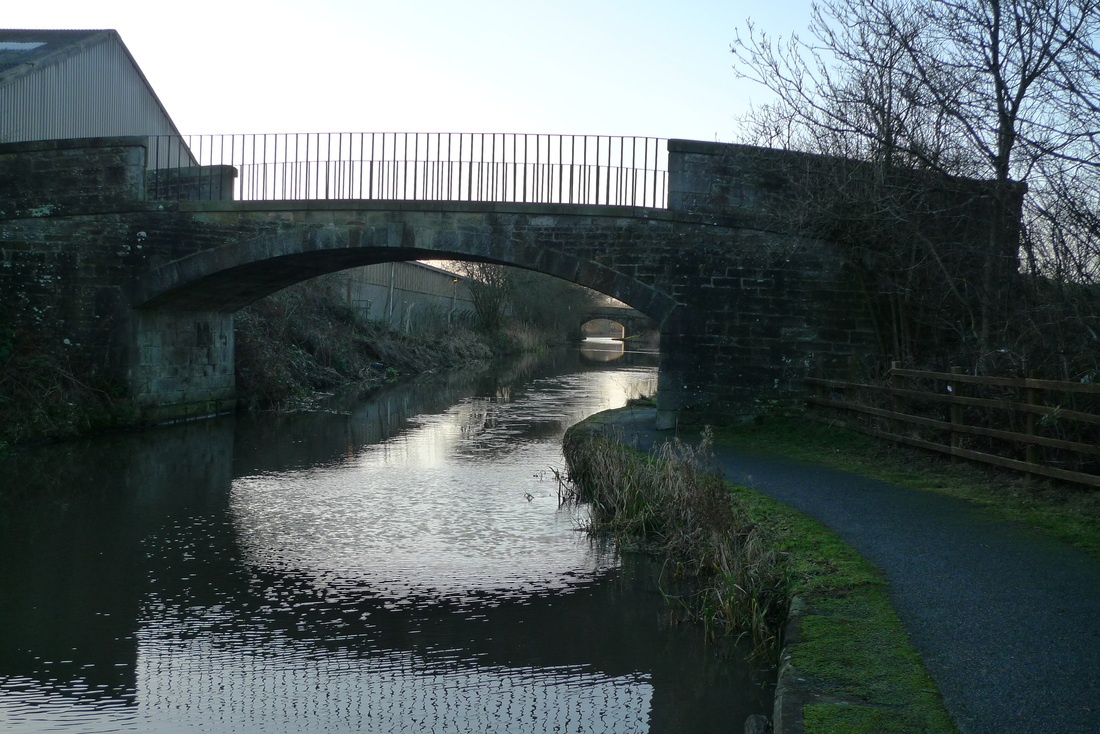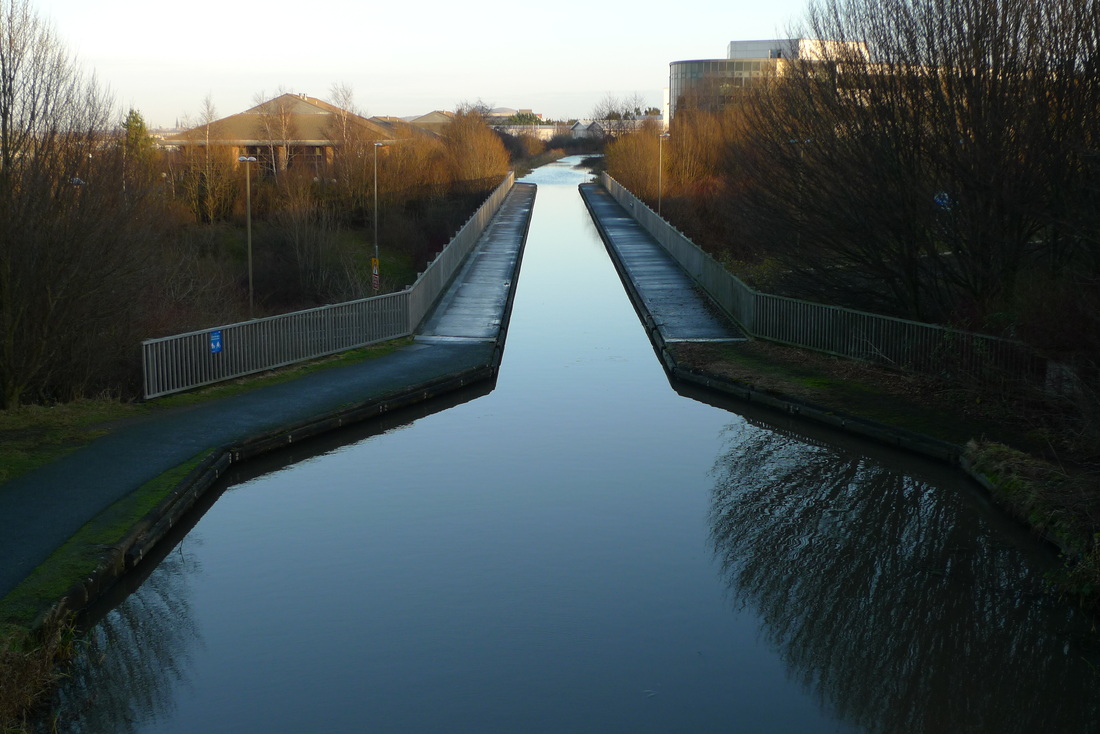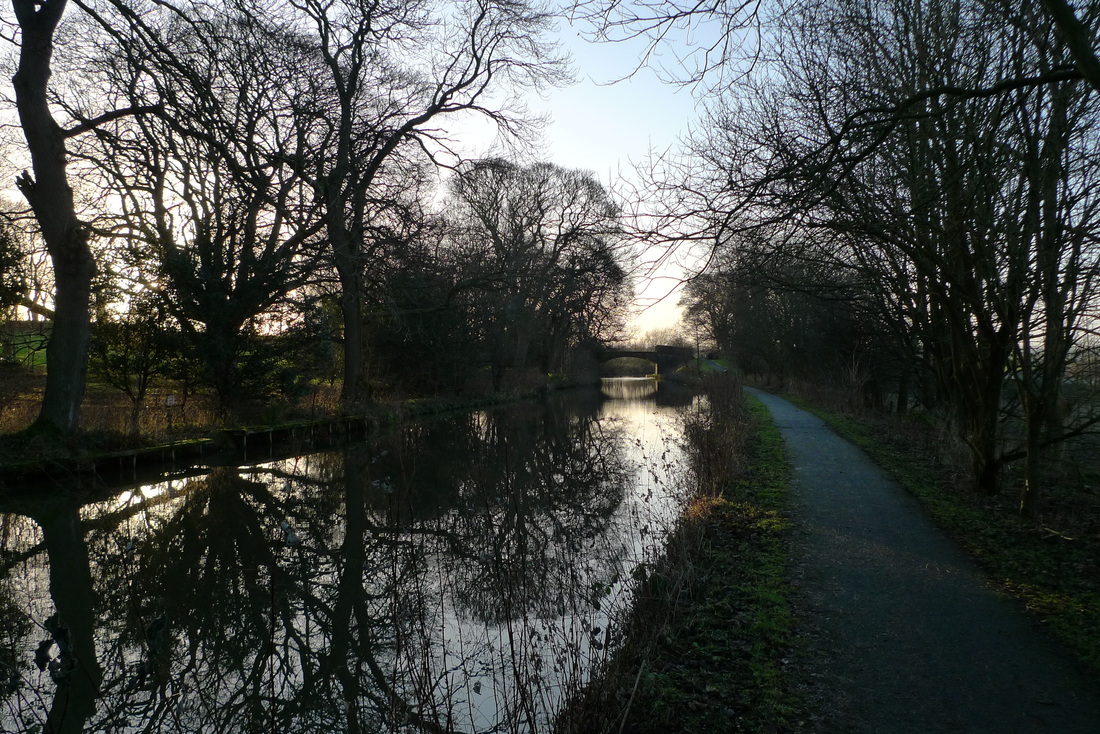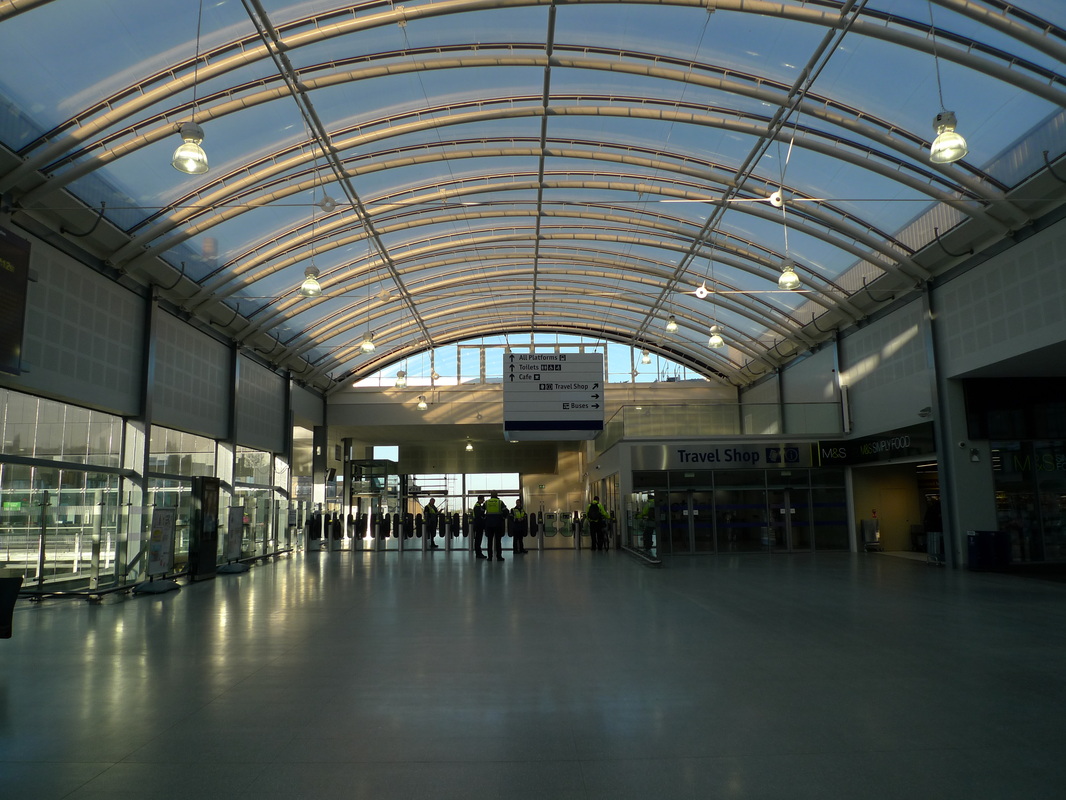|
The Colinton Tunnel is one of the most spectacular features of Edinburgh's cycle network. Visit it on this 8 mile traffic-free route following the Union Canal path and a disused railway line. The route ends in Balerno where you can visit the walled garden of Malleny House.
Fountainbridge The route begins on the Union Canal which can be found on Fountainbridge- hidden behind glass office buildings is something like a mini Amsterdam with the colourful canal houseboats and alfresco dinning . There is even a canal boat serving coffee.
-The canal is a popular place for locals. It can be busy with pedestrians and cyclists and is very narrow in places, so it is not a place to go very fast.
Despite being in a city the canal path has a surprising countryside feel with plenty of trees, ducks and swans. Slateford Aqueduct After about 2 miles you will come to the Slateford Aqueduct. Although an impressive piece of engineering this is probably the most annoying part of the canal for cyclists. The narrow cobbled path makes it pretty impossible to cycle over and the signage instructs you to push your bike. Some cyclists still give it a go, but there is so little space for passing safely that I recommend just pushing the bike and once at the other end you will be able to pedal again.
Colinton Dell
After the aqueduct it's just two minutes more cycling until you reach the turn-off. It is quite easy to shoot past it, but just look for the blue directional signage. There are three signs on a pole and one of them points to Balerno and Colinton.
This takes you up and onto a bridge that crosses the canal and then the A70 Lanark Road to join a path that was once a railway line. Passenger trains ran on this line until 1943, goods trains continuing until 1967. It follows the Water of Leith and heads into Colinton Dell.
This is a special part of the city and it is worth parking up the bike and doing a bit of walking along the many trails that take you through the woods and alongside the water.
Colinton Tunnel- 3.7 miles from Fountainbridge
One of the most exciting parts of the route is cycling through the railway tunnel at Colinton. This used to be a gloomy experience, but it has been transformed into one of the most beautiful parts of Edinburgh's cycle network, thanks to the mural painted on every surface of the tunnel.
The theme of the mural is local history and heritage. You will see an otter swimming, a train pulling into a station packed with interesting characters, a horse and carriage racing by and much more. The mural is nearing completion, but still requires donations and if you wish to give something there are details on the tunnel website.
Spylaw Park
After the tunnel you come to Spylaw Park where there is a particularly striking grand house. This was the mansion of James Gillespie who made his fortune as a snuff merchant. He built the house in 1773 next to his snuff-mill and today it contains private flats.
The park is ideal for a picnic with a huge grass area, plenty of benches and a children's play park. Or head through the park to get up to The Spylaw, a country pub with stylish interior and a beer garden. If coffee is more your thing then Java Moment (not open weekends) on Bridge Road does an excellent cup.
"I kept always two books in my pocket, one to read, one to write in." Robert Louis Stevenson. His statue in Colinton village depicts him with two books. Colinton village is worth a wander, particularly down Spylaw Street with its idyllic cottages leading down to a bridge where you are surrounded by the sound of the Water of Leith rushing below. On the other side of the bridge there is the gorgeous Colinton Parish Church. This is also where you will find the Robert Louis Stevenson statue. The famous author visited Colinton as a boy and the statue depicts him as a boy with his dog, a skye terrier called 'Coolin'. There is a poetry trail around the village with panels containing verse from his work.
Mills and Railways
All along this route there had been a thriving milling industry- saw mills, paper mills, barley and grain mills. The railway serviced these mills and led to a housing boom along the line as the train made it easy to travel to Edinburgh. Passenger usage was so robust that in 1914 a normal train consisted of 8 coaches and this was increased to 13 on Saturdays. After the First World War the railway started to go into decline, largely as a result of competition from buses. Monuments to the area's industrial past are rare and what you will mostly find is trees, gently flowing water and the chance to spot wildlife. If you are lucky you might see deer, heron, badger and kingfisher.
Juniper Green cake stop
About one mile from Colinton is Juniper Green. For cake or lunch leave the cycle path to go into the village where you will find Molly's on Lanark Road. The traybakes are legendary with their toppings of thick chocolate and delicious flavours like orange Aero. The lunches and breakfast are also good and they have some outdoor seating for sunny days. There is an attached delicatessen where you can pick up fresh fruit and other interesting foods for the journey ahead.
Currie Conservation Village
An elegant church, with a clock tower, appears suddenly- it is quite a striking vision after seeing only trees and and glimpses of the Water of Leith for the last couple of miles. This is Currie Kirk (1784) and the little patch of cute cottages surrounding it is part of the conservation village. It is worth getting off the bike and having an explore around here.
Balerno
Once you reach the end of the route, at Balerno, it is marked with a metal sculpture set into the pathway that signifies the twisting route of the Water of Leith. At this point you emerge onto Bridge Road. Turn left here to reach the centre of Balerno and for Malleny Garden. It can be a busy road, although there is a cycle lane.
Main Street in Balerno contains a couple of pubs, a hairdresser and a pharmacy. It is a pretty street the way that it curves uphill and is lined with attractive stone buildings and bright flower boxes.
Malleny Garden
The garden is sign posted from Bridge Road. You will see the large sign as you cycle towards the centre of Balerno. Malleny House is not open to the public, but the gardens are in the care of the National Trust.
The entrance (admission fee) to the garden is through a small gate in the wall that has a bird, like a phoenix, incorporated into the ironwork. This is the Gore Brown Henderson crest, former owners of Malleny House. On the other side of the gate there is a coat of arms, representing the Rosebery family, also former owners of the house.
The gardens are small, but have many interesting features, including clipped yew trees planted in the 17th century, Victorian glasshouses and the largest rose collection in Scotland.
An interesting fact is that spring arrives up to 10 days later here than it does in the centre of Edinburgh. This is because the garden is north-facing and has an altitude of 170m.
Looking for other ideas of cycling routes from Edinburgh?
Why not try the route to Musselburgh? It is also mostly traffic-free.
4 Comments
When exploring Edinburgh by bicycle, foot, bus or any other means then this book is the ideal companion. It reveals many of Edinburgh's secrets and hidden gems, so is much more interesting than a standard guide. There is a lifetime of exploring contained within these pages. The text is highly engaging and full of fascinating facts.
My initial impression of this book was that it was quite text heavy compared to the usual guide book format of recommendations, listings and maps. However, the text is highly readable and full of riveting information about Edinburgh. It keeps you turning the pages and wanting to know more. What comes across is that there is so much more to Edinburgh than the castle, Princess Street Gardens and the art galleries. Even if you have lived in Edinburgh for many years there are things in this book that will be new to you. The book has 103 experiences. It does cover some well-known attractions, like the castle, but it explores the lesser-known items, the hidden gems within these attractions. But the main focus of the book is on places and experiences that are more unusual and will take you off the beaten path. Some of my favourite experiences are the entry on Victorian swimming pools, the historic pub crawl, the tour of Edinburgh's independent bookshops, the story of Edinburgh' Jews and a visit to the home of the world's first millionaire (Lauriston Castle).
There is an almost endless number of adventures that this book will take you on, including a search for the replica of an American Wild West Street, seeking out a Cold War-era bunker on Corstorphine Hill or admiring 'Edinburgh's Sistine Chapel'. You could plan your weekends around discovering something different in the city and easily plot a cycle route to get there.
Each entry in the book will have you admiring the level of research that must have been involved and you will love sharing your newfound knowledge with friends and family. Although this book is largely about places to see, I loved the fact that it also provides suggestions of places to enjoy food and drink. And these are not the standardised listings that you get in run-of-the-mill guidebooks, but, again, unusual and unique. For example, entry 14 is titled 'Sustenance in Strange Places' and informs the reader about a number of restaurants located in buildings with notable histories and/or interiors. Another entry gives the lowdown on the cafes that J.K. Rowling visited when writing Harry Potter. There is even a page about the former police boxes that have been turned into takeaway coffee outlets. Or how about going for a deep-fried haggis supper from Ian Rankin's favourite takeaway? 'Only in Edinburgh' is a great example of turning the guide book format on its head and making it into something much more readable and inspiring. The author (Duncan J.D.Smith) is The Urban Explorer and has given a similar treatment to books about many other cities, including Berlin, Paris and Prague. For those who are exploring Edinburgh by bicycle the book brings a new twist to your journeys. You could pick a selection of the experiences and then use Google maps to plot your cycle route and don't forget to include one of the eating or drinking places so that you have somewhere for refreshments. Some of the entries in this book feature in my blog: 10 Hidden Gems in Edinburgh You can buy this book from Amazon by clicking on this image:
Edinburgh is full of world-famous attractions. The Castle. Royal Yacht Britannia. The Royal Mile. But what about the lesser known sights? The things that only a local knows about, but well worth seeking out. Here are my favourite hidden gems.
1. Circus Lane, Stockbridge
Away from the crowds of The Royal Mile you can find a tranquil street with cobbles, gorgeous flowers and a view of a church steeple. The cute houses will inspire you to watch for one coming on the market and relocate. Get there for the clock chimes and it will feel even more lovely. Circus Lane is located in Stockbridge, a 15 minute walk or 5 minute cycle from the city centre.
2. Craigmillar Castle
Commonly referred to as "Edinburgh's other castle", Craigmillar is actually one of the most exciting castles in Scotland. It is awash with staircases, passages and turrets that provide endless exploring. It is also set in extensive parkland that feels like the middle of the countryside, but is only 3 miles from the city centre. Despite this the castle never gets crowded and many of those jostling around Edinburgh Castle will be blissfully unaware that Craigmillar exists.
Read my blog about Craigmillar Castle and how to cycle there
3. Swanston Cottages
Thatched cottages in a capital city? Who would have thought it? The ten white cottages at Swanston date back to the 1700s and they are clustered in a tranquil wooded setting on the slopes of the Pentland Hills. Do not miss the free range hens whose eggs are used in the nearby Swanston Brasserie. From the cottages there are marked hiking trails into the hills. Swanston is about 6 miles south of the city centre.
4. The Doors of Warrander Park Terrace
When you are on a city break you usually come across apartments that seem to be the dream place to live if you moved to that city. In Edinburgh, Warrander Park Terrace is that place. These are noticeably grander than the typical Edinburgh tenement with elegant doorways, some with a distinctive stone rope archway. They also boast magnificent views across the Meadows to Edinburgh Castle. Take a walk along Warrander Park Terrace and you will dream about living here.
5. Highland Cows at Mortonhall Estate
You don't have to travel all the way to the Highlands to see a Highland Cow. You can find them right here in Edinburgh. The Mortonhall Estate is only 5 miles from Edinburgh city centre, but is home to this iconic Scottish beast. The Estate is also a wonderful place for walking where there is a chance of seeing a variety of wildlife, including hedgehog, roe deer and fox.
6. Debenhams Staircase
The gallery of Jenner's Department Store, particularly at Christmas, is probably the most famous Princess Street interior. However, head inside Debenhams and walk right to the back of the ground floor cosmetics department and you will find a magnificent staircase. This dates back to the building's former life as the Conservative Club. It has a stained glass window featuring Benjamin Disraeli, a 19th century Prime Minister. My favourite feature of the staircase is the brass lions that appear to be spitting out the banisters. There is a cafe on the landing of the staircase so that you can enjoy it with coffee and cake. Also seek out the Library Room, which was a part of the Liberal Club, and features mahogany bookcases.
7. The Lodge Coffee House
It always surprises me that this gorgeous little cafe does not appear on blogs listing the best places for coffee in Edinburgh. It is located inside the former lodge house of Old Hermitage House. There are lovely original features like the fireplace, wooden doors and window shutters. The coffee is great and you can order sweet or savoury crepes. For sunny days there is a large outdoor seating area. The Lodge is the place to come after a Sunday walk in the Hermitage of Braid, a stunning area of forest trails. You will find it in Morningside, around 3 miles from the city centre.
8. The Secret Chocolate Shop
Edward & Irwyn is a chocolate shop that opens just once per week, on a Saturday. It is a magical experience venturing inside the small space, which is basically a kitchen for making the chocolates, where there is a cute display of sweet delights. You can also get a free sample! The flavours are unusual and you will find nothing like this in a standard chocolate shop- scots pine, juniper and smoked salt. Try the honeycomb chocolate, made from Scottish honey or the dark chocolate with Icelandic black lava salt. The shop is located on Morningside Drive, so you could combine this with a visit to the Lodge Coffee House.
8. Colinton Dell
The village of Colinton is around 5 miles from the city centre. It is a beautiful place to go for a weekend walk because of the extensive woodland paths running alongside the Water of Leith. If ever there was a place to shake off the noise and grime of city life this is it. Look out for the former mill buildings and cottages, which are unbelievably photogenic and will have you pondering how you can make this your home. Also look out for the old railway tunnel which is fun to walk through. Colinton Dell is easily reached using the traffic-free cycling route along the Union Canal and Water of Leith.
10. Dr Neil's Secret Garden
For years I had heard locals talking about Dr Neil's Garden and read about it in books, but I didn't think it sounded special enough to visit until recently. Wow! I wish I had come here sooner. It is utterly gorgeous and I instantly fell in love with it. The gardens are laid out on terraces that face Duddingston Loch. There are water features, bridges and lots of little pathways. You can easily spend several hours here, just relaxing, exploring and enjoying the great variety of flowers. If you only manage to do one thing on this list make it this one. The gardens are just a 20 minute cycle from the city centre.
Some of these hidden gems are included in this brilliant book. It is crammed full of unusual things to visit in Edinburgh, so if you have done the castle, the museum and Princess Street then turn to this book for plenty of inspiration of new things to see a do. Click on this image to buy it from Amazon:
The Union Canal is a great place to go for a bike ride. The path alongside the canal is traffic-free, starts in the city centre and takes you into the countryside. When its time for coffee why not stop at The Counter where your cappuccino is steamed and foamed onboard a canal boat?
The Counter is located near the start of the canal at Fountainbridge in Edinburgh city centre. The converted pale blue canal boat really stands out and is a welcome addition to an area of the city that is looking more and more exciting and attractive.
The windows of the canal boat have been converted into serving hatches. I like how the drinks menu is printed onto the hatch so that it is right in front of you when you make your order. The coffee is high quality, sourced from local roasters, Mr Eion of Stockbridge. There is also hot chocolate, tea and some bottled juices. Drinks are served in biodegradable cups. Homemade cookies and brownies keep the sweet toothed happy.
There are no seats inside the boat, but tables outside provide a nice spot when the weather is good. In fact, it is delightful to sit here in the sun for a while. You are right next to the historic Leamington Lift Bridge. This is an impressive piece of engineering that can be raised up to allow boats to pass beneath. You might just be lucky enough to see it in action during your coffee break.
What could be more delightful than watching canal boats glide by as you drink great coffee in the sunshine?
For doughnut lovers it is hard to beat Krispy Kreme, so why not take a bicycle trip to doughnut heaven? The Edinburgh stores are located in retail parks that are predominately designed for car users, but the good news is that you can easily cycle to the Edinburgh store at Hermiston Gait.
Yes, Krispy Kreme is an American, not a Scottish product. But they taste great, regardless of where their HQ is. And, yes, doughnuts are not exactly healthy, but what is the harm in the odd treat? And if you are cycling there you are burning some calories. You might be thinking 'why is he not writing about cycling to some beautiful scenic part of Scotland instead of a doughnut shop in a retail park?', but the point is to demonstrate that it is possible to reach everyday destinations using a bicycle. If we are to truly encourage more people to switch from car to bicycle I think it is important to show that it is possible to safely reach city locations using a bike. Google Maps revealed that it would take 30 minutes by bus, but 25 minutes to cycle to Krispy Kreme. Car journey time was about 15 minutes, but this depends on traffic, which is notoriously horrendous in Edinburgh. I was very surprised because I had assumed that it would be a no-go area for bicycles because of busy roads, but it turns out that the cycle route is mostly traffic-free. Well, I never! It's all about the Union Canal The key to the success of this route is the Union Canal path, which is totally traffic-free. It takes you almost all of the way to Krispy Kreme with the exception of some short on-road sections.
The other great thing about using the Union Canal is that it is beautiful and way more scenic than the bus route or driving the main roads.
How to get onto the Union Canal My map shows two ways to get to the canal: 1. From the city centre. From the Meadows you can follow the traffic-free cycle paths through this majestic green space to Bruntsfield where the cycle path ends opposite Leamington Terrace, a low-traffic road, that leads directly downhill to the Union Canal. 2. From Morningisde. Take any of the roads that lead you onto Colinton Road. Now, you cannot get away from the fact that Colinton Road is steady with traffic, but not scarily so. If you have a bit of experience on roads you shouldn't find this too bad. You will arrive at a junction where 5 roads converge. You turn right here onto Gray's Loan, which takes you to the canal.
If you arrive onto the canal via Leamington Terrace or Fountainbridge you will notice a cute canal boat cafe called The Counter. This is a great place to enjoy canal life with a quality coffee. You can read more about it in a previous blog post.
The canal is a fascinating ribbon of greenery that can feel very remote in places, but is actually just meters from built-up urban areas.
It is the kind of place where it is normal to have a number 3 bus, heading towards the city centre, pass you on one side at the same time as a canal boat chugs by on the other side.
I stopped to watch some ducks paddling in the water. Later a magpie crouched down on the path, a short distance ahead, ready to spring up into flight. He left it to the very last few seconds before I reached him. I caught a glance of a rat scurrying into the undergrowth. London-bound express trains sped by on adjacent tracks and even cross over the canal on a bridge. I wonder if their passengers even notice the canal.
Apartments and Aqueducts
There is an interesting mix of properties alongside the canal. There are high-rise flats dating from a time when the canal was not considered such an attractive asset. And more recent apartment complexes with balconies, aimed at attracting first-time buyers to canal-side living. You very quickly move from patches of this high density housing into areas thick with trees that shield you from any sign of the city and trick you into feeling you have hit the countryside.
There is one part of the canal path where it is essential to get off the bike and walk. This is the Slateford Aqueduct, which carries the canal over the Water of Leith. It is simply too narrow and the surface too bumpy to even contemplate cycling over it. This forces people to make way for each other. This can result in pleasant exchanges, eye contact and smiles with some people as it is necessary to squeeze past anybody coming the opposite way.
It Takes Every Kind Of People
You come across all sorts of people making use of the Union Canal. In terms of cyclists it was mostly the leisure cyclist that I spotted- people wearing casual clothing, most without helmets. The canal is seen as a safe place to ride a bike. There were plenty of dog walkers, joggers and people using the canal to simply get about. At one point I came across a group of people relaxing after a kyak trip. They were having a barbecue at picnic benches and just yards away from them a group of alcoholics were quietly sipping cans of super strength lager. As I overtook pedestrians I caught snippets of conversation. This from a woman to her male companion: "Well I didn't know I was going to need to bring a clean set of underwear with me." Then a group of young lads discussing a mutual acquaintance: "Aye, but he's a good c**t" Time to come off the canal and get some doughnut It is time to leave the canal when you spot this blue sign pointing to 'Sighthill Ind. Est.'
You turn left onto Cultins Road, a dull location of car showrooms and industrial units. It is not busy with traffic, so is fine to cycle and it is downhill so fun to freewheel. It looks like at least some of the pavement on this road is marked as shared cycle and pedestrian use, so you could avoid the road.
At the bottom of the road you turn left and pass Edinburgh Park train and tram station. There are cycle lanes marked on the pavements and I advise getting onto these in preperation for the roundabout that you must cross to reach the doughnuts. Using the cycle lanes on the pavement means you can avoid negotiating the roundabout. Cycling into the car park that surrounds Krispy Kreme is tricky to say the least. It is designed to function as a 'drive-thru' for cars coming, so all of the road markings fulfill this and there isn't an easy route for cyclists or pedestrians. I ended up dismounting on the pavement and pushing the bike across. There is no shame in doing this. If it looks too dodgy to tackle a bit of road on the bike I always just get off and walk it. Guess what? Krispy Kreme have cycle racks. Amazing. I think it is brilliant that they thought to put these in. Inside the shop there is a huge window, with the words 'doughnut theater' above it, where you can observe the doughnut production line. The atmosphere is fun with pop music, smiling staff and during my visit there were lots of families sitting-in. It is the combination of fluffy dough and inspiring flavours that makes these doughnuts so special. Just read this description of their lotus white chocolate and raspberry flavour to see what I mean: 'A raspberry jam & kreme filling infused with Lotus Biscoff, dipped in white chocolate & topped with Biscoff crumb, white chocolate & raspberry pieces.'
I felt great at having successfully arrived here by bicycle. I don't think I would get the same feeling of excitement and satisfaction if I had driven or taken the bus. I had enjoyed fresh air, exercise and scenery. I felt that I deserved my doughnuts and coffee.
Every June in Edinburgh the Meadows Festival takes place over a weekend. The Meadows is a major cycle route in the city and also part of National Cycle Route One, so you might want to time your bike ride for when the festival is taking place. There is a massive selection of food and drink stalls, live music, loads of antique stalls with plenty of interesting curios, clothing stalls and dog shows. Take a rest from the saddle, sit on the grass in the sun, grab a burger, walk around the stalls and enjoy the atmosphere. The Meadows Festival is free and takes place on a Saturday and Sunday. It is very popular and attracts about 25,000 people, but the Meadows are huge, so there is plenty of space for everyone. If there is warm and sunny weather people pick a spot on the grass to take a break between browsing stalls or to eat something delicious. The live music begins around 11.00 am and there are leaflets at most of the stalls with the line up of local bands: The selection of food and drink stalls is impressive. I tried a delicious fresh lemonade from Mutley's Crepes and they were doing a roaring trade in savoury and sweet crepes. I saved myself for an applewood smoked hot dog from a nearby stall. The Marshmallow Lady also had a stall. Let me tell you, these are the best marshmallows you will ever taste. They come in exciting flavours like Chocolate Mousse, Prosecco & Rose, and Maple Bacon and Raspberry. They taste much better than traditional marshmallows. Trust me on this, they are amazing! I bought a bag of the Key Lime Pie flavour which features a biscuit base. Superb! The dog shows give people a chance to take their pet around an agility course. I watched several pooches give this a go and some were plain awful, but the border collies seemed to do the best. There are loads and loads of antique and trinket stalls. Books, CDs, clothes, tools, even a taxidermy warthog head with its hooves as coat hooks. You name it, you will find it here! Some stalls are private individuals clearing out their attic and others are professional antique businesses. There are lots of bargains to be found, so you might want to attach some panniers to your bike so that you have space for a purchase or two. The Pickering's Gin caravan was doing a roaring trade. This is a gin distilled in Edinburgh and they were selling a variety of flavoured tonics with their gin. Yes, I did have one and sat on the grass in the sun, enjoying the live music.
It is a bit impractical to wheel your bike around the festival, but there are railings on one side of the Meadows and I noticed loads of bikes locked up to these. So, park up, lock up and enjoy the festival on foot.
One of Scotland's most dramatically situated castles can be reached easily from Edinburgh using the train and a bicycle. Tantallon Castle is perched on a rocky coastline, surrounded by cliffs, and has stunning views of the Bass Rock with its 150,000 gannets.
From Edinburgh Waverley station take a train to North Berwick (35 minutes). North Berwick station is the end of this line and once had stone buildings and an elegant canopied roof, but this was all demolished in the 1980s. Today there is little more than a small kiosk with a sign stating "confectionery and newspapers." Take the A198 to the castle You have to cycle 6km on an A-road that has a steady amount of traffic, but the road is wide enough for safe overtaking. For a large part of the road a pavement runs alongside it. Although this is not marked as a cycle path it is not heavily used by pedestrians. Unfortunately it does not go all the way to the castle and there is no choice but to use the road for a final, short stretch.
This is a coastal road, giving views across golden fields to the blue sea and the Bass Rock. On the return trip the view is even better because you can see Berwick Law, a hill that dominates the landscape for miles. The surrounding area is mainly flat so Berwick Law looks mountainous and gives the impression that it towers over the town.
On reaching the castle car park you have to leave your bicycle here and then purchase a ticket from the kiosk to enter the castle. The approach to the castle involves a walk across this bridge.
The castle has a stunning profile with towers, the sea behind it and the Bass Rock to the left.
There is another wooden bridge to cross to get inside the castle:
The bridge crosses a wide, deep ditch that was an inegral part of the defences. This view shows the ditch and the mighty towers that have stood here since the 1350s:
Once you are through the door and inside you will find this an exciting place to explore. There are plenty of spiral stairs, with rope handrails to grab onto, narrow passages and hideouts.
On leaving the castle I commented on the stairs and passages to the steward and he said, "yes, it's a good fitness regime." If you are disappointed by the short cycle on this route, then fear not! The castle itself is going to give you plenty of exercise.
I peered down a 32 meter deep well and discovered the shaft to be thriving with jungle-like foliage. It was like a lost world down there. The plant in the well is hart's tongue fern.
Tantallon Salad It turns out that the castle provides a home for many flowers and plants. The old stone walls are like a rock garden for wild thyme and wall pepper, a plant whose leaves have a peppery taste. So, the castle walls are a good place to pick up salad ingredients! The castle ditches also provide nourishment in the form of scurvy-grass, a plant rich in Vitamin C that sailors once munched to ward off scurvy. Sea Views I found a narrow passageway to a latrine where I looked through the hole to a view of the sea lapping far below. I liked the idea of a bathroom with the sound of the sea below. The sea was gentle during my visit. It made a soothing, calming sound as I made my way around the castle. There are many windows that give views over the grassy courtyard, out to sea and the Bass Rock.
When you walk out into the courtyard and turn around to look at the castle facade it is equally as impressive as the landward view of the building.
The landside view from the castle looks across fields towards Berwick Law. I could hear geese from a nearby farm and watched two horses grazing. It was peaceful now and almost impossible to imagine the siege of 1491 when King James IV brought catapults and dug trenches. This siege and others failed to take the castle, a testament to the strength of the building.
How to get there
Making use of the train and a bicycle makes it easy to visit the castle, otherwise you need a car or plan a journey using train and local bus to get there as a day trip from Edinburgh. The train takes 35 minutes from Edinburgh and it is a 12km return cycle trip, If you want more of a cycle you could ride from Edinburgh to Musselburgh and then take the train to North Berwick.
"Why do railway paths have a nack of being located in the most stunning scenery?" This was the question that popped into my head whilst cycling on the path between Bonnyrigg and Penicuik. It is a corridor of beauty with river, glen and impressive railway architecture.
You can cycle from Edinburgh to Penicuik and back again on mostly traffic-free, marked cycle routes. It is a full day out, about 38 miles return, although you can use the train to shorten the route. The ride can be broken down into three sections:
All you have to do is follow the blue cycle signage:
Edinburgh to Musselburgh- 5 miles
This route is described in a previous blog post. It is an easy, traffic-free, tarmac path for most of it. You can miss out this section by taking the 6 minute train journey from Edinburgh to Musselburgh. Musselburgh to Dalkeith- 5 miles The start of this route is marked with this gateway stamped with inspiring words- "freedom", "discover", "fresh"- about the exciting world that awaits you on the other side.
This is a disused railway path all the way with a flat tarmac surface. There is a very impressive bridge, with iron struts, that the path passes beneath:
If you cycle here in the autumn there is an abundance of brambles that you can snack on:
The path will be crispy with leaves, the trees stretching upwards and their branches touching to create a green tunnel.
This section could be bypassed by taking the train to Eskbank, a station on the new Borders Railway which opened in September 2015. It is about 1.5 miles from Eskbank to Bonnyrigg, where you can pick up the best part of the cycle route from Bonnyrigg to Penicuik.
Dalkeith to Penicuik- 9 miles The section through Dalkeith to Bonnyrigg is more urban and feels like you are being led mostly through newly built schools. You pass through housing estates with perfect, neat, little roads. No wonder cycle paths are routed through places like this- there is nobody around, so there is no traffic. At Bonnyrigg you can cycle alongside the surviving station platform. Someone has thoughtfully installed a traditional-style blue station sign to remind us what was once here.
The path soon heads into the countryside:
Rosslyn Castle station, which closed in 1951, has an incredible survivor from the railway era. The station name is written in small pebbles. It is great to see something so characteristic of its time still on show.
From Rosslyn Castle station there are walking paths that lead to Rosslyn Chapel, famous for its appearance in The Da Vinci Code bestselling book.
The platform at Rosslyn Castle also survives in very good condition:
At the bridge ahead I could see smoke. It smelt like coal burning. Was there a steam train about to appear? No, someone was burning something in a nearby garden, but it created a wonderful illusion.
The area provides a rich haven for wildlife, such as badgers, voles and roe deer. All that I managed to see was a grey squirrel with an acorn in his mouth. He stopped his rustling around to watch me. The path is popular with horse riders and local dog walkers. A brown collie started eating some horse manure and the owner shouted "Rex! Leave it" I didn't think that anybody really called dogs Rex. Collies do love horse manure and eat it for the nutrients that it contains. In the autumn there is the scent of crunchy fallen leaves and I love the sound they make when my tyres ride over them. The route has some of the best railway architecture I have seen on a disused train line. It includes two tunnels with lights. One of the tunnels, at Auchindinny, is immediatley followed by an impressive iron bridge with big round rivets on show.
Most spectacular of all is the Firth Viaduct. It has ten arches and soars 66 feet over the River North Esk. The view from the bridge down to the river valley is spectacular:
The source of the North Esk is the Pentland hills and the route provides great views of these hills:
Part of the line travels above a valley with views of fields and forests. I really like this barn with the rust red roof:
The section from Bonnyrigg to Penicuik is the highlight of this ride. The scenery is spectacular and the variety of railway leftovers, including viaducts, tunnels and platforms, makes it such an exciting cycle route. As far as disused railway paths go this is one of the best I have been on.
The traffic-free cycle route from Edinburgh to Musselburgh is about 6 miles. It takes you from the city centre to the beach with some interesting diversions on the way. Enjoy cycling through a disused railway tunnel and stop off at Edinburgh's 'other castle.'
The route can be started in the Meadows, the city's main green space. Look for the blue directional signage that points to Musselburgh.
Following these signs will take you out of the Meadows and onto Buccleuch Street. This street has a brilliant segregated bike lane, protected from the road. When this ends you turn right up Gifford Park which is blocked to traffic at the other end and this makes it nice and quiet.
At the end of Gifford Park a cycle and pedestrian crossing light will help you to cross over busy Clerk Street to Rankeillor Street. This is a residential street with a one-way system that helps to keep traffic volume low. There is some segregate cycling infrastructure at the end of this street that leads you across St.Leonard's Street to join another, superb, protected bike lane. The blue signage, at this point, states that Musselburgh is 5 miles. Just keep following the signage to guide you through the residential streets that follow. Innocent Railway Soon you will find yourself proceeding down a 320 metre tunnel that was part of a disused railway. This is really exciting to cycle through with dim lighting and a drop in temperature. On a roasting hot day this tunnel is probably the best place in the city to cool down. It always surprises me that the tunnel is actually quite steep inside it, so in this direction it is a speedy descent, but a long and gradual climb on the way back.
This tunnel is one of Edinburgh's secrets and it takes a bit of effort to find it. The entrance is located within a residential complex of flats. It is a very unlikely place to find an old railway tunnel and features on many blogs and books about 'secret Edinburgh.'
The tunnel was part of the Innocent Railway, Edinburgh's first railway, so-called because it was a horse-drawn system in an era when steam engines were considered dangerous. It opened in 1831 and was originally designed to carry coal from Dalkieth to the capital, but passengers became an important source of income.
Disused railways are normally great for cycling because the paths are well-surfaced and flat.
After leaving the tunnel the route takes you past Arthur's Seat and the verges are alive with foliage and flowers.
The route continues along this flat path, shielded by trees and bushes from the busy capital beyond. Barking dogs, lawnmowers and, perhaps, someone practicing their electric guitar the only signs that you are in a major city.
The path soon reaches the remains of a railway cast iron bridge.
At this location there is an information panel about the railway.
Edinburgh's 'Other Castle'
At this point you have an opportunity to make a short detour to Craigmillar Castle. The cycle route crosses Duddingston Road West, but if you turn right onto this road and continue straight on for 1 mile you will reach the castle. More detailed directions, photos and information about the castle are on my blog about the castle.
Dr Neil's Garden
The other diversion from the route is another of Edinburgh's lesser-known attractions and one of my favourites. This garden sits on the banks of Duddingston Loch and can be reached by turning left on Duddingston Road West- it's only a 5 minute cycle. This short on-road stretch can be busy with traffic, so you might prefer to push along the pavement.
This is very much a 'secret garden' as it is hidden away and not greatly advertised by signage. You could easily find yourself wandering around the charming streets of Duddingston Village and not finding any sign of a garden. There is an entrance on Old Church Lane, a set of iron gates with a sign for 'The Manse', or if you go into the car park of Duddingston Kirk Hall you will find a path to the garden.
The garden is enchanting with its water features, little pathways and interesting plants and flowers. It is one of those locations that fools you into thinking you have left the busy city far behind.
Continuing on the cycle path to Musselburgh you will pass through mainly residential areas, parks and playgrounds.
When the path arrives next to the car park for the homewares shop it can be a little confusing about which way to head.
There is also an interesting fountain in Newcraighall. It was constructed by residents "to show their high esteem" for a doctor who served the community for 30 years.
To continue on the route you turn right on Newcraighall Road, but if you turn left you can reach Newhailes, a handsome Georgian villa where you can go on a guided tour and have cake in the stables tearoom.
The route then takes you via Queen Margaret University to Musselburgh train station. From here you travel through estates of semi-detached houses to reach the centre of Musselburgh, via the River Esk path.
You could visit Inveresk Lodge Gardens, accessed from the River Esk path. These are beautiful and peaceful gardens that are worth the short detour. Read my blog about the gardens to find out more.
The River Esk is a great spot to enjoy the sunshine with an ice cream from the famous S.Luca which has been making the stuff since 1908.
After this ride you might want to try a local beer. Read my review of Musselburgh Broke
Read my blog about Newhailes when I went on a tour of this handsome villa. Musselburgh is in East Lothian and I have written several blogs about cycling and things to see and do in this region. Read about East Lothian Our carriage drops us at the home of the Dalrymples. We have been invited to dinner. We admire the perfect proportions of the building and proceed to the grand staircase. We are particularly looking forward to seeing the library, which is famous throughout Scotland as a centre of learning and scholarly discussion. A guided tour to Newhailes begins with a walk into the driveway and up to the front door, the same approach made by distinguished guests of years gone by. My tour guide, Faith, encouraged me to use my imagination and to see myself as an invited dinner guest, making my way up the staircase to proceed through the front door. Faith encouraged me to feel the banister of the stairs and notice how worn they are. "The National Trust wanted to only preserve and restore what was necessary to keep the building structuarally safe and leave it in a state that the last occupant left it." This gives the house an authentic lived-in feel, so that it is pretty much as it would have been when Lady Antonia left it to the National Trust in 1997. The house dates from 1686 and remained in the Dalrymple family until the Trust took it over. Once through that chunky front door I admired the wonderful rococo plasterwork in the hallway- there are lions, birds and fruit. The hallway provides views of the Firth of Forth. The Dalrymples loved shells and there are shell decorations everywhere. Faith said: "If you get bored of the tour you can always occupy yourself counting the shells." In the Chinese Sitting Room Lady Antonia had kept a tube of glue close by so that she could stick the shells back on as they had a habit of popping off the wall when she put the fire on. The library is my favourite room, with its marble fireplace and polar bear rug, and I could imagine curling up to a book in one of the armchairs. However, the shelves are empty, not a single book to be seen. Some books had been sold off to pay for the upkeep of the house. The collection is now in the National Library of Scotland and considered very valuable. Faith entrusted me with shutting the doors of each room as the tour group left. They are lovely, sturdy, wooden doors that have a satisfying close. The tour also includes the dining room, bedrooms and the kitchen. The exit we took from the house was particularly exciting. It was a servant's tunnel, designed so that the family did not have to see the servants. This provided an entry and exit point for the staff where they would not be noticed. There was a peephole to allow the servants to watch for arriving carriages. The stable block has a cafe where you can enjoy a coffee at a table in one of the stable pens. The grounds are worth exploring where there is a shell groto, mostly a ruin and no longer decorated with shells. The summer tea house is also a ruin, but you can use your imagination to think how lovely it must have been to enjoy tea taken in the gardens. You cannot take photos inside Newhailes, but there are good pictures of the interior on the Undiscovered Scotland website.
There is a charge for the guided tour and the house is open from April to October. The National Trust website has full details. Newhailes is 5 miles from Edinburgh. The cycle route is mostly traffic-free and I have describe this route in the next blog post. Cycling journeys from Drem station part three- Athelstaneford, birthplace of Scotland's flag4/3/2015
Discover the story of Scotland's flag on a 2 mile cycle from Drem station.
Drem is located in East Lothian, 25 minutes from Edinburgh, and is within cycling distance of many interesting attractions. This blog covers the village of Athelstaneford where the Scottish flag comes from. It is a 2 mile cycle from Drem station to Athelstaneford. From the station take a left turn onto the B1377, then the first left, which crosses over the railway. Look out for the old fashioned road signs that are beautifully maintained in this area.
The village of Athelstaneford, like all of East Lothian, is characterised by distinctive red roofed cottages.
The village is tiny and the main focus is the Parish Kirk, where there is a large sign for the Flag Heritage Centre.
The Flag Centre is free to enter and located behind the church in a doocot that dates from the 1580s. Inside there is an audio visual presentation about the Scottish flag. 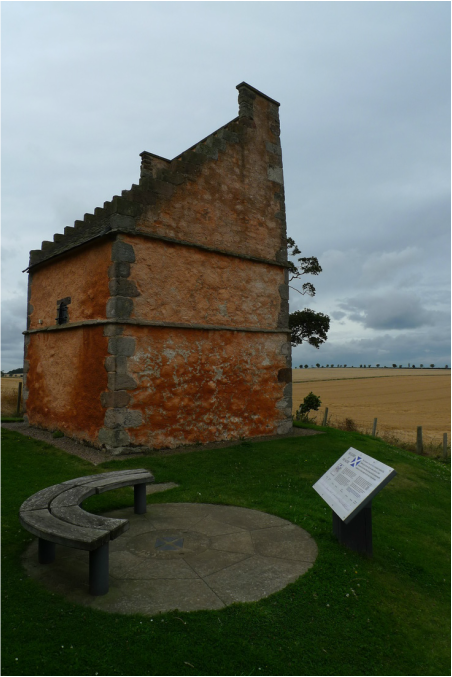 Flag Heritage Centre in Athelstaneford Flag Heritage Centre in Athelstaneford
The origins of the flag can be traced to a battle in 832. King Angus led an army of Picts and Scots against a Northumbrian army near Athelstaneford. Angus was outnumbered and the night before the battle he prayed for victory. When he went to sleep he had a dream in which Saint Andrew promised that Angus would win the battle. In the morning of the battle an unusual cloud formation appeared in the sky- a white cross against a blue sky background. Angus took this to be an omen and his army won the battle, despite being outnumbered. It will not take long to visit the village and the Flag Heritage Centre, so you may wish to add on one of the other cycle trips you can do from Drem station. How about Myreton Motor Museum? Or the National Museum of Flight.
Take a train to Drem, only 25 minutes from Edinburgh, and you will be spoilt for choice for cycling destinations. It has to be one of the best placed train stations for the number of interesting things that are easily cycled to. Top of the list is Concorde at the Museum of Flight , but there is also a motor museum and the birthplace of Scotland's national flag.
Drem Station Drem station is located within the farming landscapes of East Lothian. If you come here as a foot passenger you will find it more challenging to travel to the places I mention here. There are bus services, but a bicycle makes it easier and because the distances are short and there are few hills you don't need to be super fit to enjoy this.
I think that Drem is the prettiest of all the stations along this line. It has a stone cottage that is now a private home. You can buy free range eggs here and during one visit the owners were trying to sell a mangle.
National Museum of Flight
On leaving the station turn right and follow the B1377. The museum is well sign-posted. The road is flat, fairly quiet and it is 3.8 miles to the museum. This is farming country so you will see fields of enticing produce:
You will also see some of the typical East Lothian rows of cottages:
At the Museum of Flight you can board Concorde and visit the passenger cabin and view the cockpit.
"I'm still impressed to think of all those people having their roast beef and champagne behind you while you're cruising at a speed slightly faster than a rifle bullet." Brian Tubshaw, Concorde test pilot.
Concorde could travel from London to New York in 3.5 hours. It took 4 hours longer to travel on a normal airliner. There was and still is no faster way to travel by plane. The Concorde experience was exclusive to the rich and famous and a ticket was beyond the average person, so being able to see the inside of this aircraft is quite a special experience. Whereas most of us could only dream of flying in this aircraft once in a lifetime, some people could afford to use it as standard transportation. Rod Stewart once flew over his stylist to America to sort out a haircut that went wrong and one wealthy New York socialite paid £2,500 to fly over a favourite box of Mayfair chocolates so that she could have them at a party. Concorde's last flight was in 2003, but the aircraft still looks like something from the future. It is incredible that something that could fly this fast will never take off again and that there is nothing to replace it, but there were several factors that led to its retirement- a Concorde had crashed in 2000, there was a general slump in the aviation industry and maintenance costs were huge. The museum tells the story of this remarkable aircraft with displays and memorabilia, but there is a lot more to the Museum of Flight than Concorde. The site is huge and there are several hangers full of aircraft.
You could easily spend a day at the museum, so there might not be time to cycle to the other attractions near Drem station. Why not return to Drem station again and do one of the other cycle trips that begin at the station?
Part two of this blog will cover the cycle from Drem station to Myreton Motor Museum. National Museum of Flight is located in East Fortune. It has an entry charge and a café. For a winter warm up cycle route in the Edinburgh area the Union Canal is perfect. A cycling and walking path runs alongside the canal. It is flat and traffic-free, so ideal if you are looking for something uncomplicated to get the legs moving. The Union Canal, completed in 1822, is 31.5 miles long so there is the option to go very far. In fact, it links up with the Forth and Clyde Canal at Falkirk, so that you can cycle all the way from Edinburgh to Glasgow. If you live locally to the canal, as I do, you can take shorter journeys and then head back the way you came. Even a short excursion along the canal will provide plenty of things to see. Some parts of the route are quite urban in appearance as it passes through several housing estates: The community garden at Wester Hailes is a nice spot for a picnic, perhaps on a warmer day. Notice the old canoe being used as a flower planter: Some parts of the canal had bits of ice, not yet melted from last night's freezing temperatures. Being so close to Christmas I saw some children enjoying their new presents. One family were setting up a remote control helicopter at a playground and on a football field a boy was riding around on a mini motorcycle. There are many bridges crossing the canal that you must pass beneath. Some of them are recent additions and others are old stone bridges: Sometimes the canal crosses over roads or water on a viaduct. This is the Scott Russell Aqueduct which passes over the Edinburgh City Bypass: The path is popular with other cyclists, dog walkers, runners, fishermen and families out for a stroll, but the further away you get from the city centre the quieter it becomes. For much of my route the predominant sound was the Edinburgh City Bypass traffic, but there are little pockets of wooded areas where there is birdsong and ducks pocking their heads under the surface of the canal. So, if you live along the Union Canal it is great for an easy cycle run, particularly at this time of year when it is cold and the days are shorter meaning it is more of a challenge to go further afield.
It may surprise you to know that I don't cycle to work. Although it is the most obvious way to make regular use of my bike I only ever use it for adventures on days away and overnight trips. But today I tried cycle commuting for the first time. Like many people the reason that I have not cycled to work until now is that I did not fancy being amongst Edinburgh's horrendous rush hour traffic. According to Autocar Edinburgh is the fifth most congested city in Europe. My love of cycling is about it being an enjoyable way to travel- grappling with high levels of traffic is not my idea of fun. For the last few weeks I began to notice a potential low-traffic route to work. I cycled parts of it, walked it and rehearsed it in my mind. It is not the most direct route, but it avoids some of the busy roads and the majority of it is actually completely traffic-free. This is the cycle pathways in the Meadows, the green heart of Edinburgh. These pathways are wonderful- wide enough for bikes to travel in both directions and a separate section for pedestrians. I think this is easily the best cycling infrastructure in the city and the closest we have to the wonderful cycle networks they have in Copenhagen. The other great thing about the Meadows is that you are cycling among trees, grass and birdsong. You could not ask for more in a morning commute.
This morning I gave it a go and it went very well. I really enjoyed it. I was travelling quite early in the morning, before the rush hour kicks off, so it was probably a lot easier than if I was cycling after 8am. The last section is on potentially busy roads, but earlier in the morning they are a lot simpler to tackle. The Meadows path ends at Forrest Road where there is a cycle lane, but I then have to move out of this cycle lane in order to turn right onto Chambers Street. As a pedestrian I observed this section of my route in rush hour traffic and it made me nervous. I decided that if it was very busy there was no shame in getting off my bike and wheeling it along the pavement and crossing the road on foot, but I did not have to do that today- it was nice and quiet. Would I do it again? If the weather is good tomorrow I probably will. I enjoyed it and would like to make it a regular thing. I am not too sure about tackling it at peak commuting time and may just stick to cycling on the days that I start work earlier. We shall see what tomorrow brings... Edinburgh has two mainline train stations. The more famous Edinburgh Waverley where the majority of visitors to the city get on and off trains. Then there is the lesser-known Haymarket which is more convenient for the west of the city. It recently had a £25 million redevelopment which I think is worth celebrating.
The journey time between Haymarket and Waverley is only four minutes, so I used to wonder what the benefit was in having two stations in the city. That was before I lived in Edinburgh and now that this is my home I find that Haymarket was my best option for catching a train. For several years my flat was a ten minute walk, or 5 minute cycle, from Haymarket so it was very convenient for starting out on my trips. It meant avoiding the busy roads that I would have to take if Waverley was the only train station. The main disadvantage of Haymarket, for a cyclist, used to be the lack of lifts to the platforms. Carrying my bike, fully loaded with panniers for a weekend trip, down those stairs was a real test of strength. Some lifts were eventually installed, but they did not serve all of the platforms. Inevitably, when returning home and feeling tired after lots of cycling and a long train journey I always seemed to arrive at one of the platforms with no lift. I would summons up my reserves of energy and haul my bike up the steps. I always thought that it must be worse for visitors to the city who do not know this and arrive with their bicycle, or luggage, at Haymarket pacing up and down the platform looking for a lift that does not exist. That all changed with the redevelopment of Haymarket. There are now lifts to all platforms and the station has a spacious modern look. The main concourse almost feels too big as it never fills up with people, but this is because the station has been built with future growth in mind. Passenger numbers are expected to climb from the current four million a year to 10 million by 2030. It feels a little soulless and lacking in the atmosphere and excitement that you get at Waverley station. There is a coffee kiosk in one corner and a Marks and Spencer food outlet, but I feel that they could have made more out of the original 1842 station building. It has wonderful tall windows on the upper floors and this could have been a great location for a cafe with views of both the concourse and the street, perhaps a grand cafe that stations of the steam age would have had. But, I am a romantic when it comes to such things. The main thing is that Haymarket is a station for the 21st century that services the demands of the modern railway passenger, including those with bicycles. |
|

